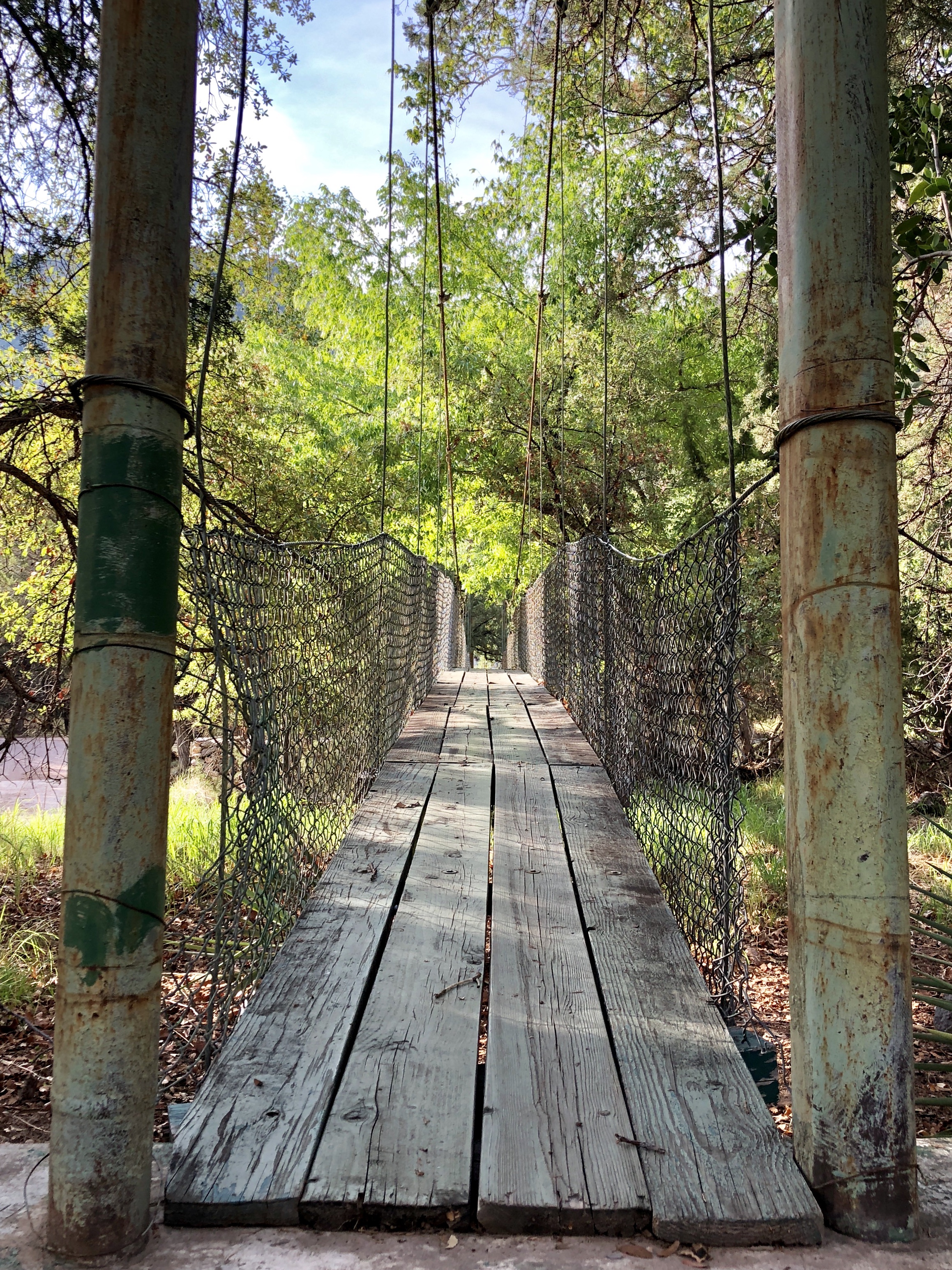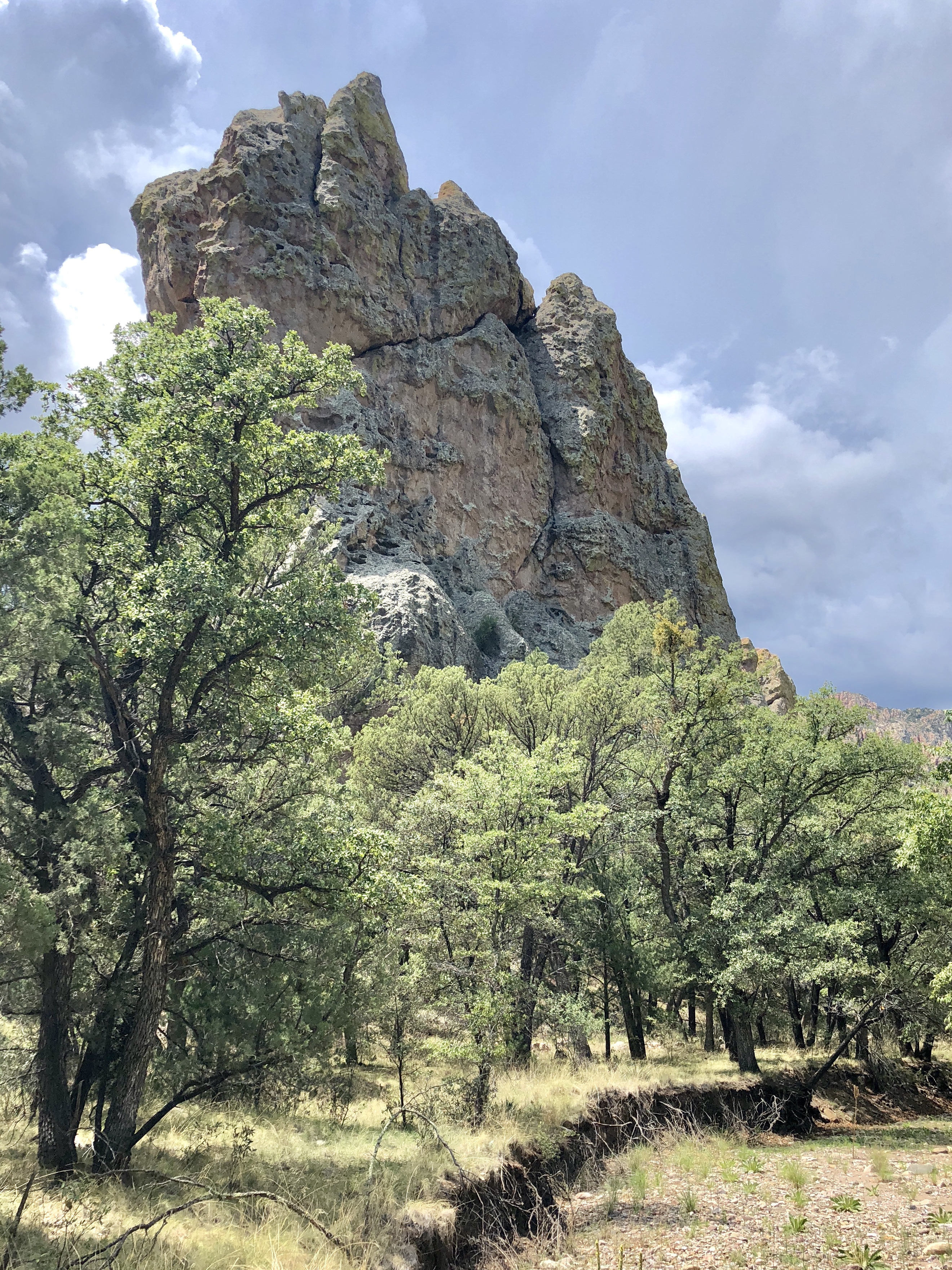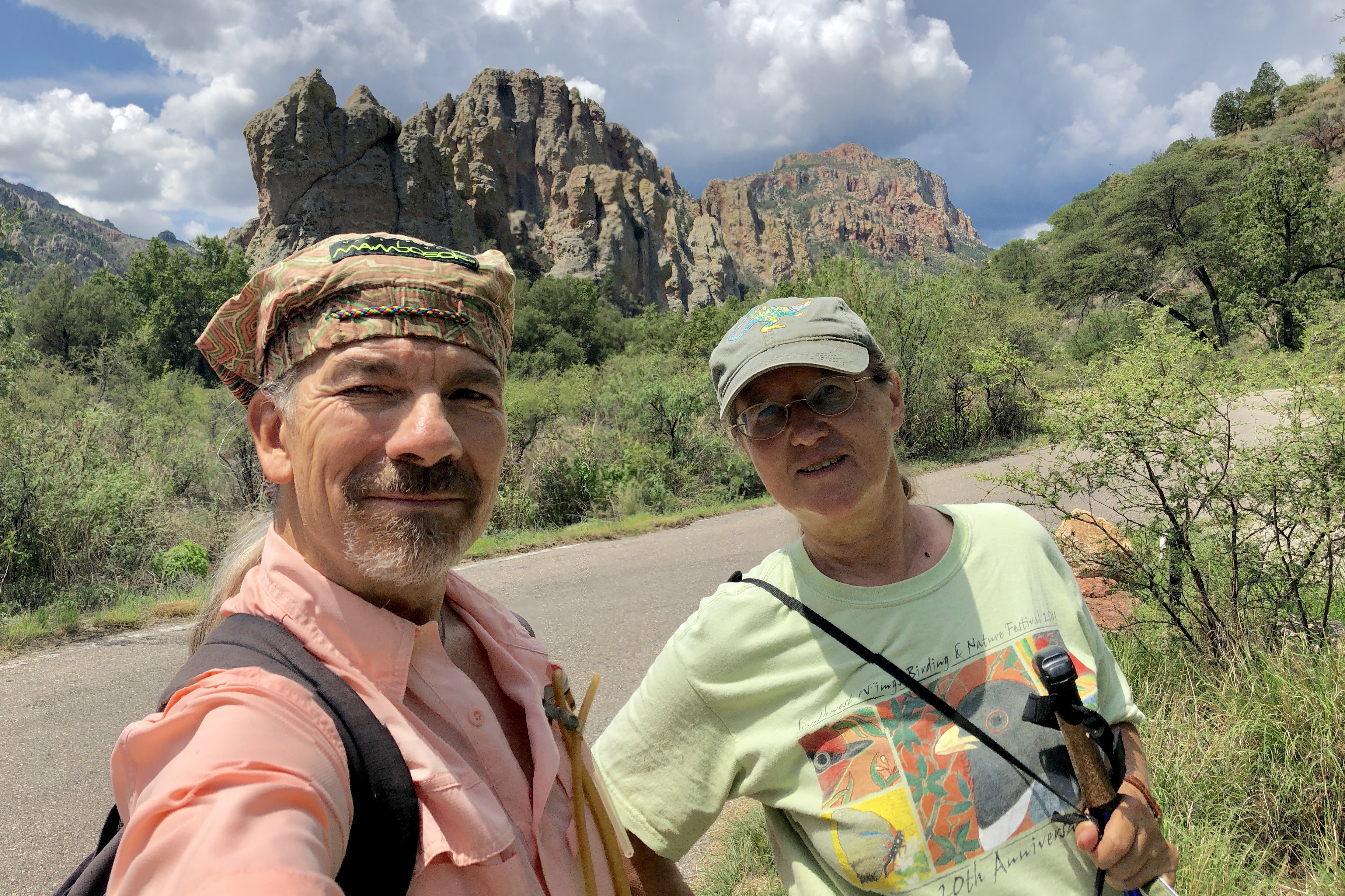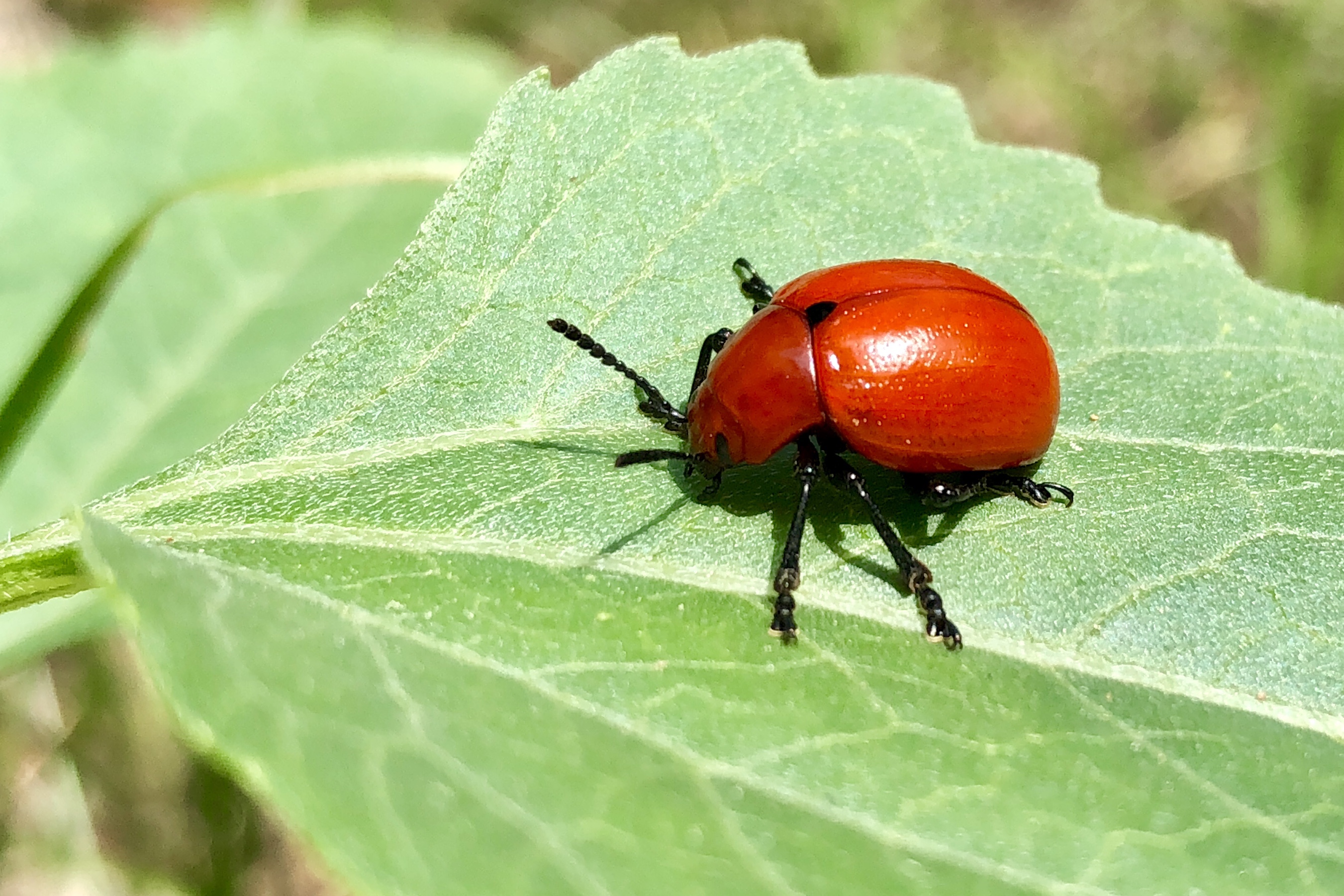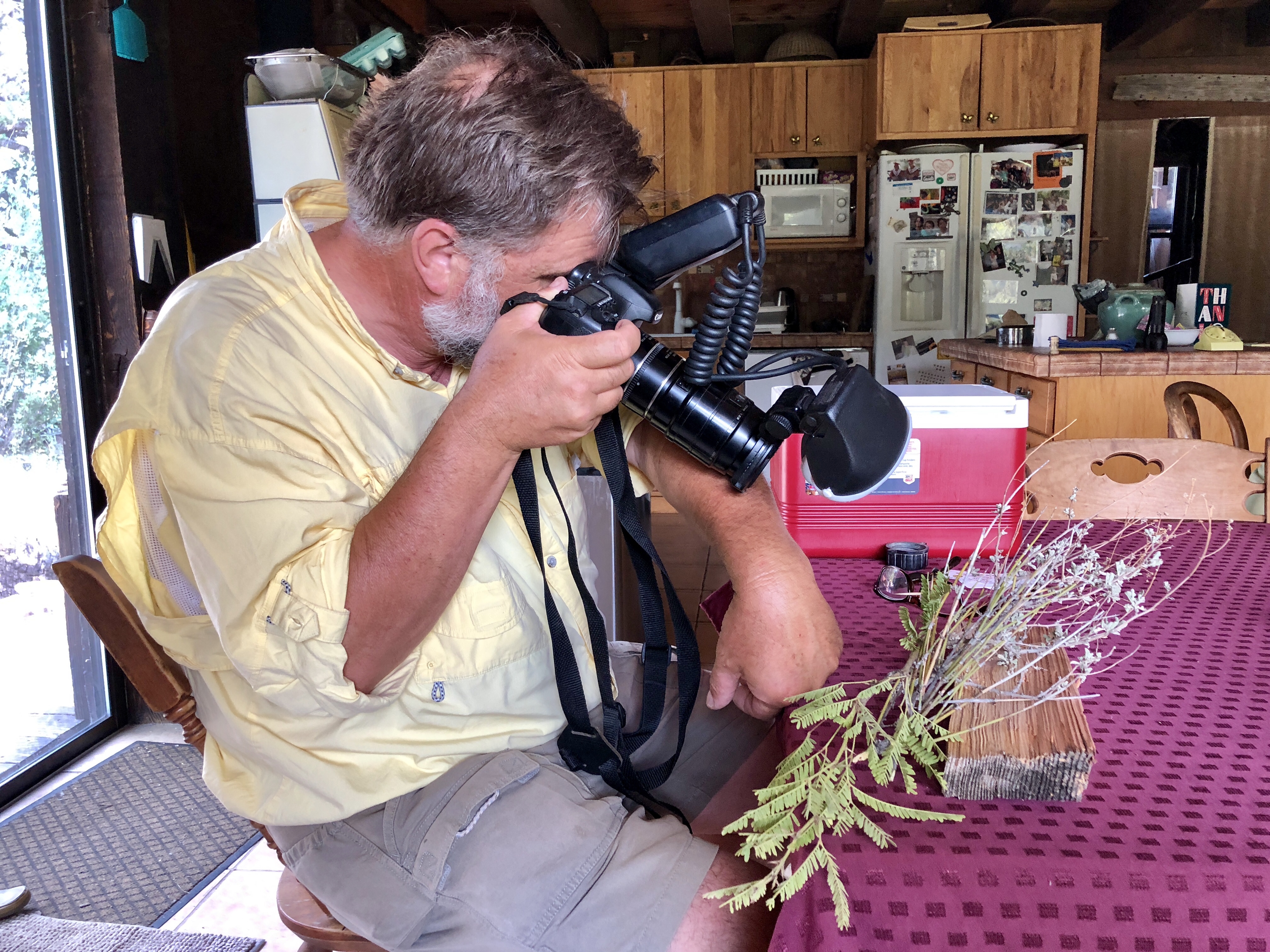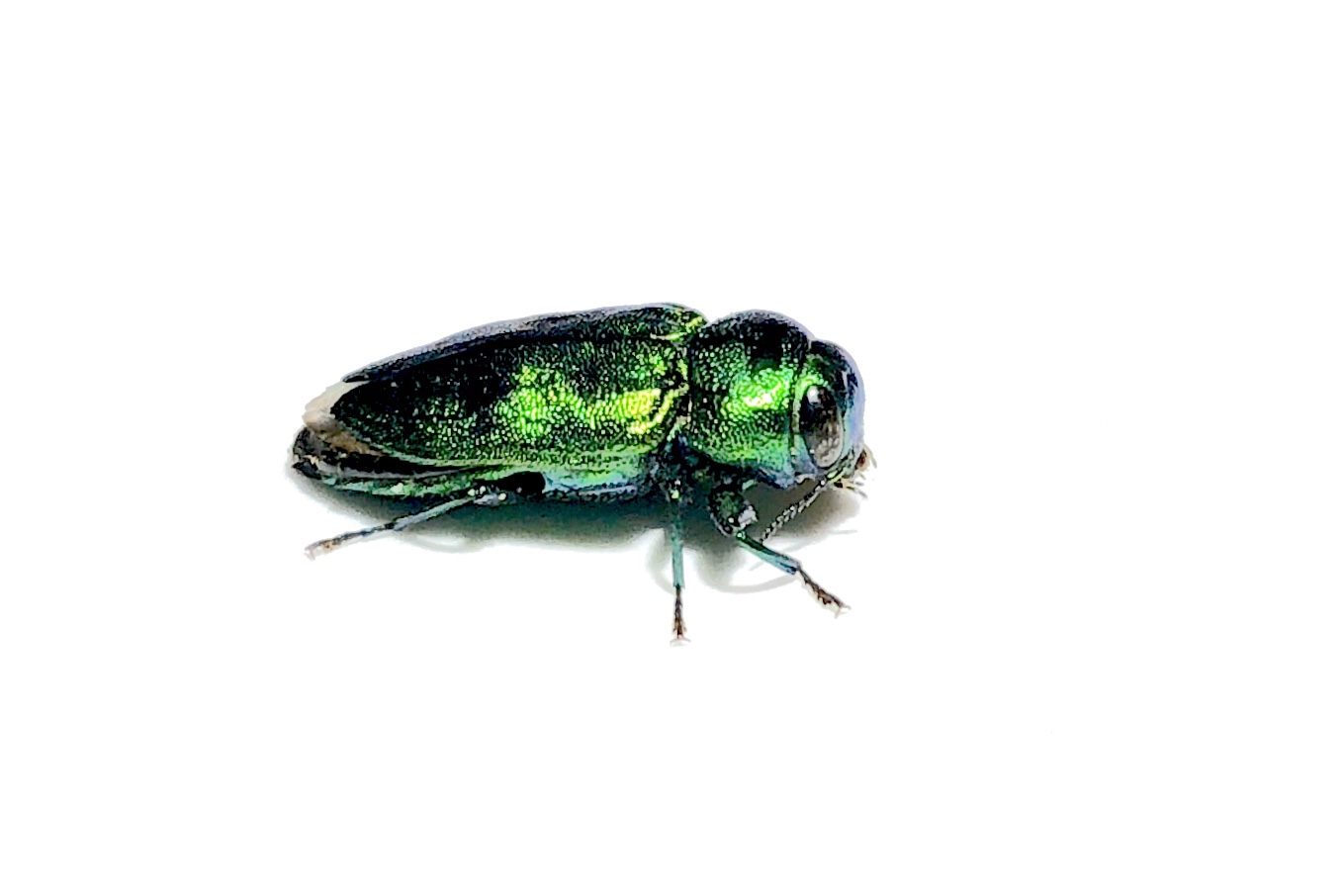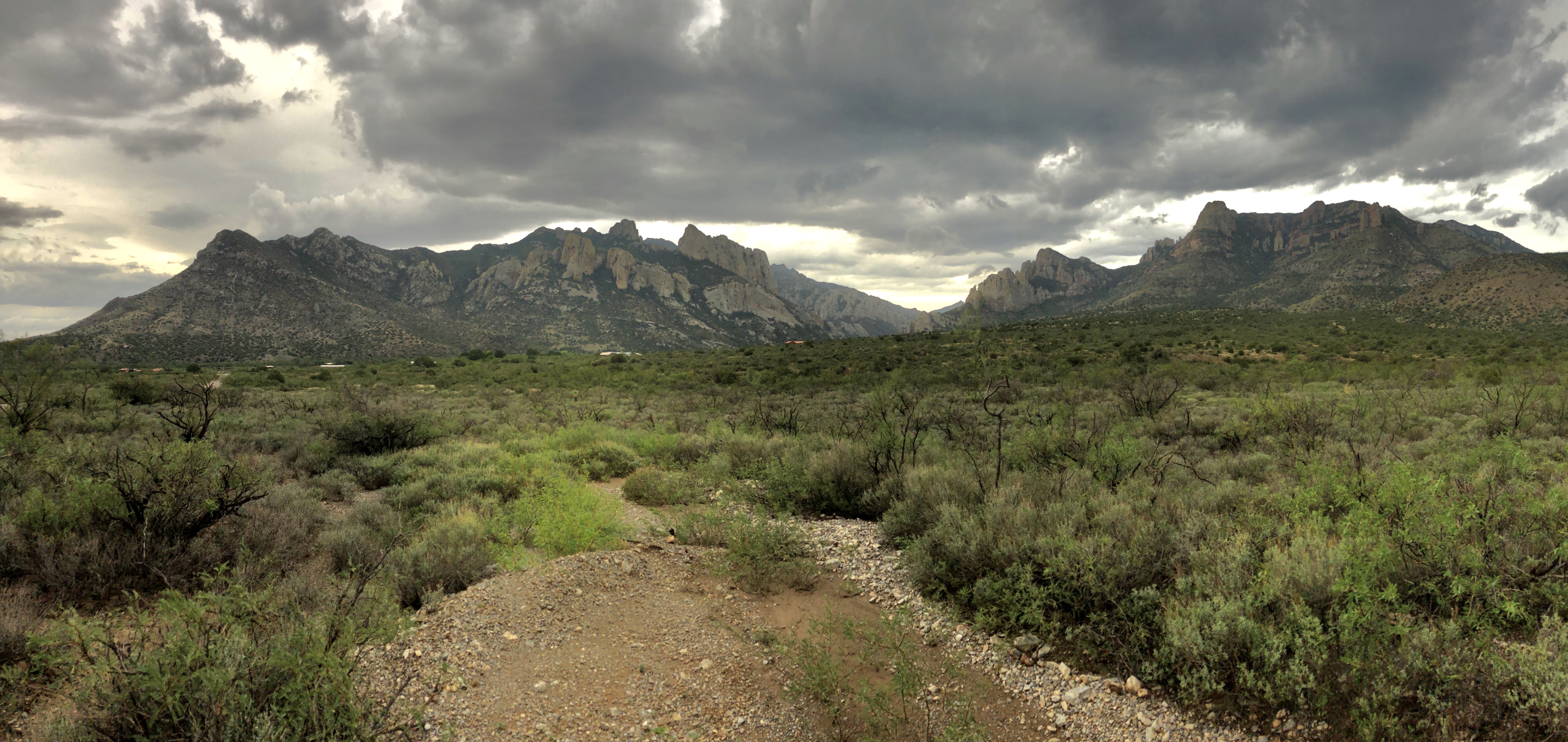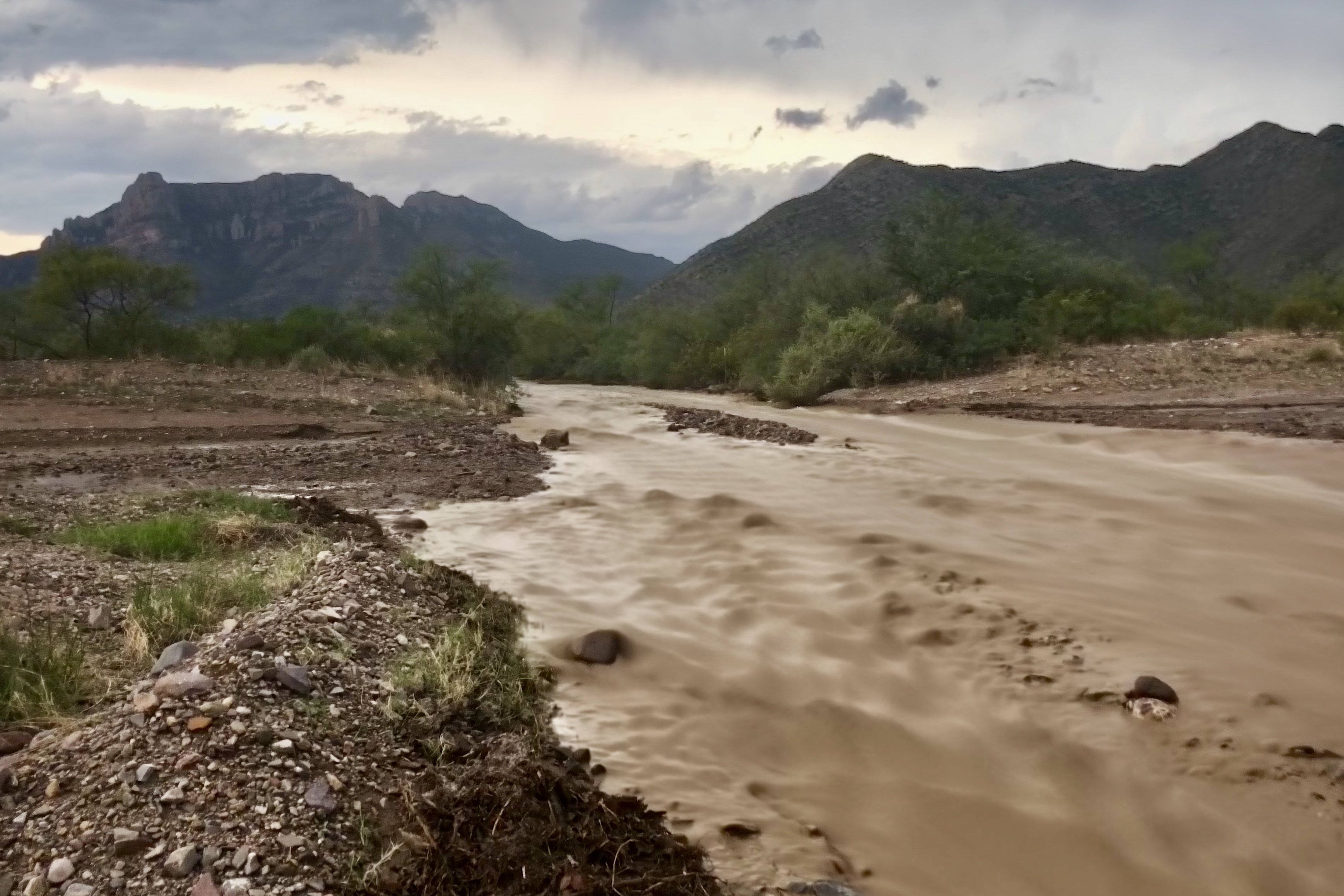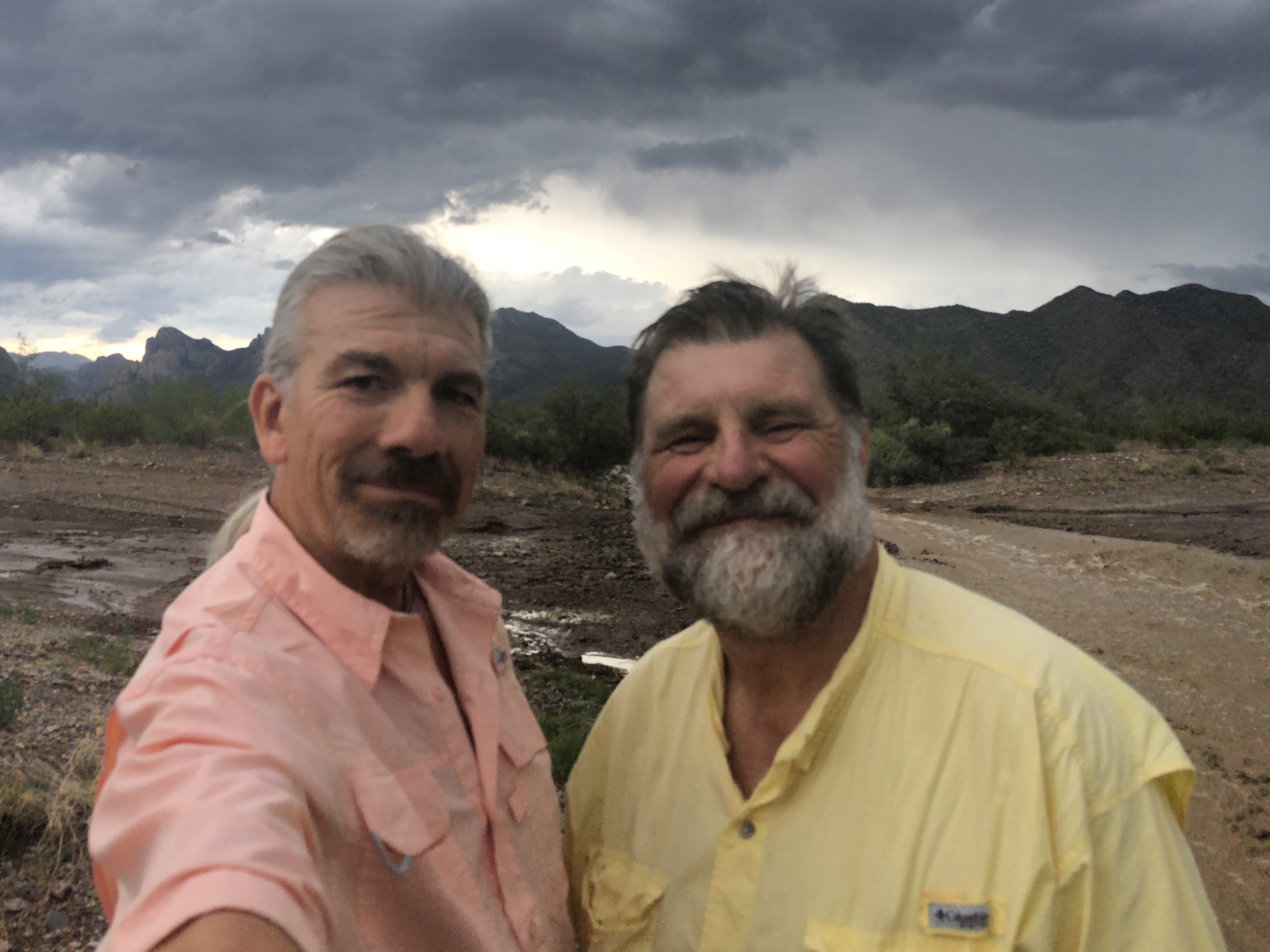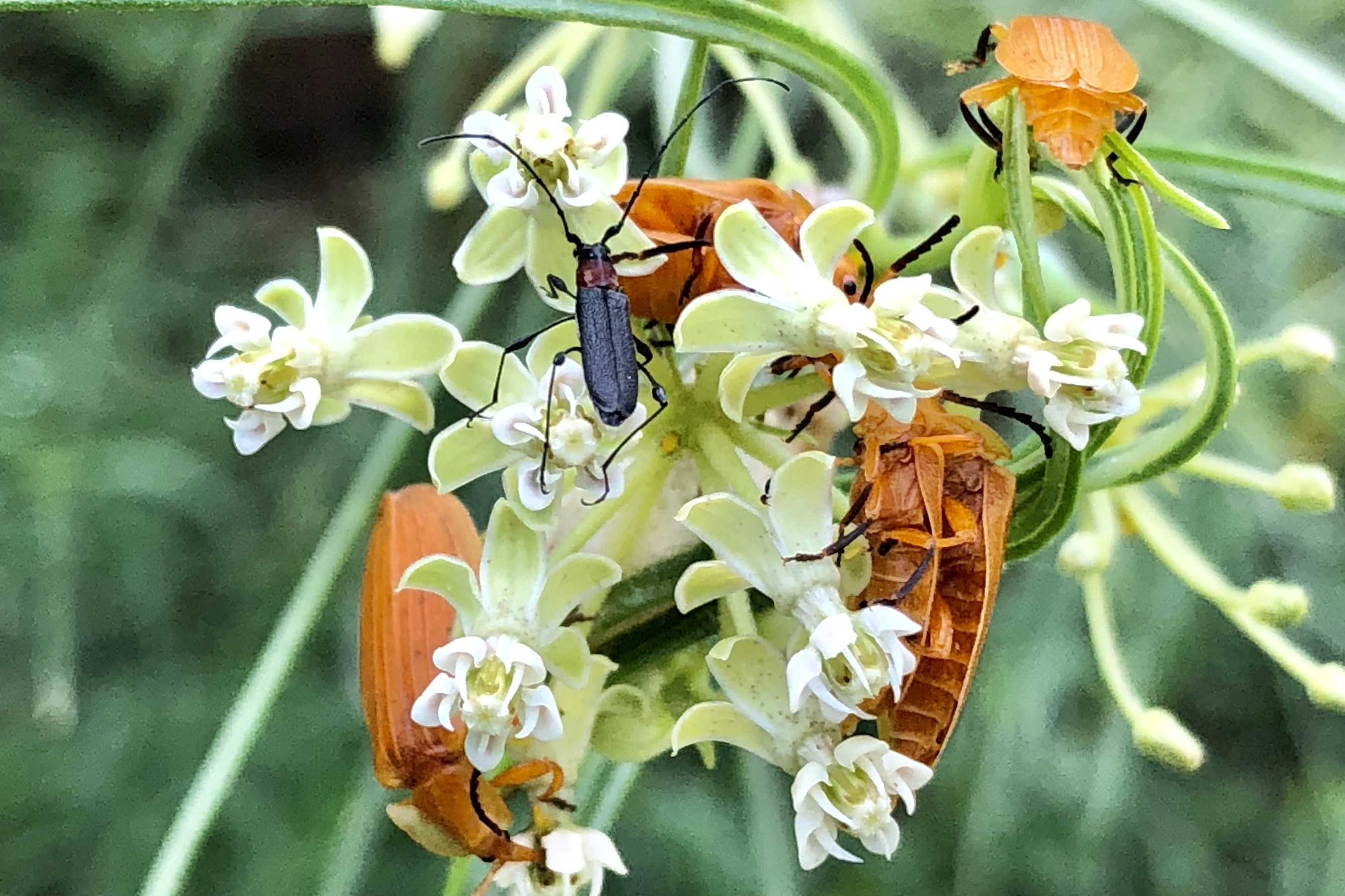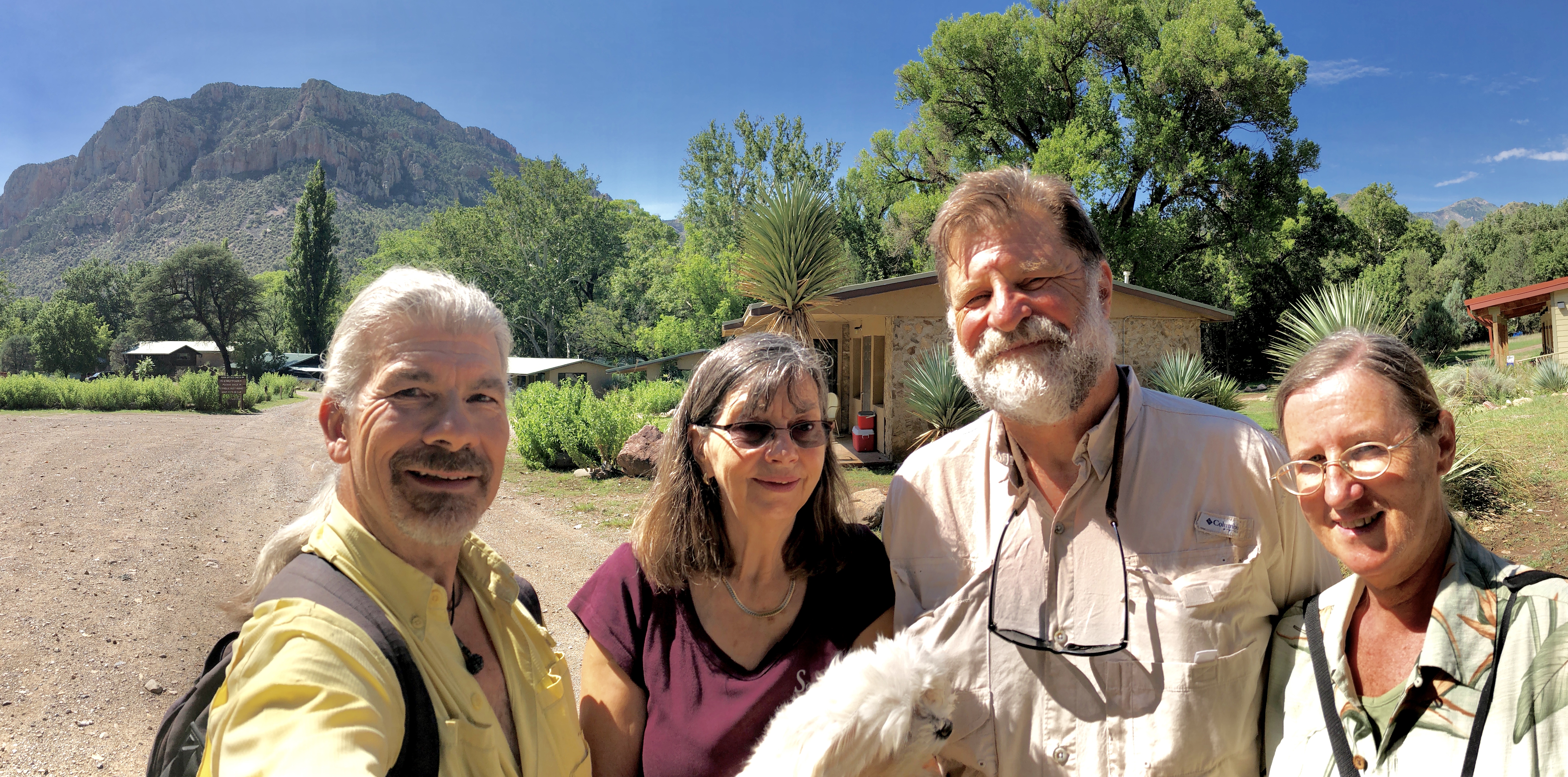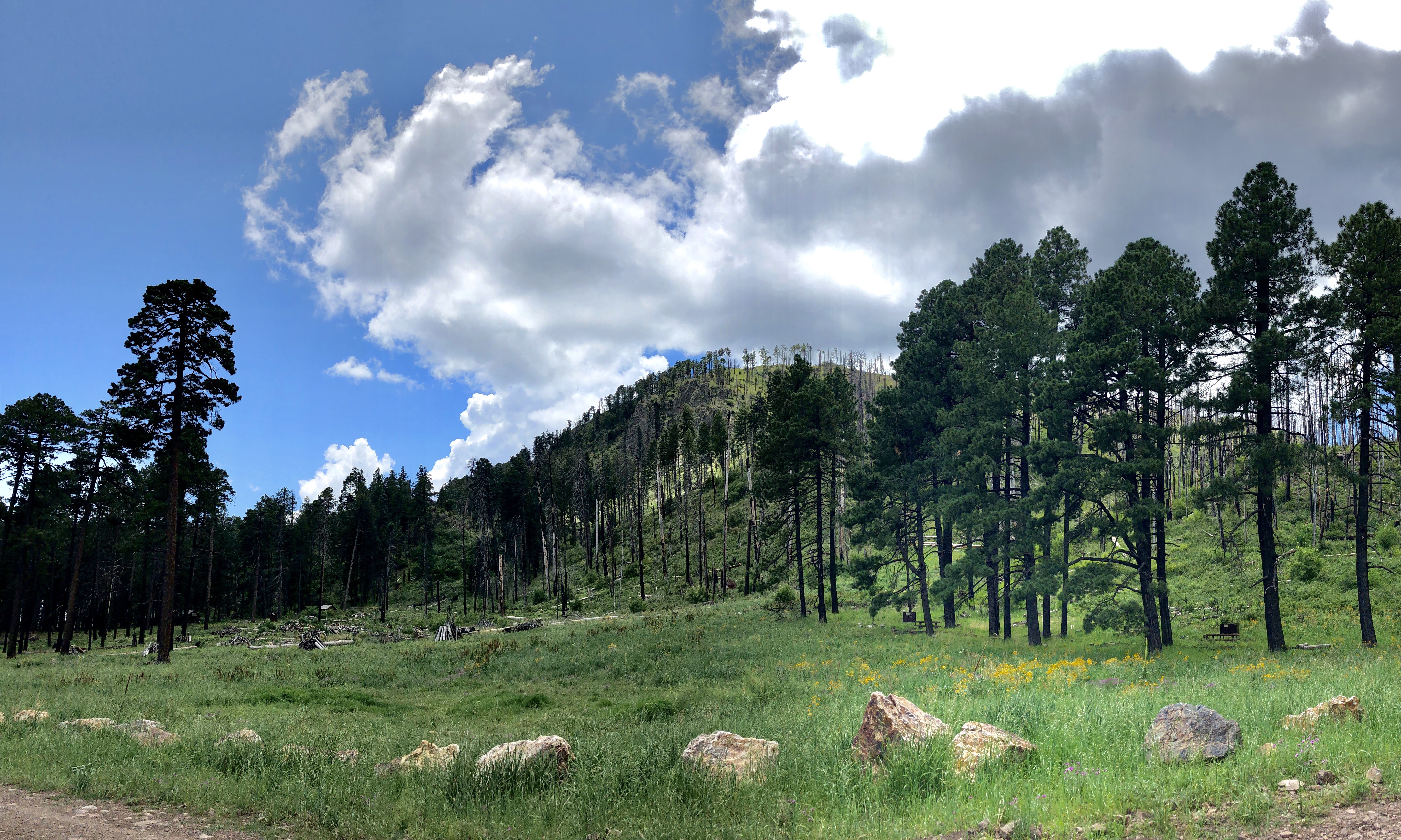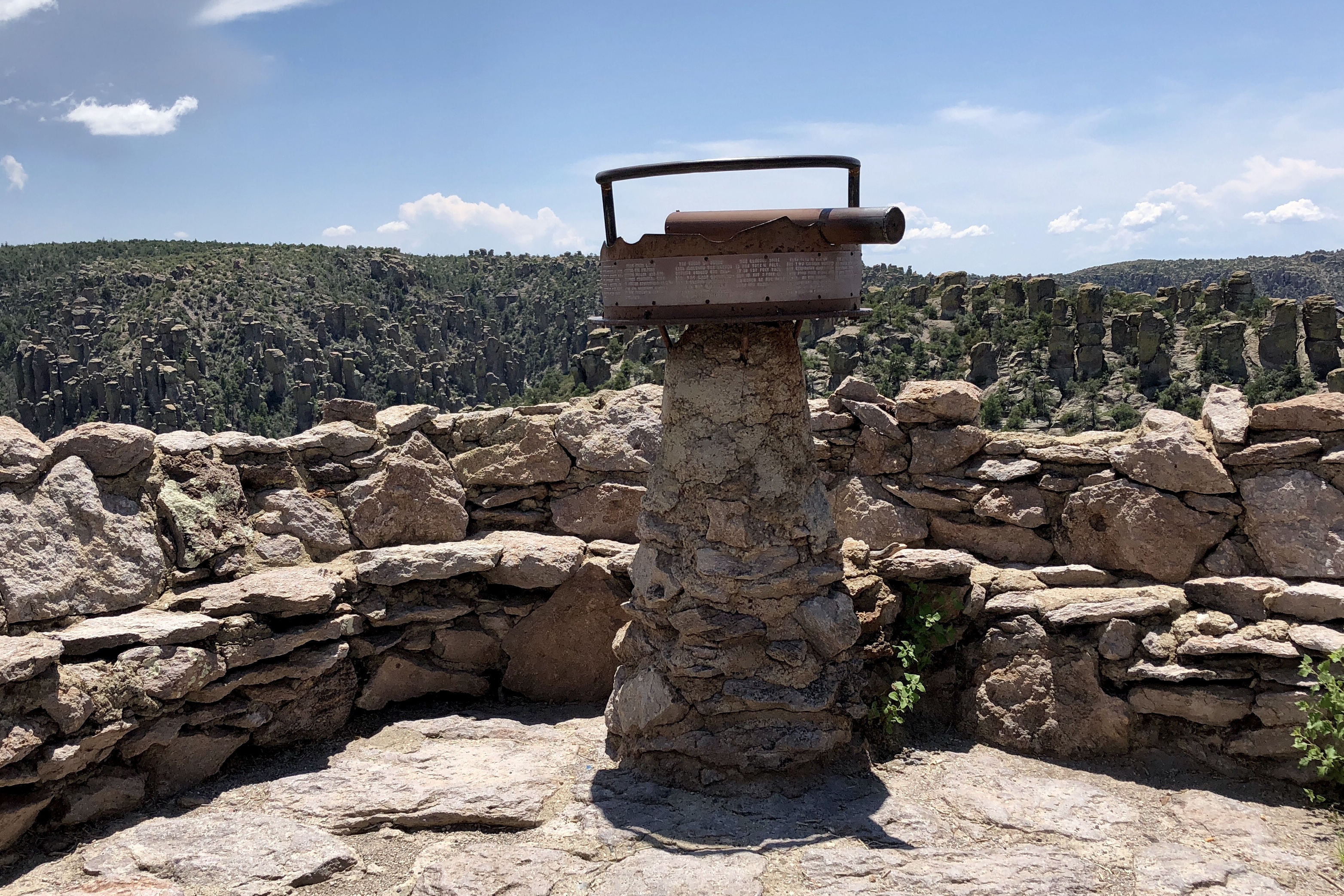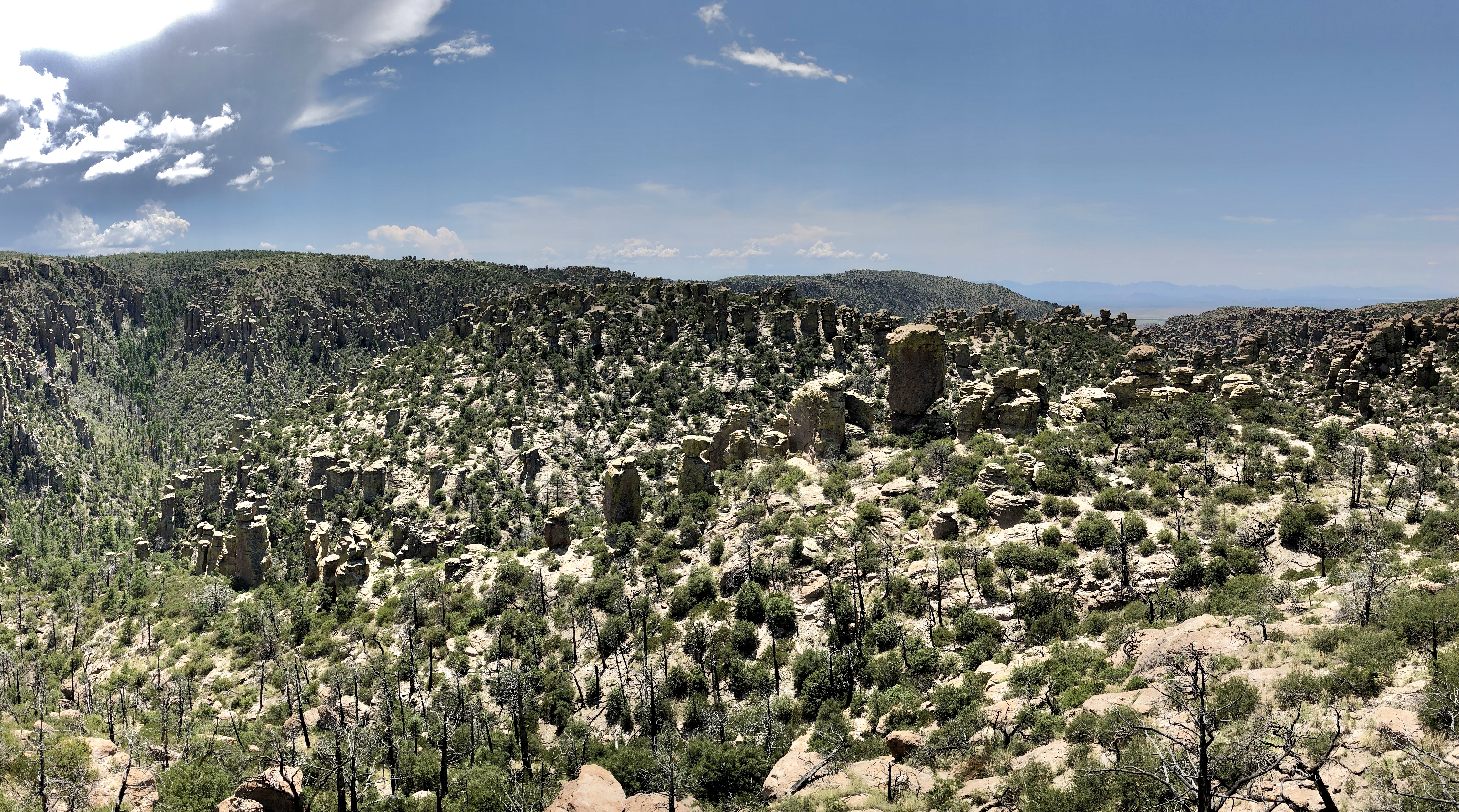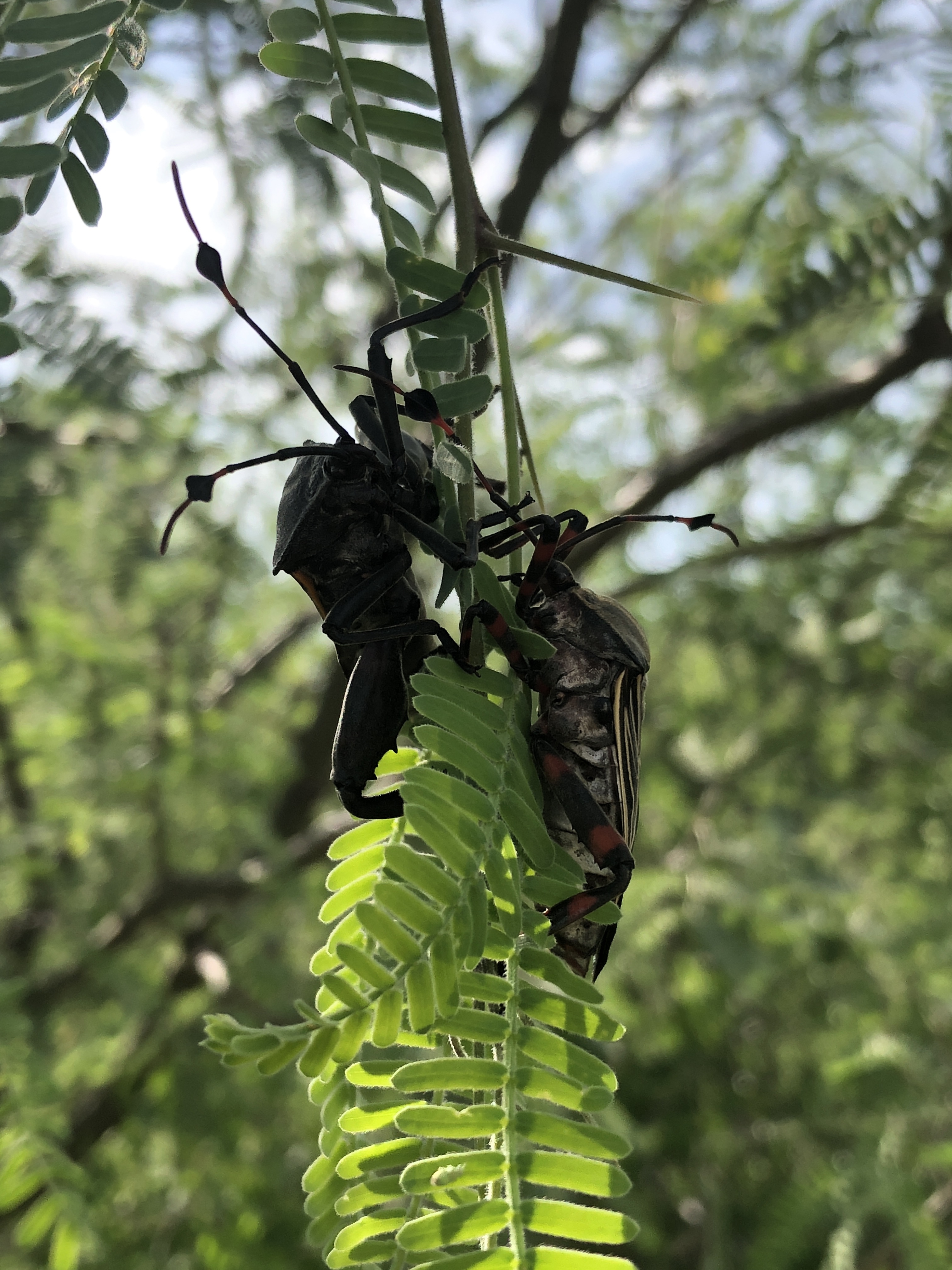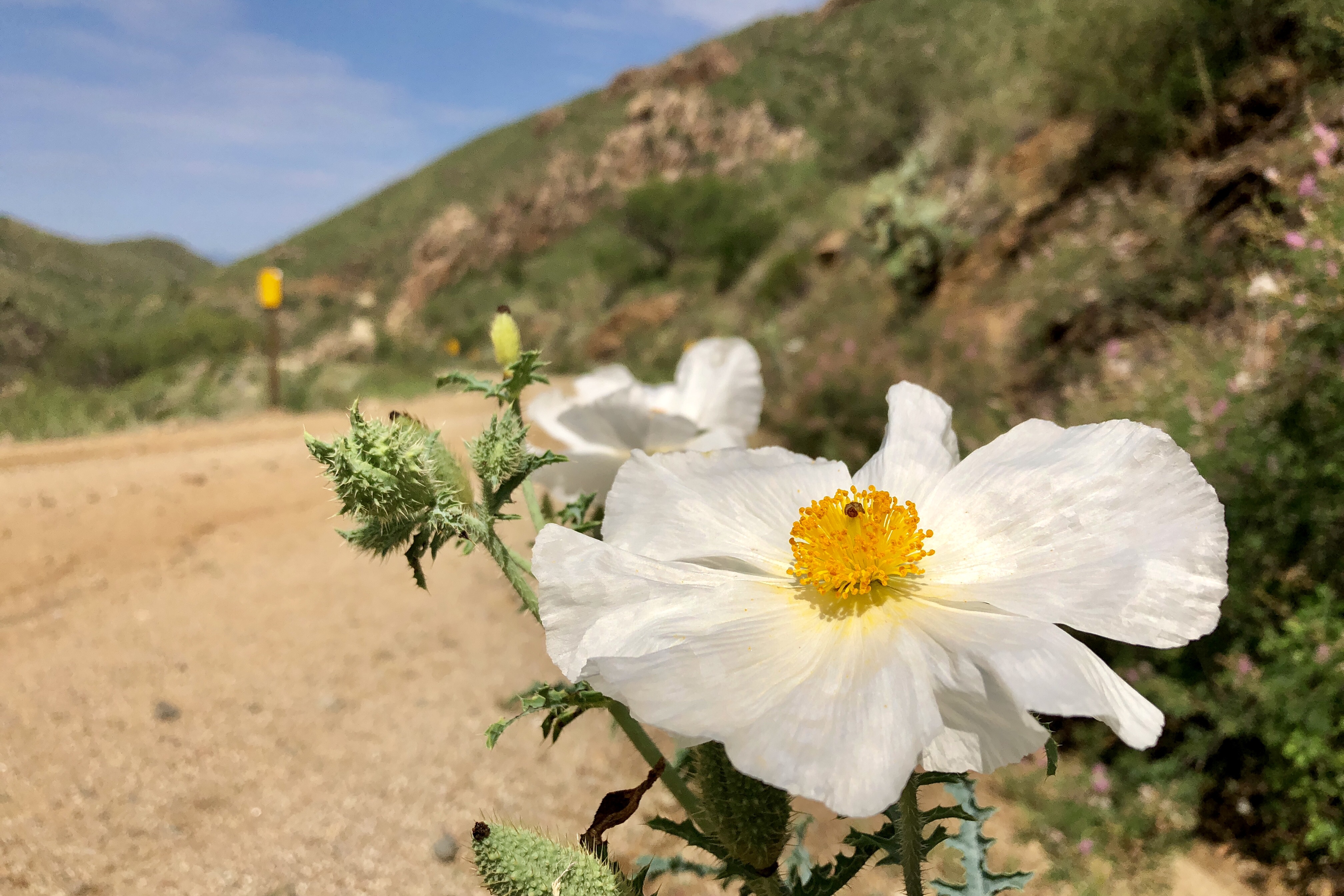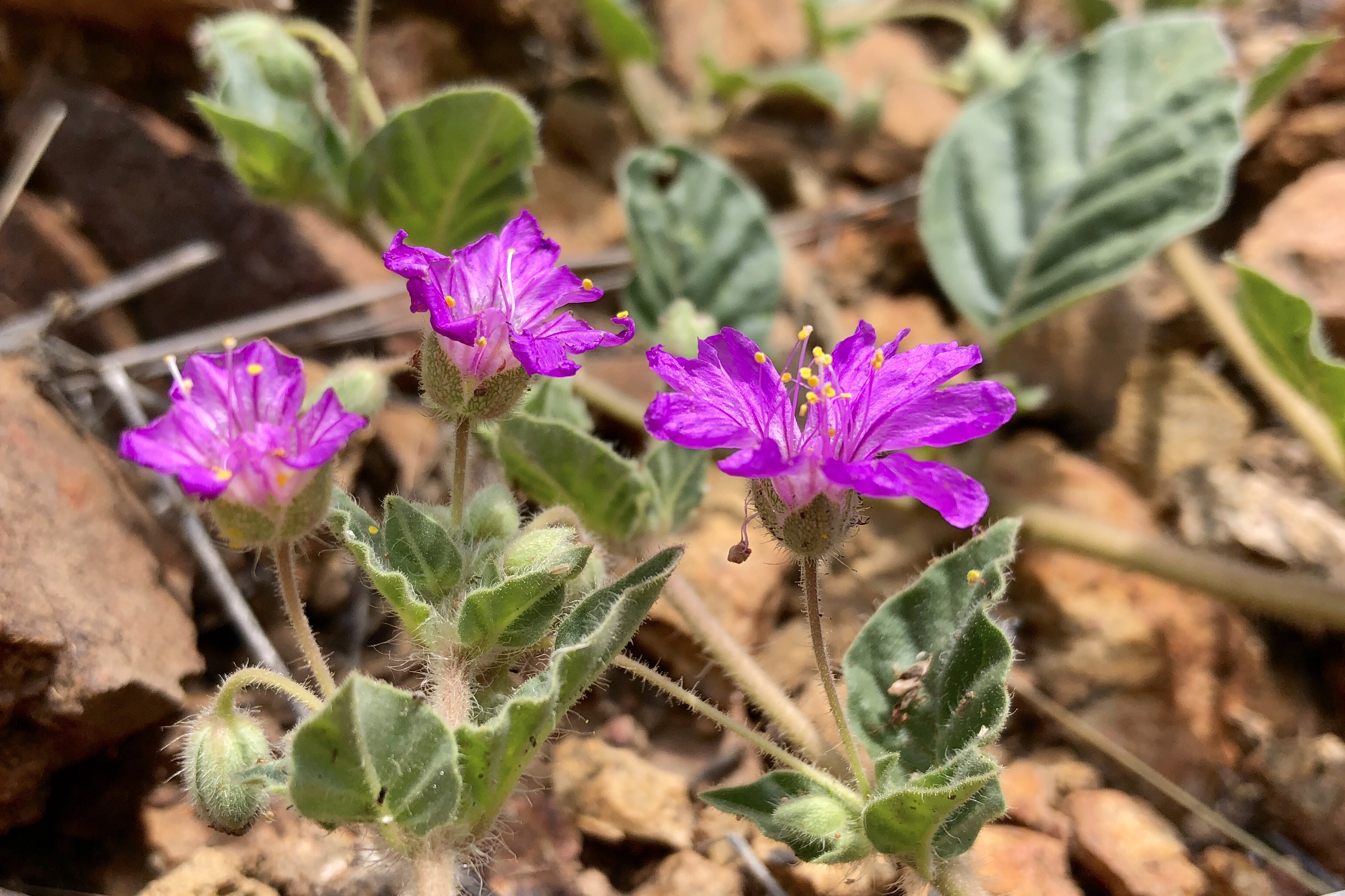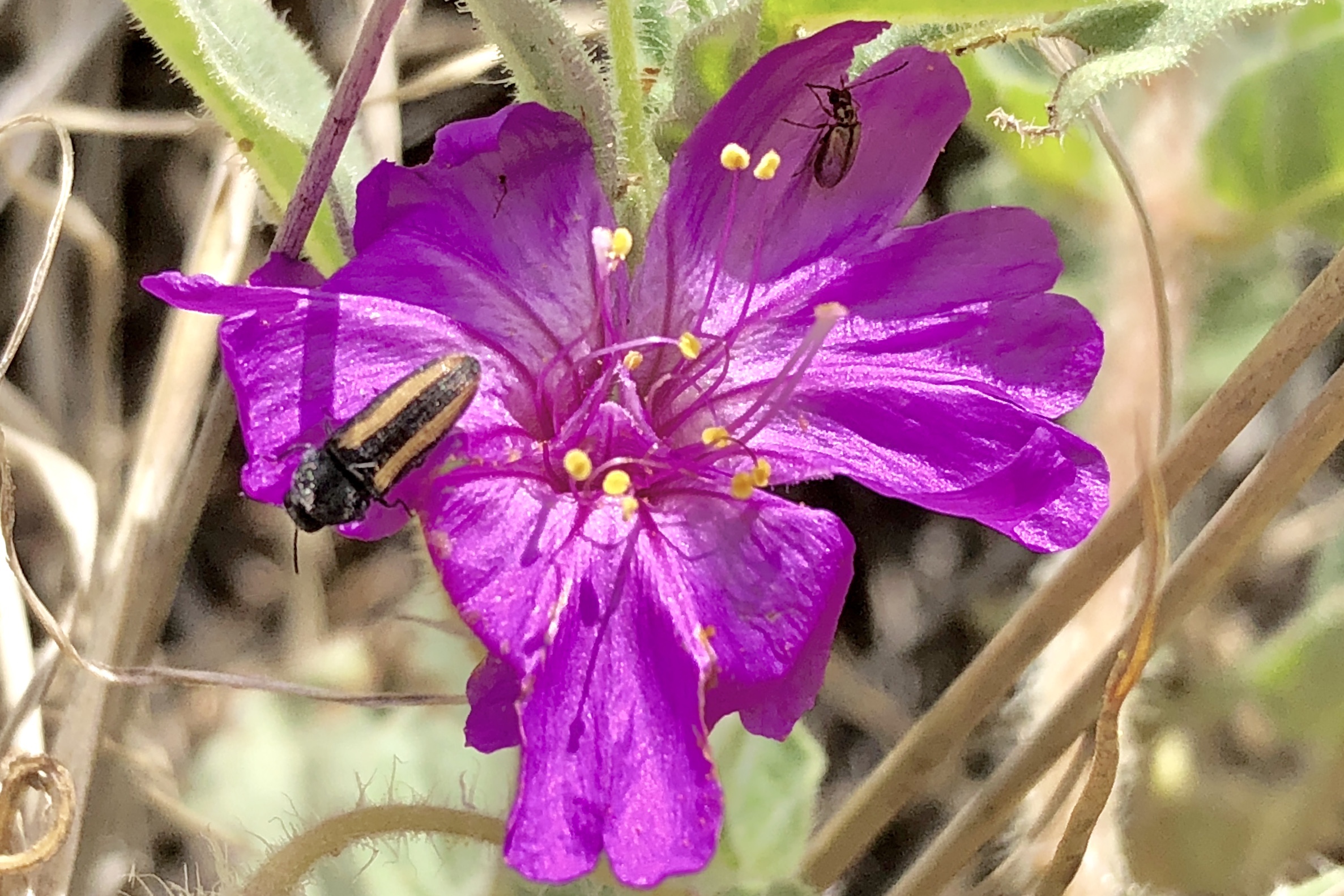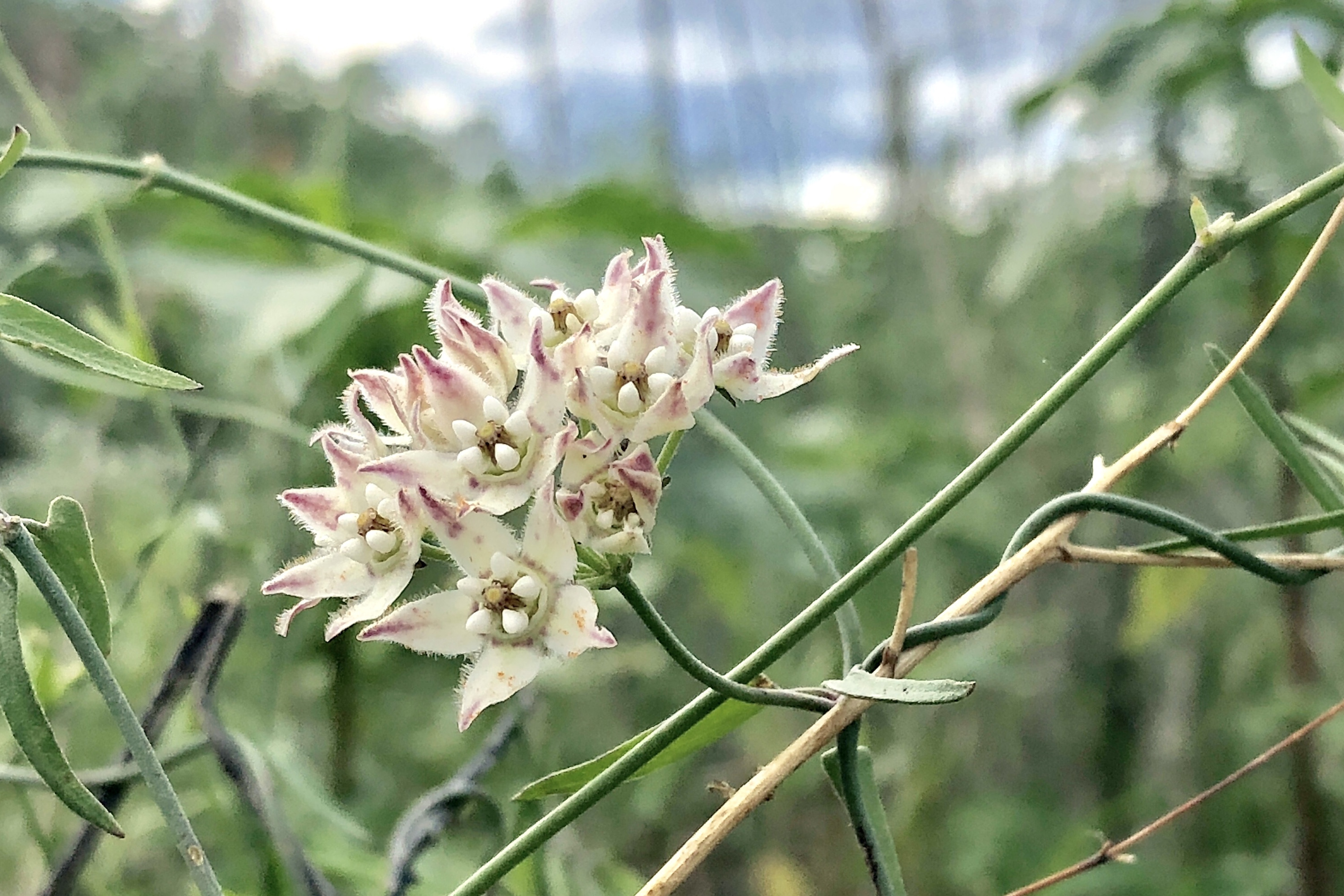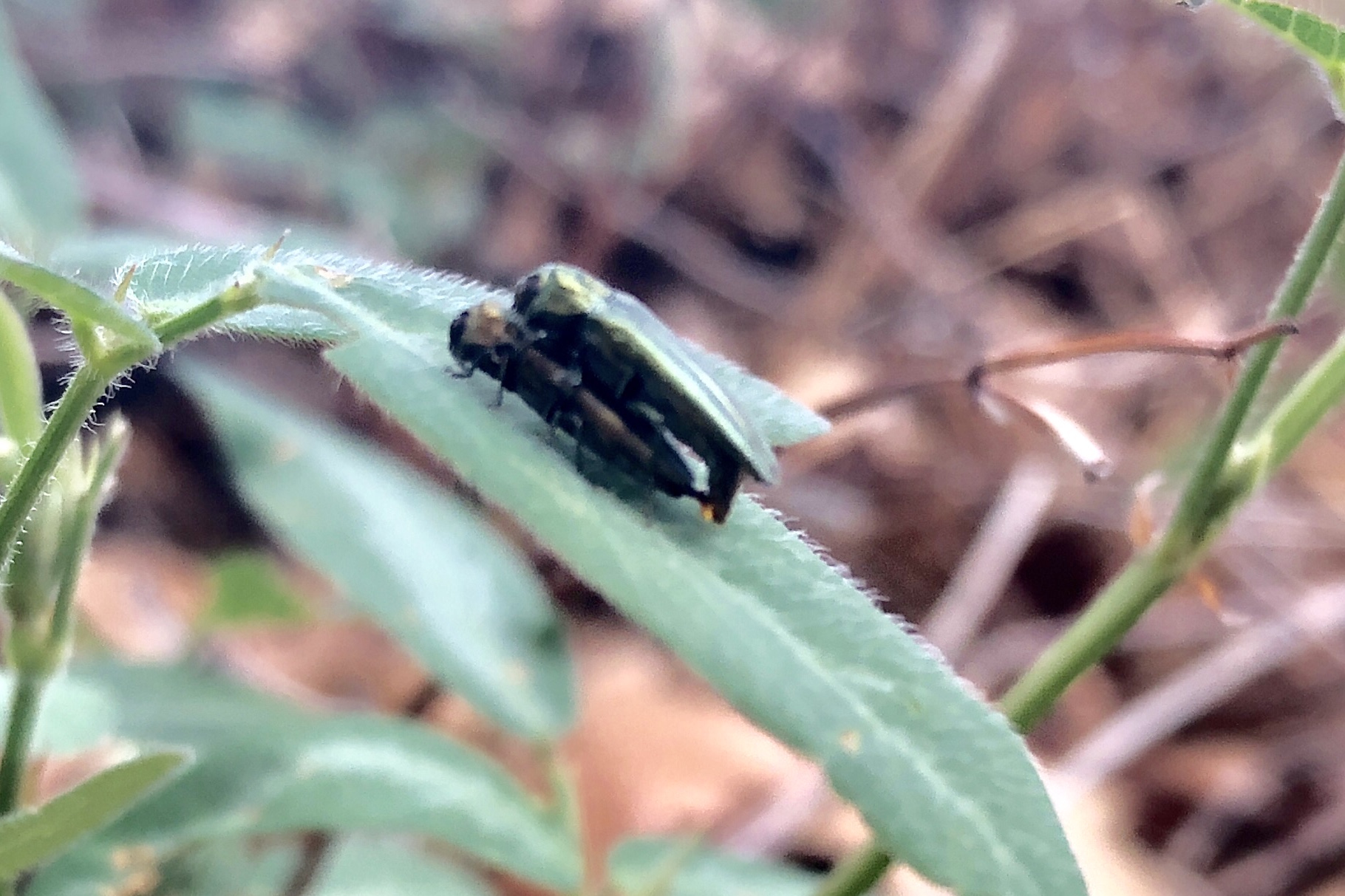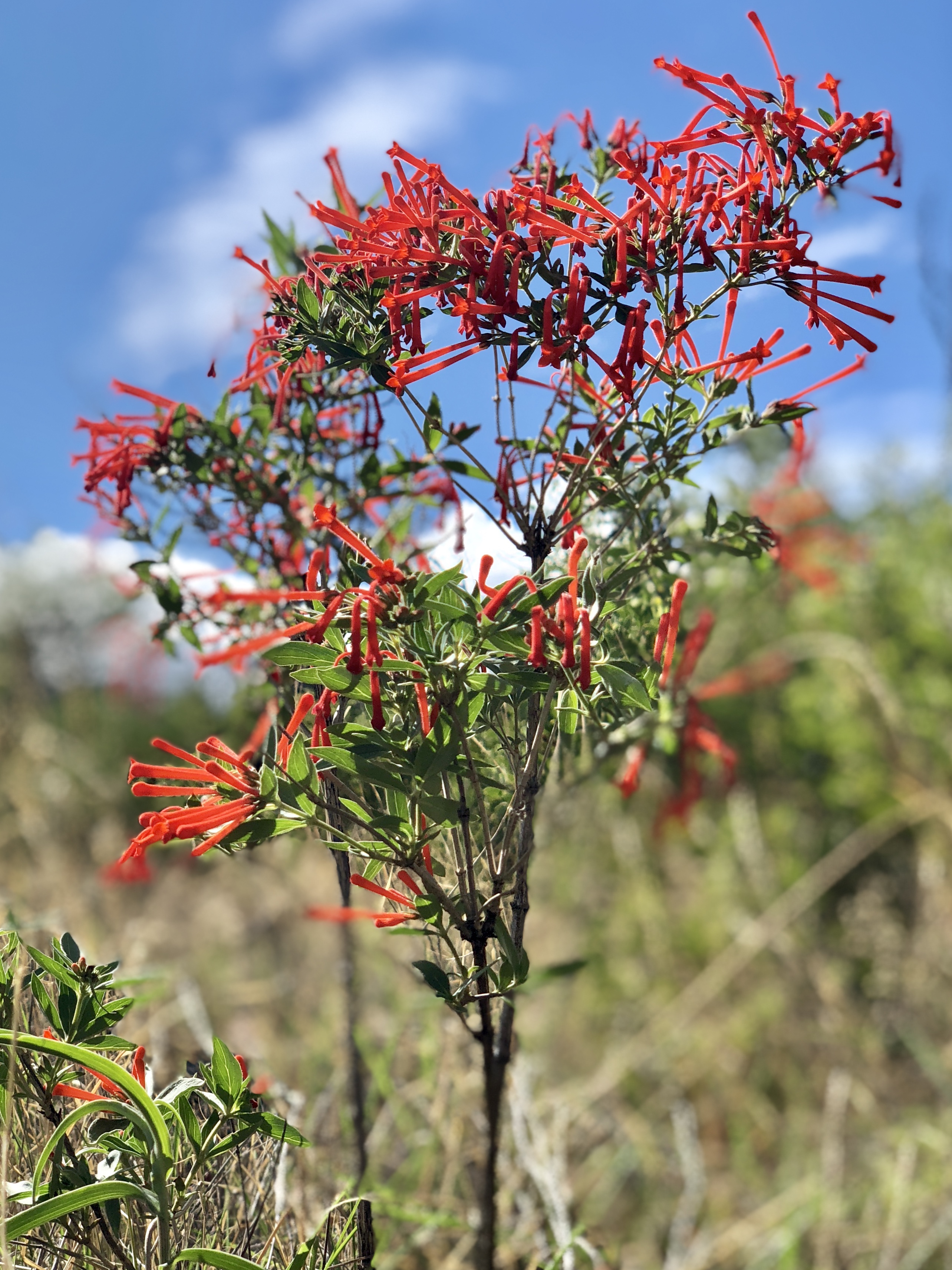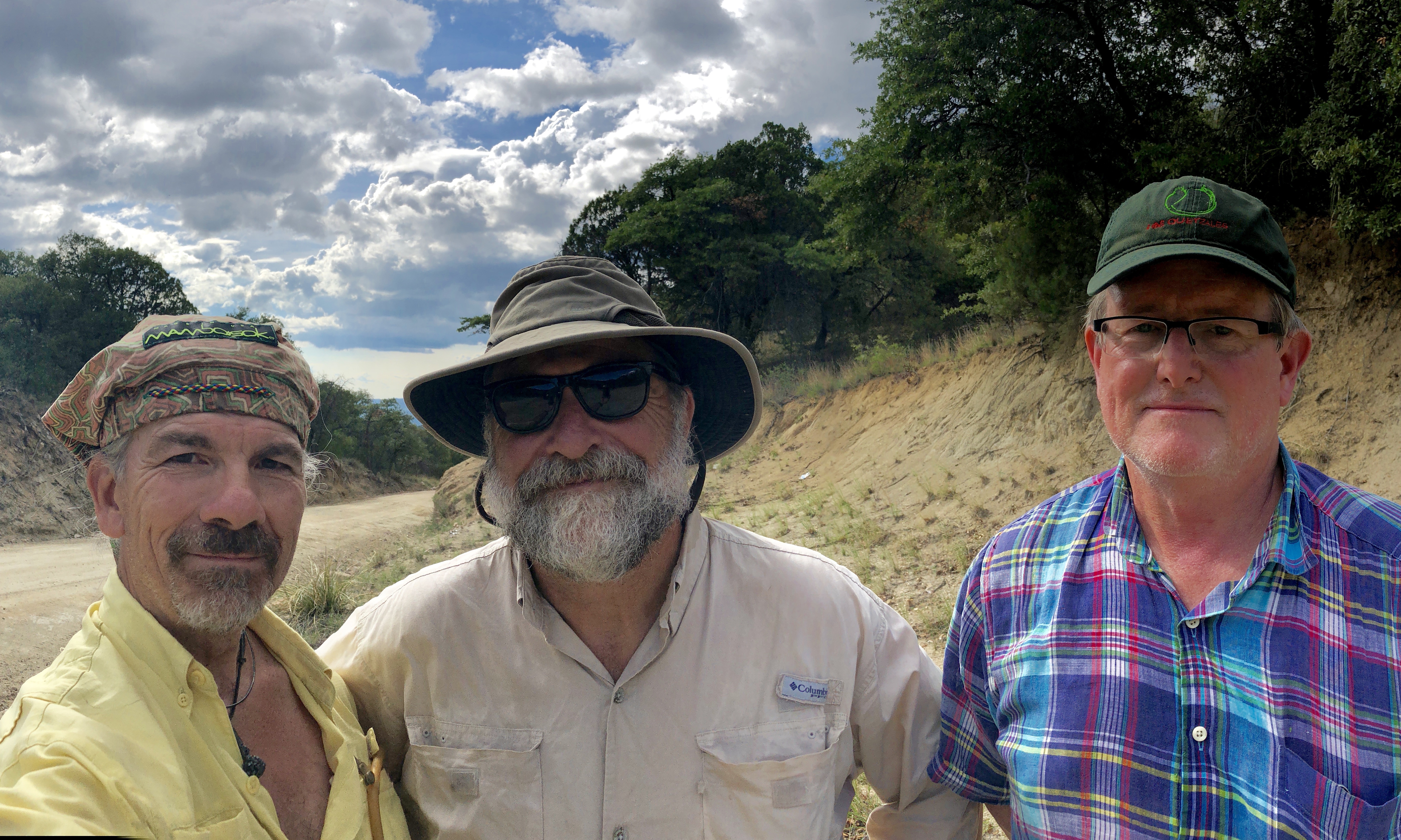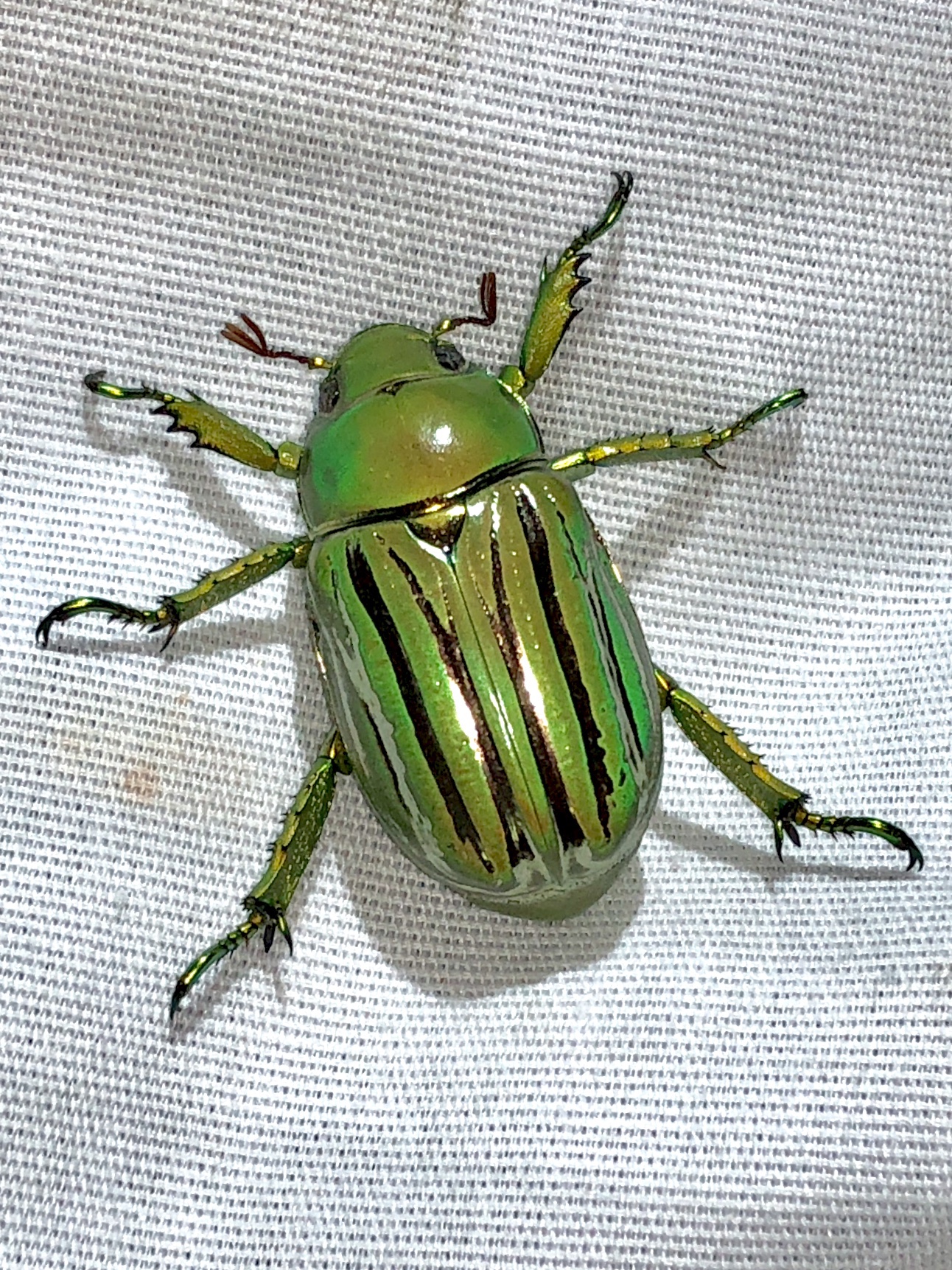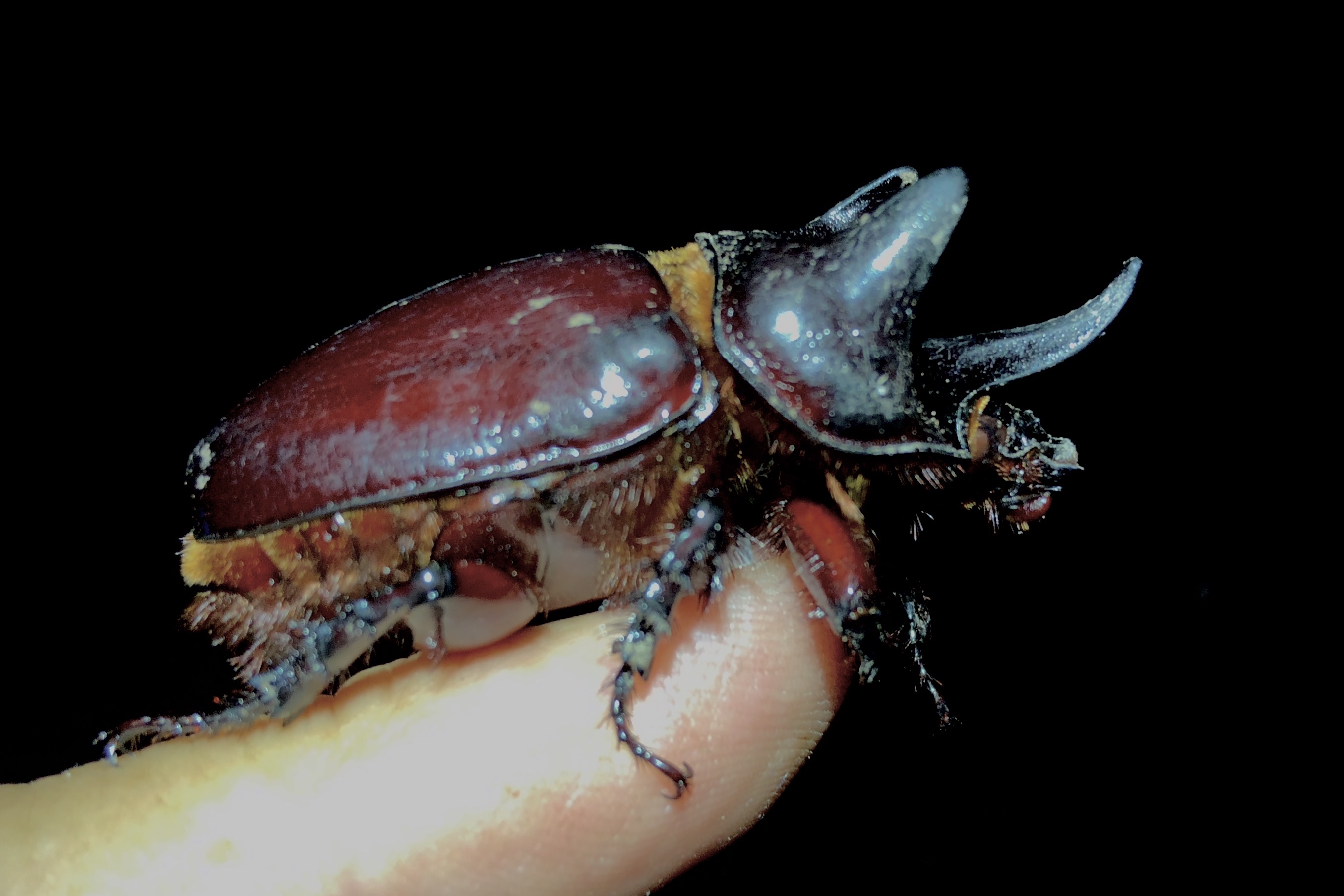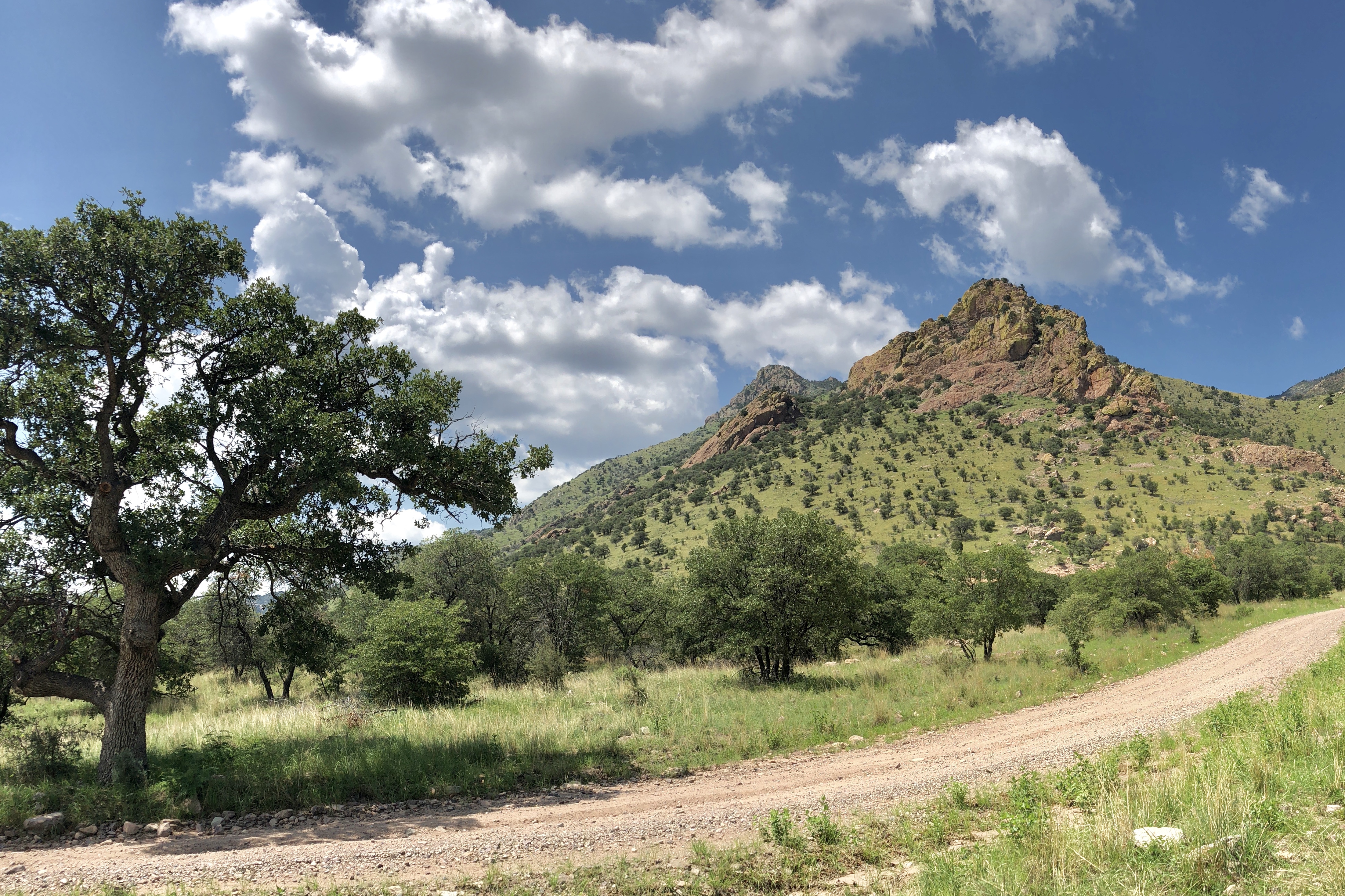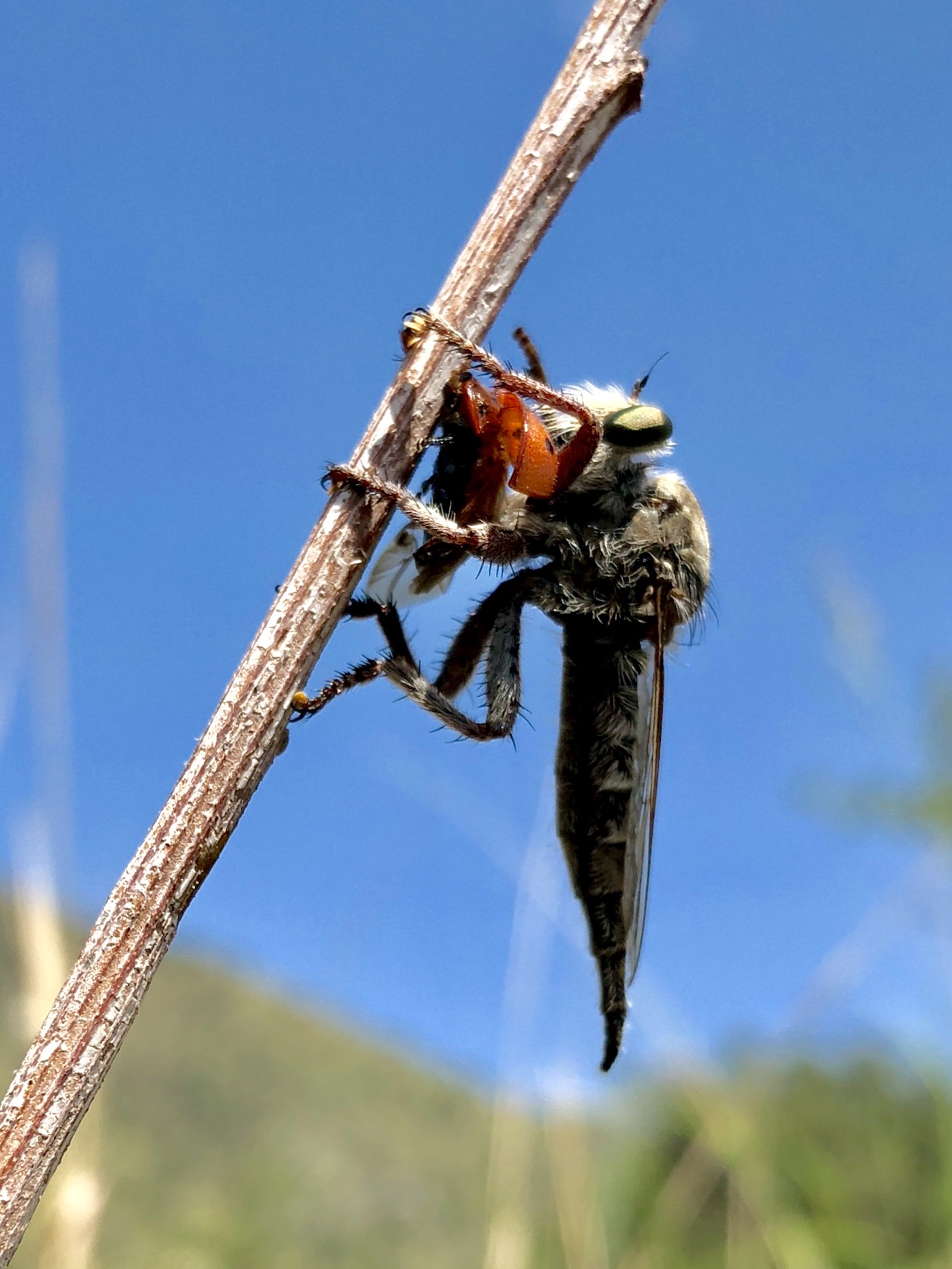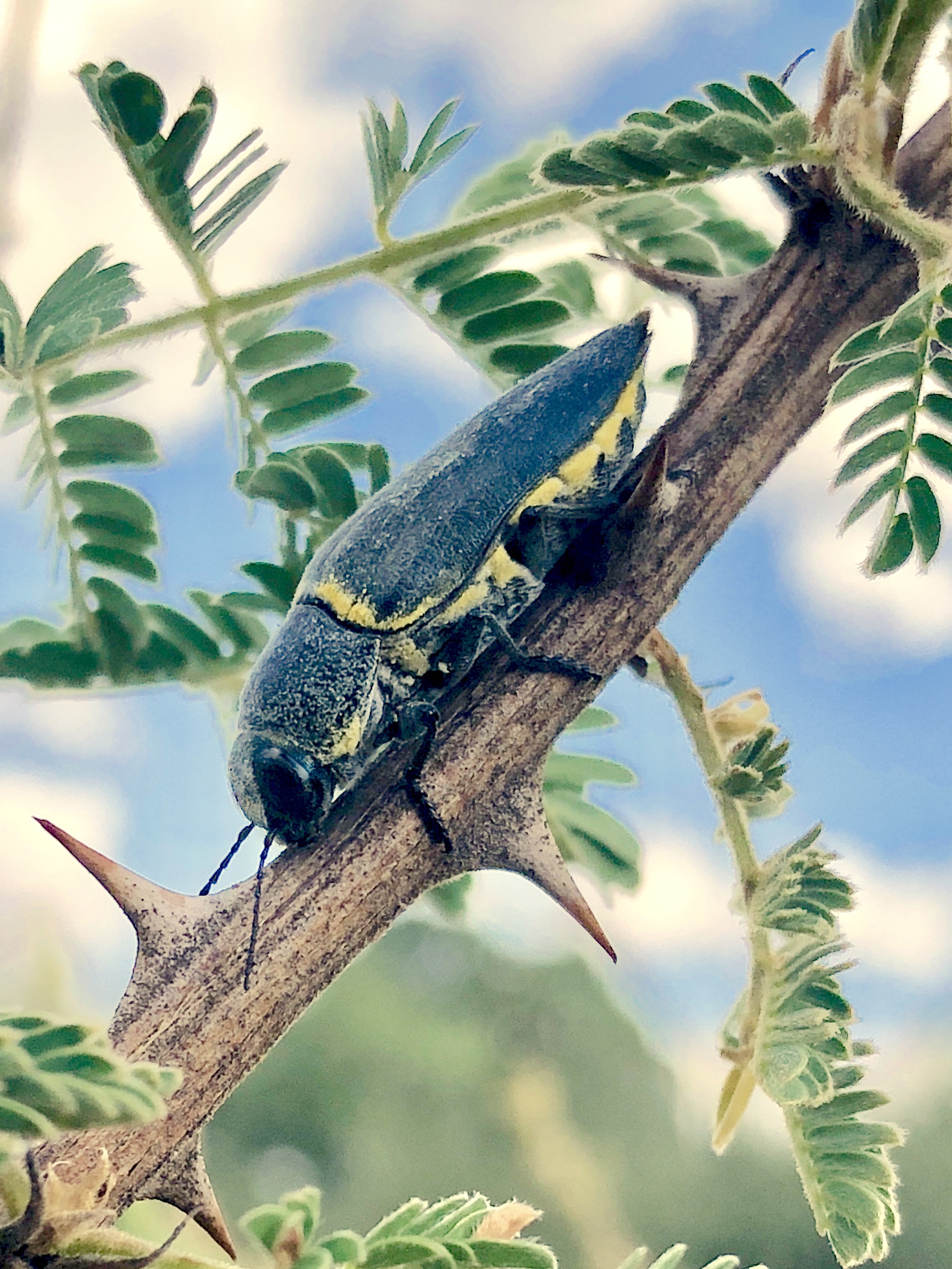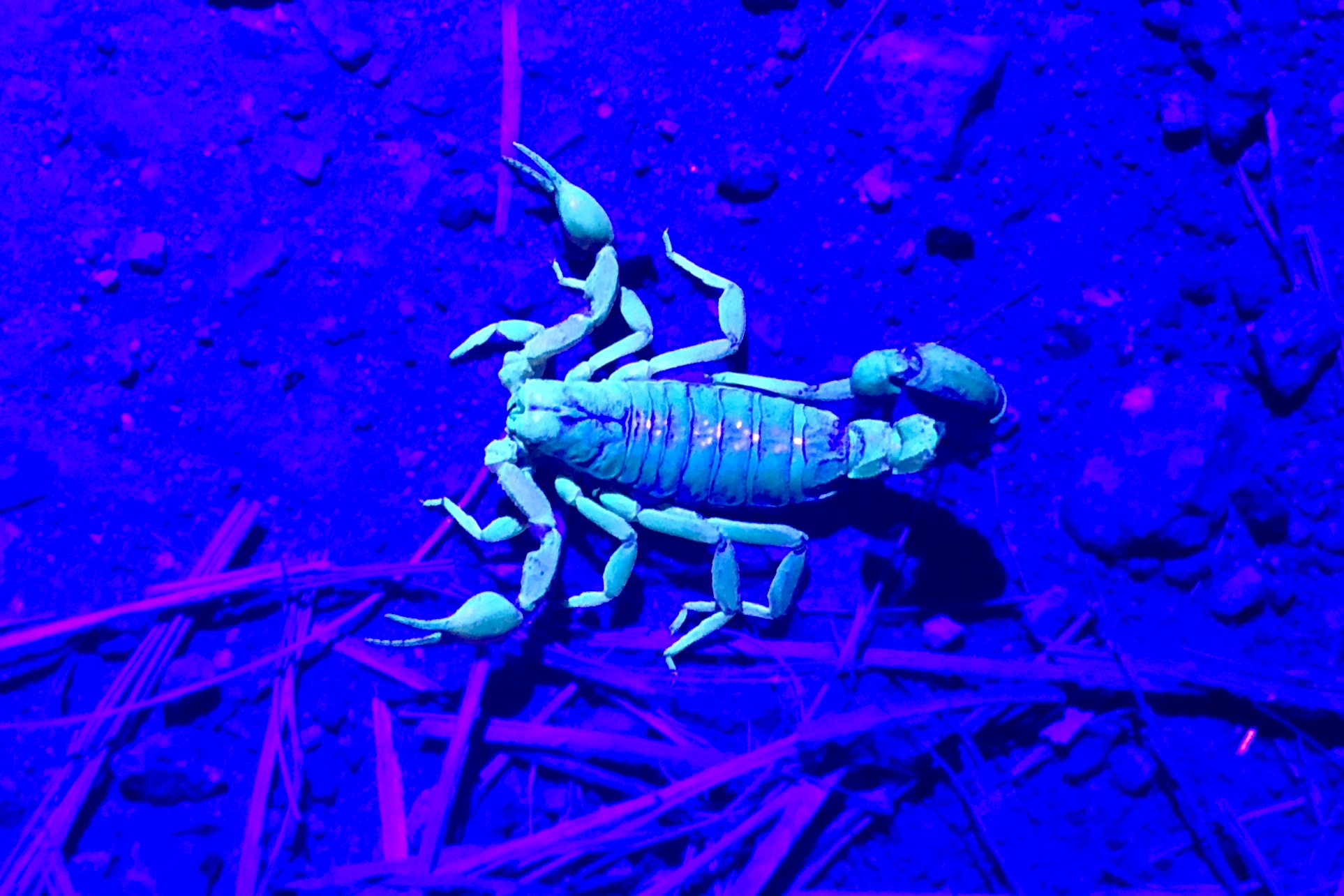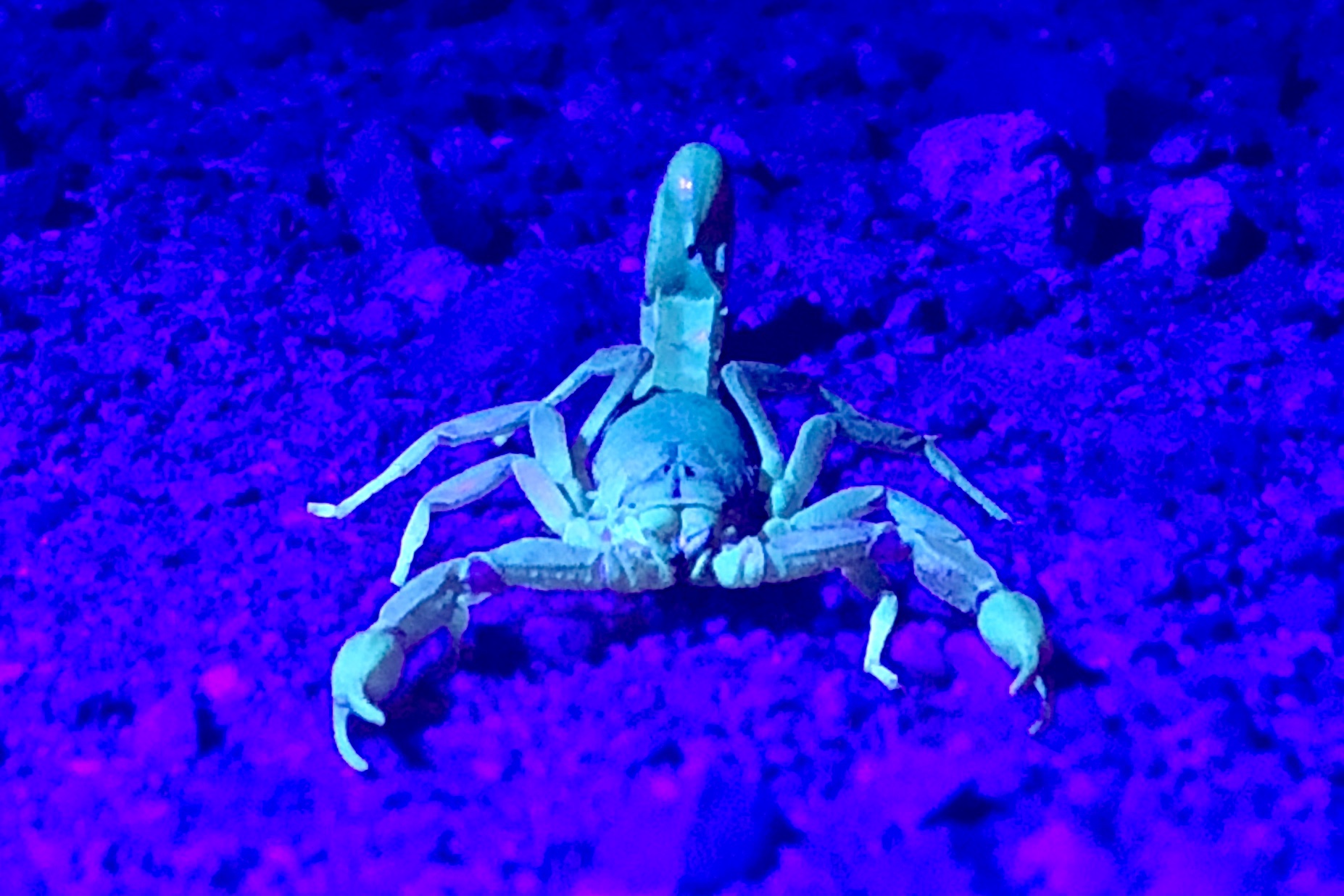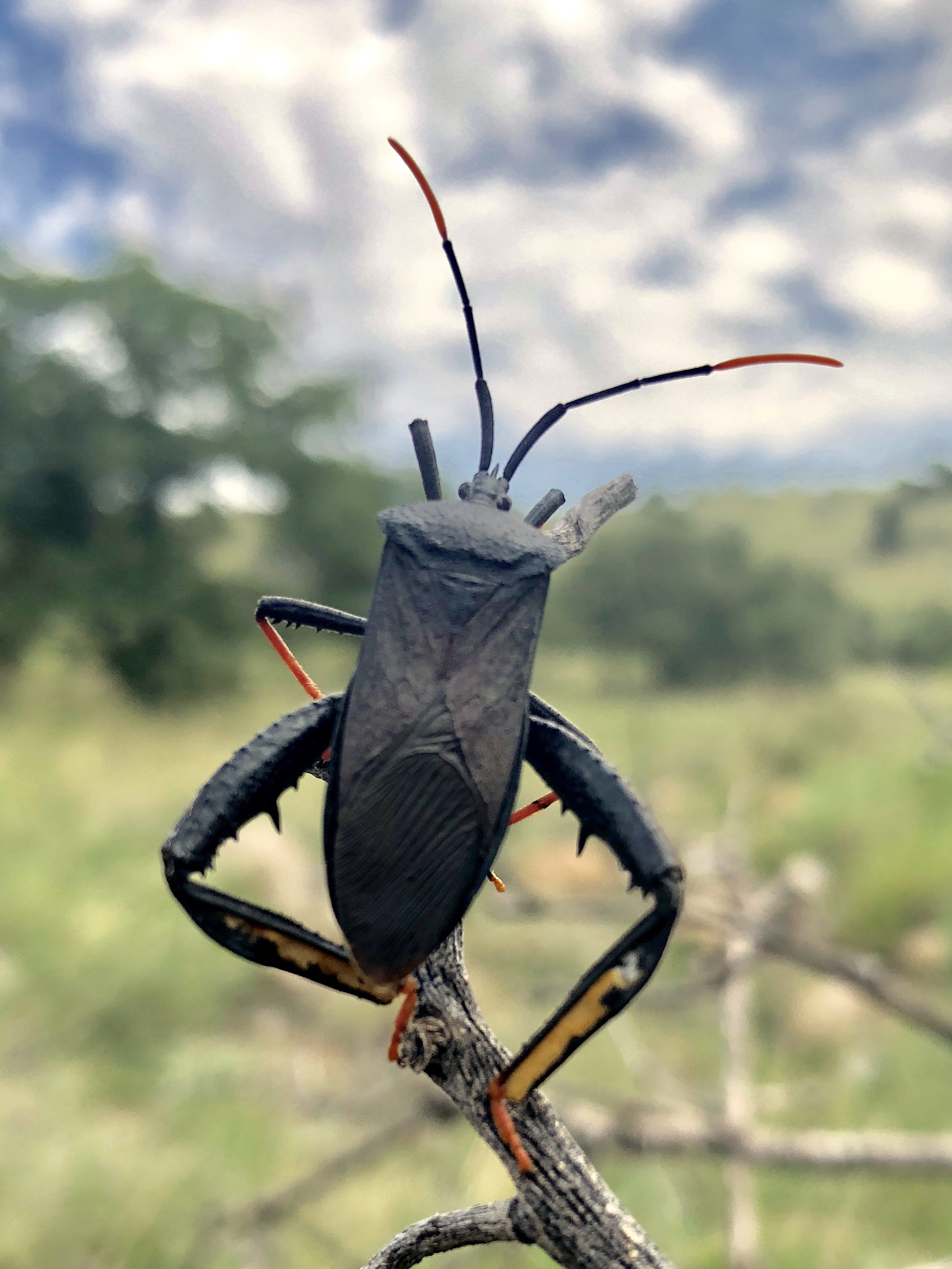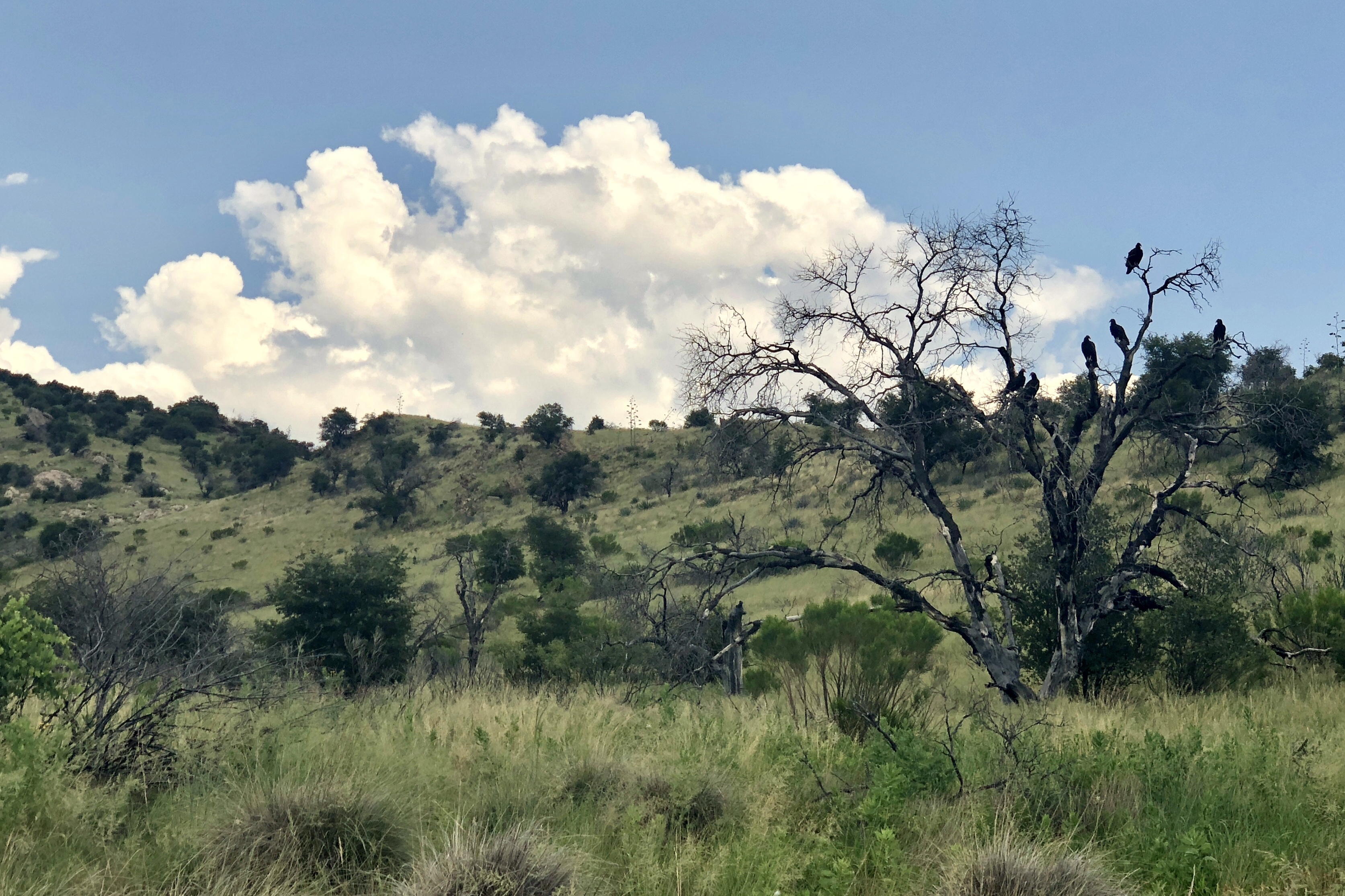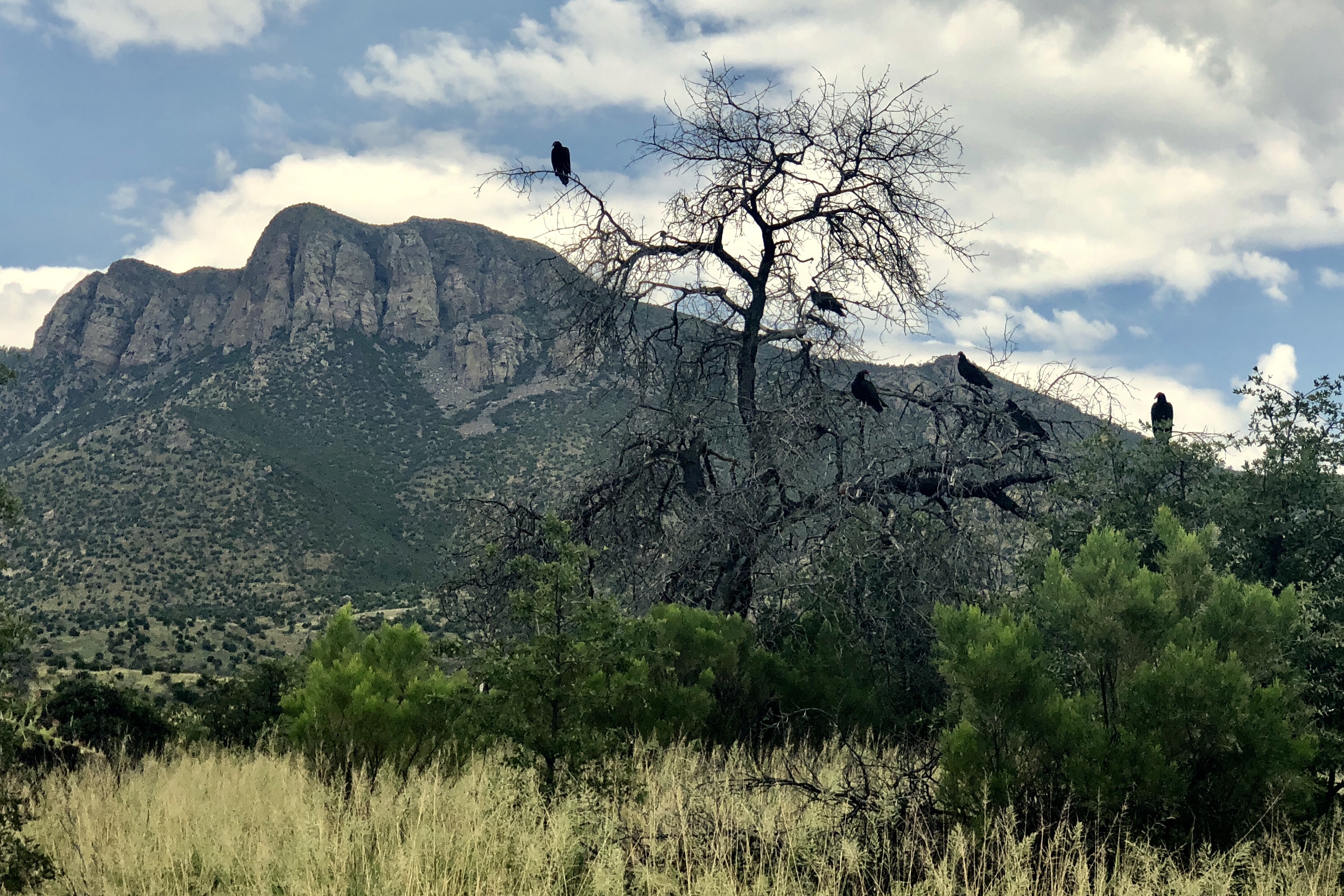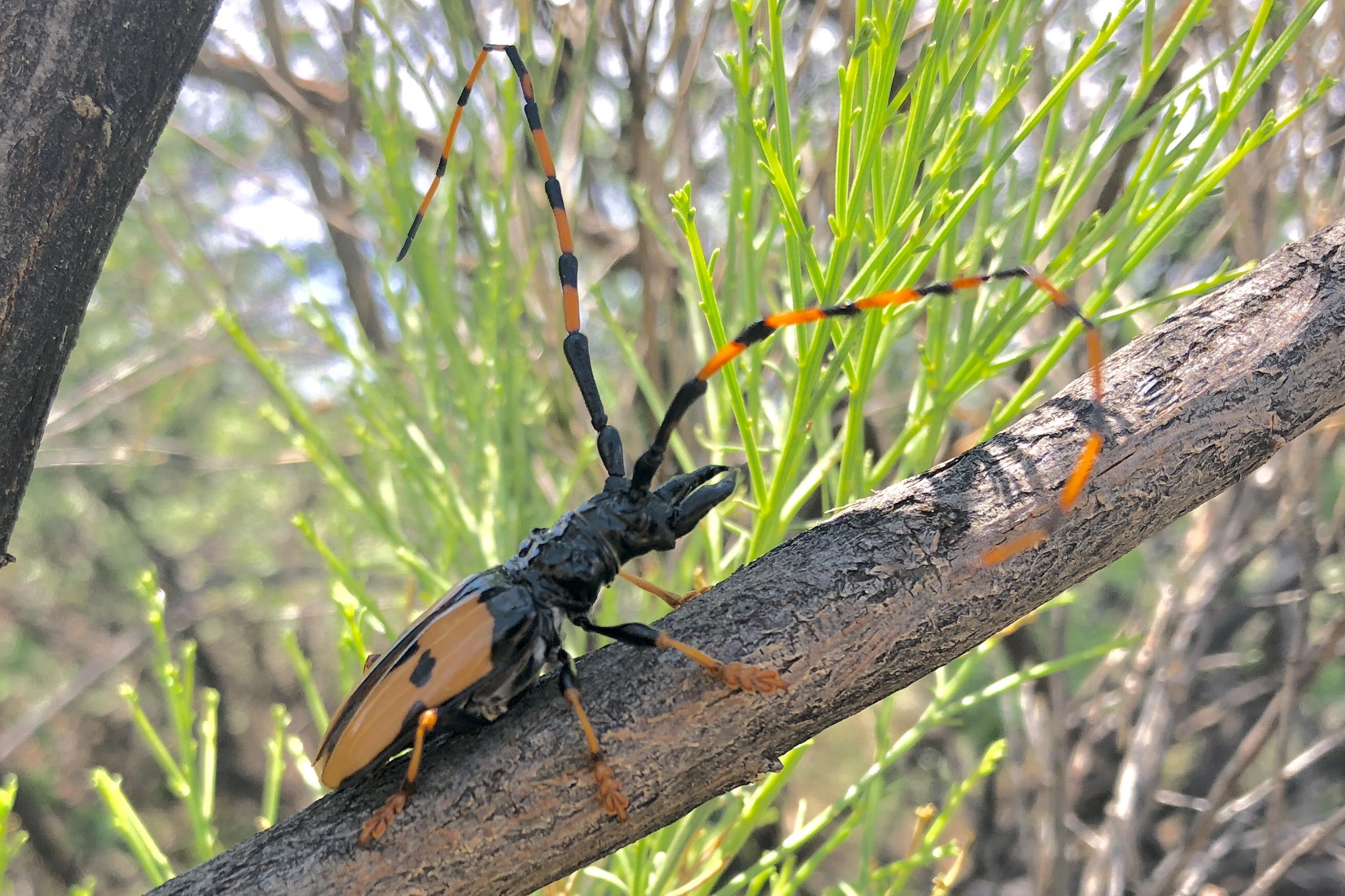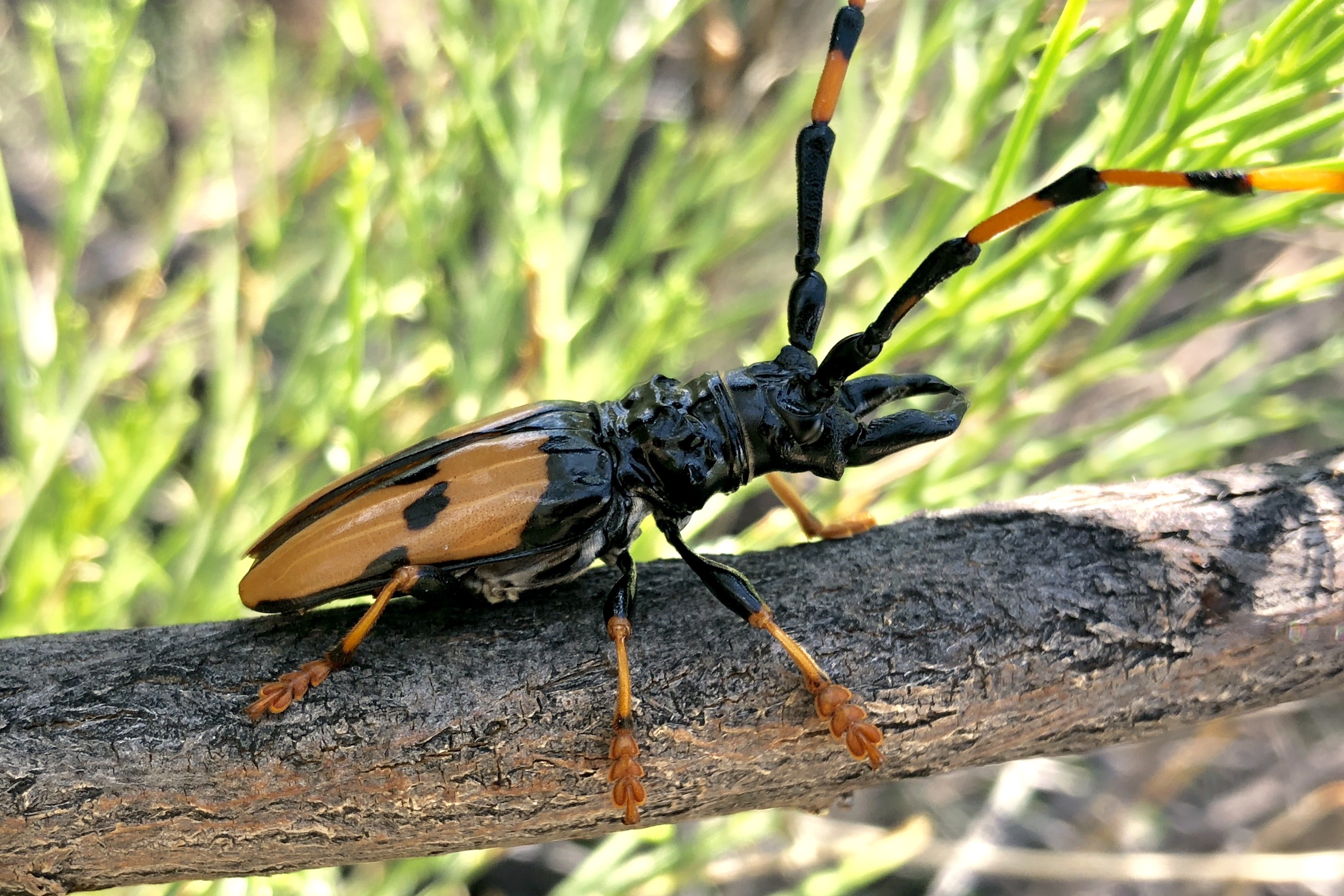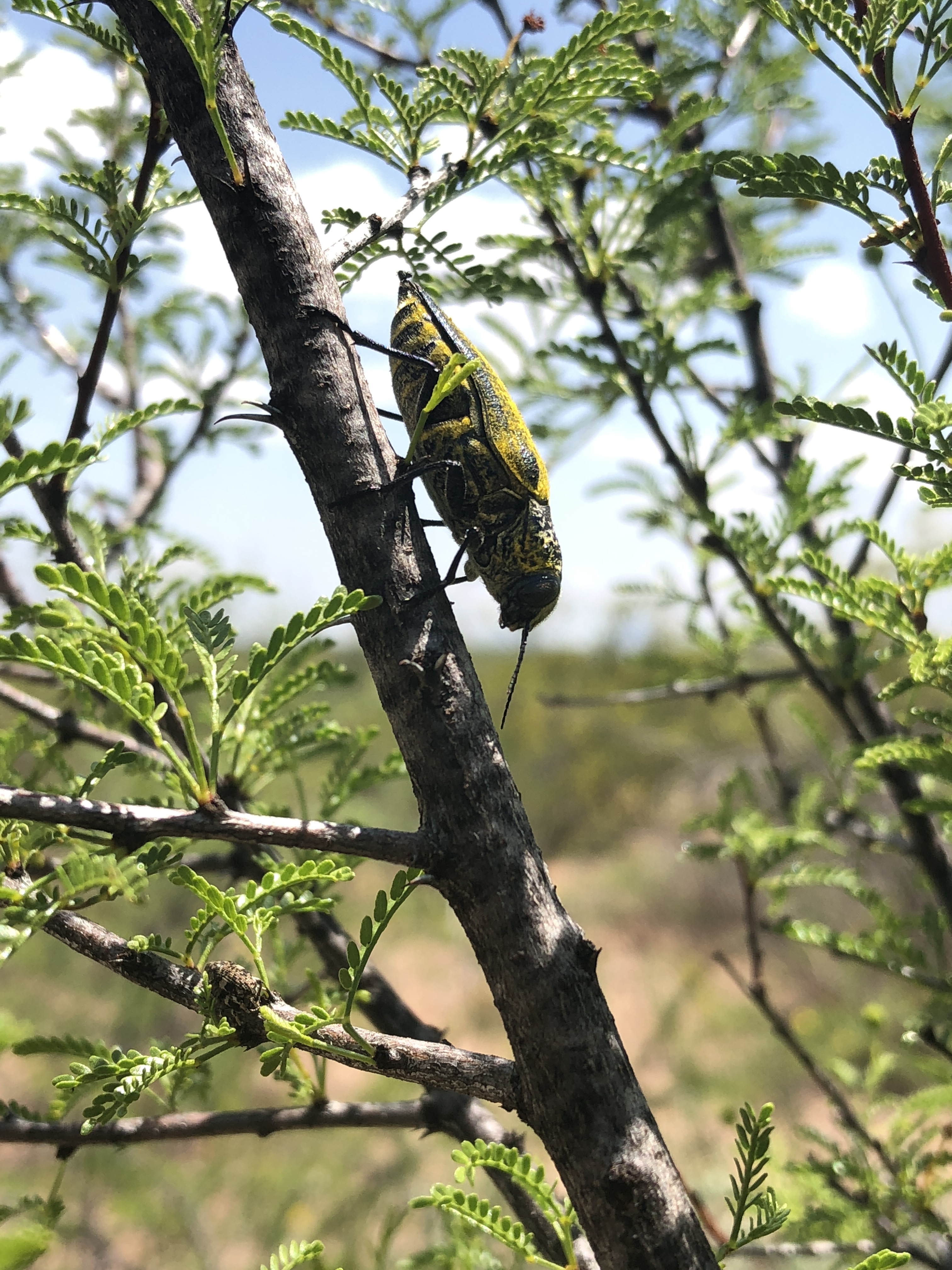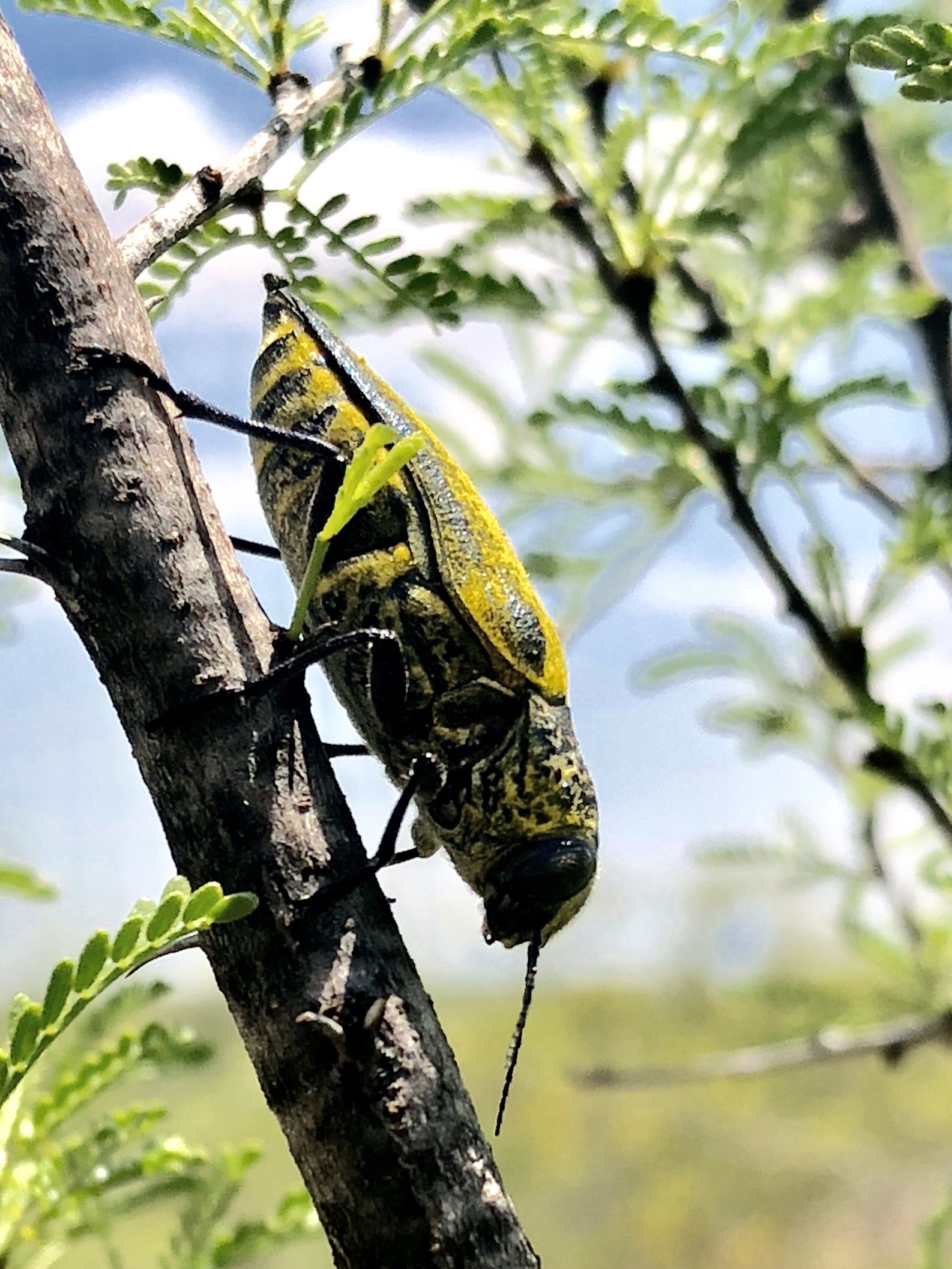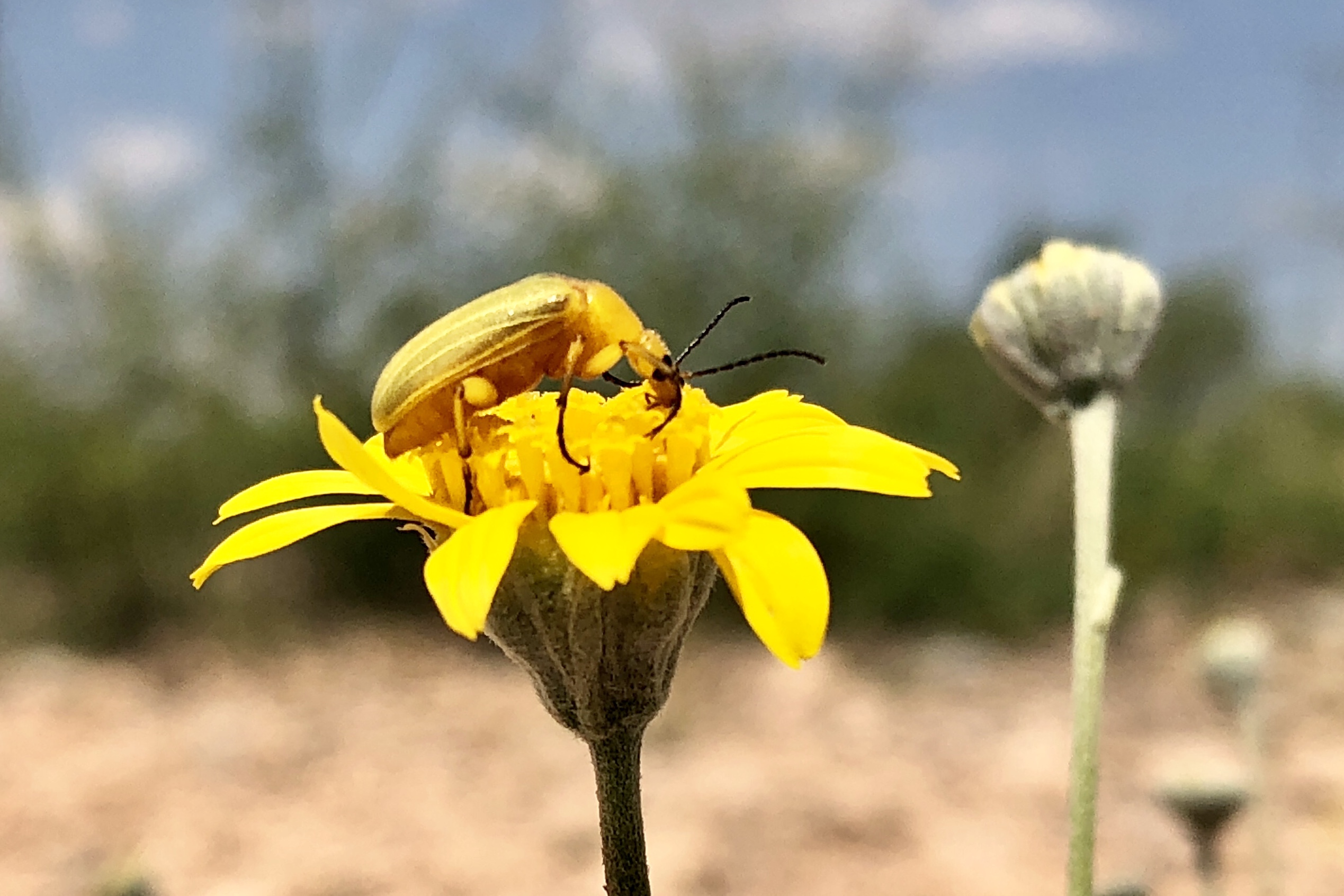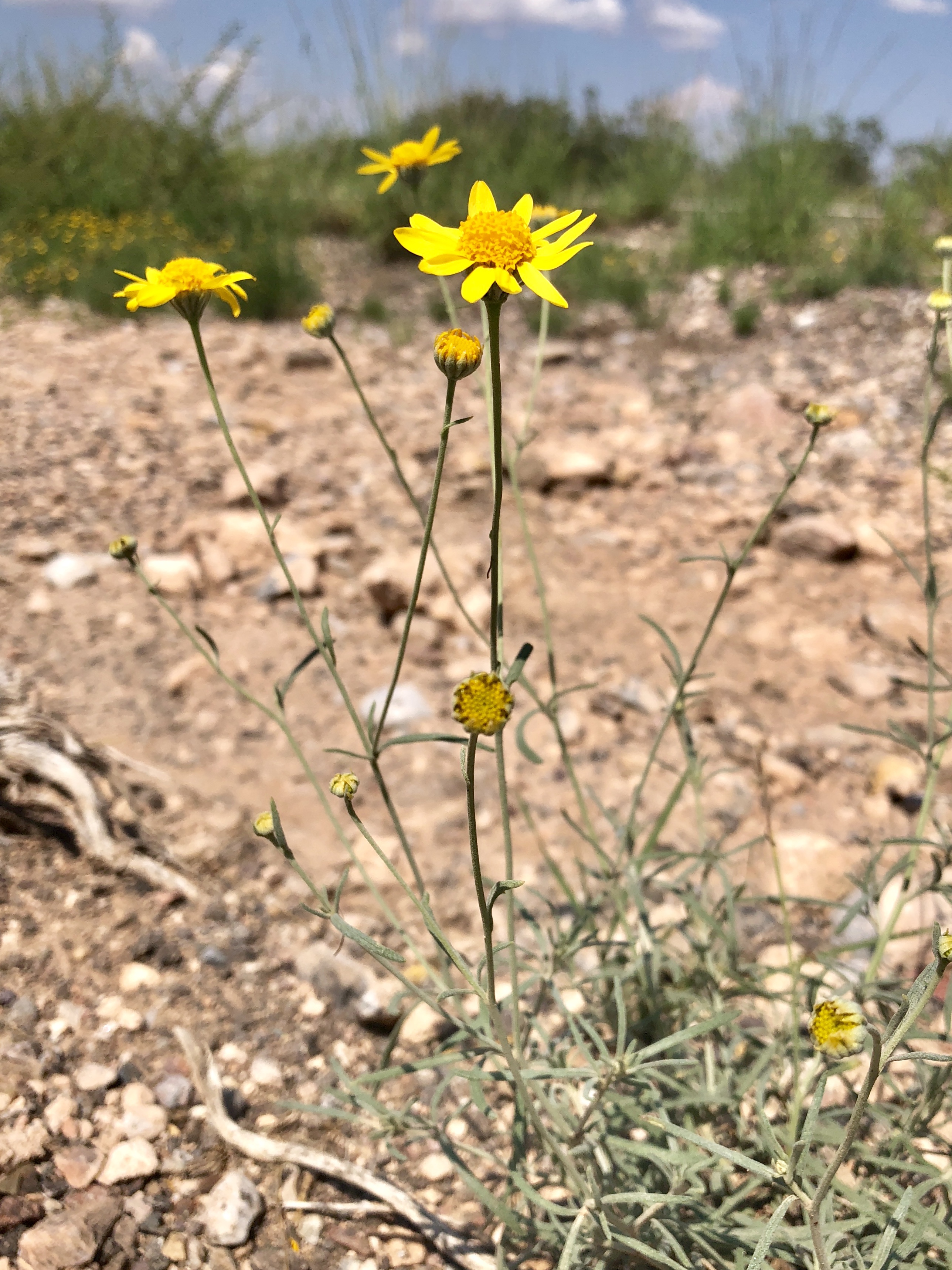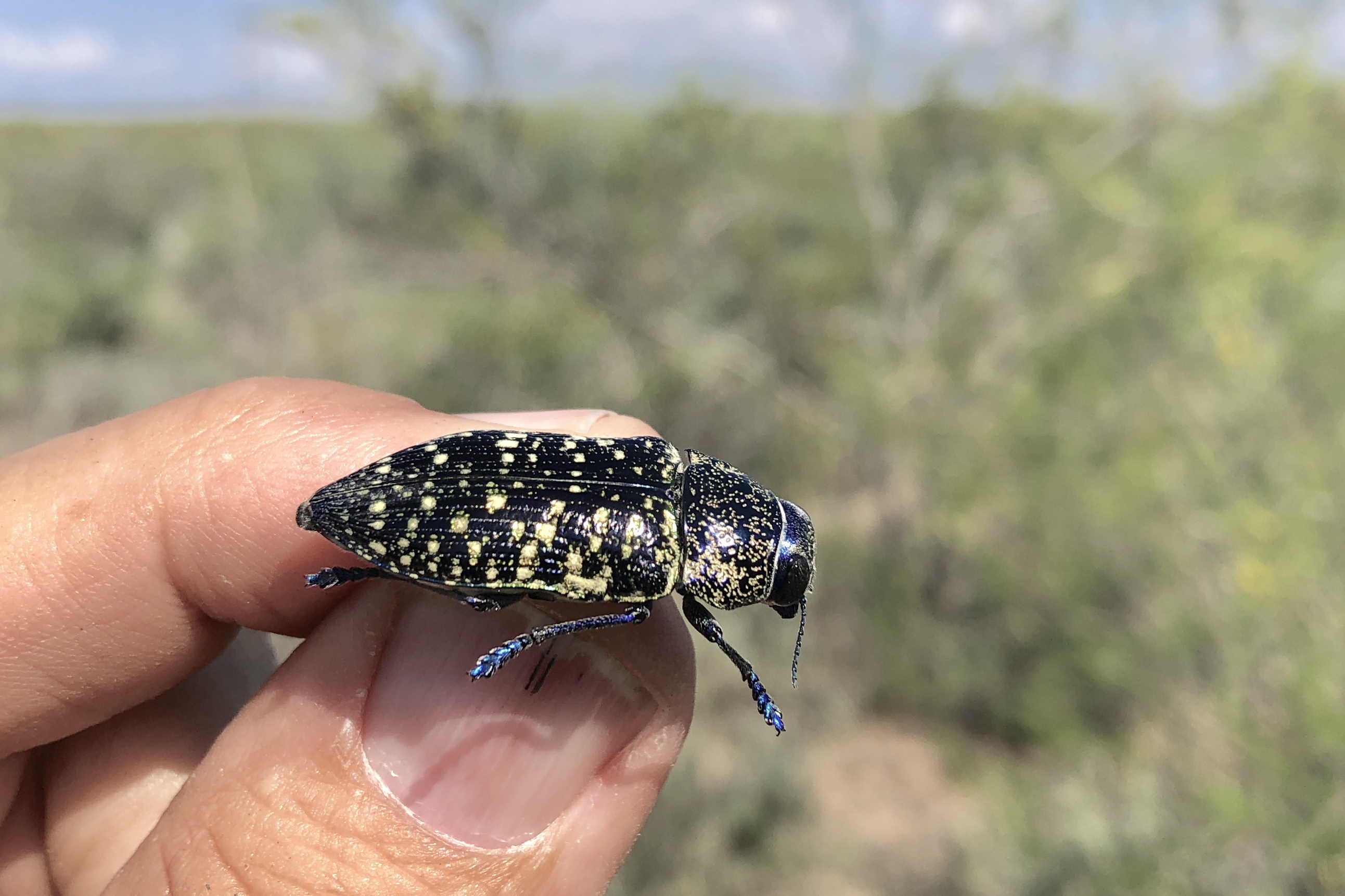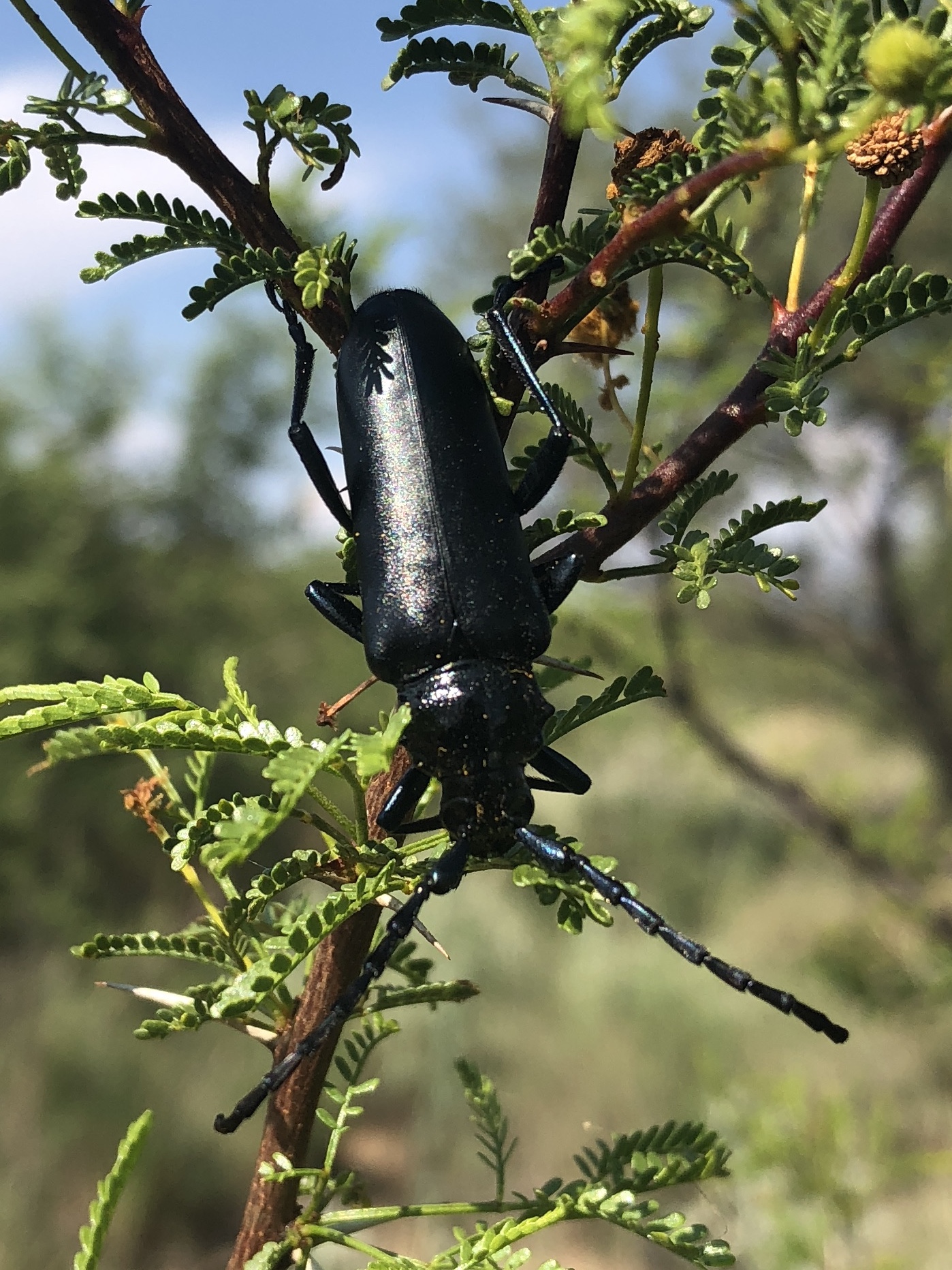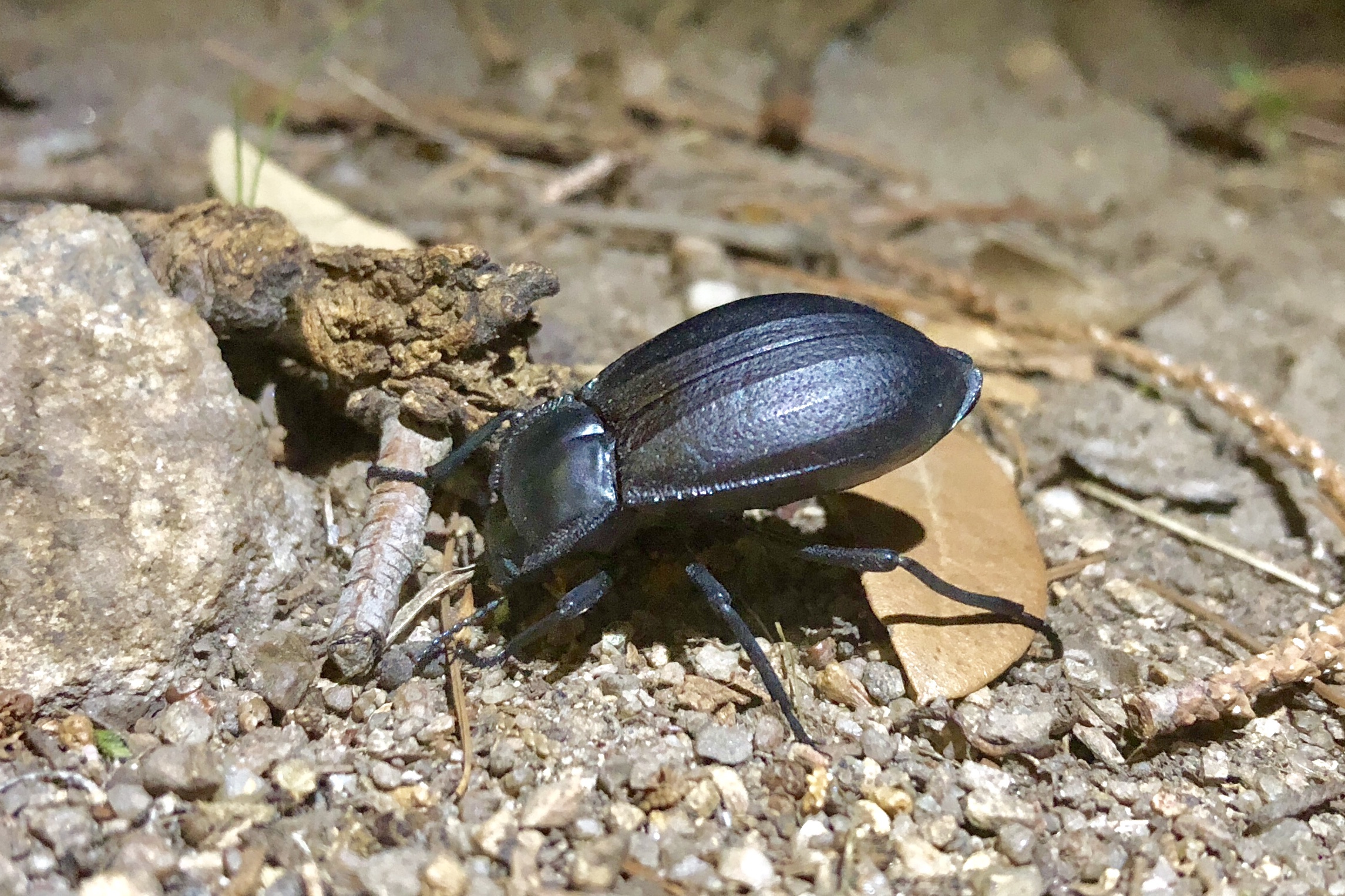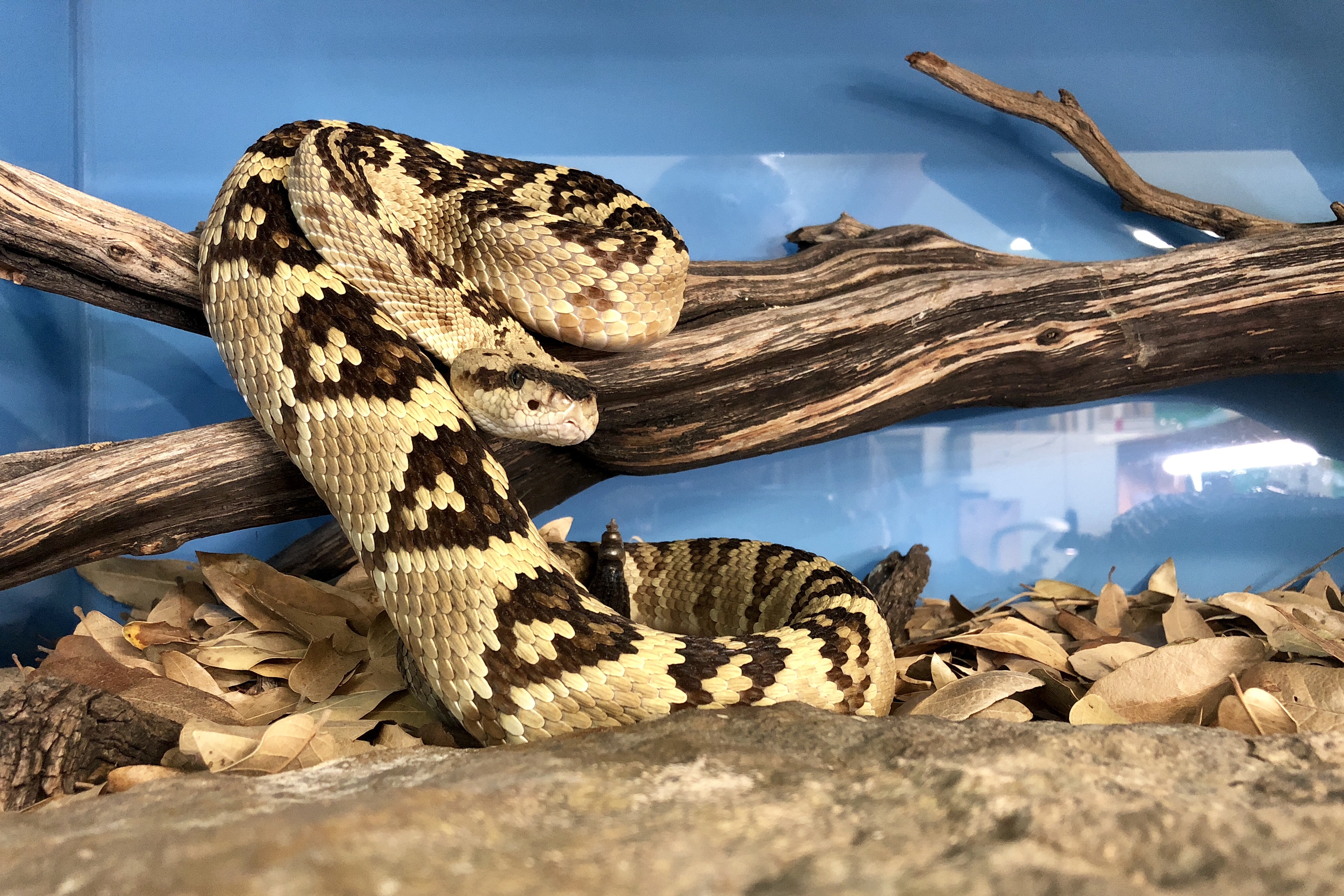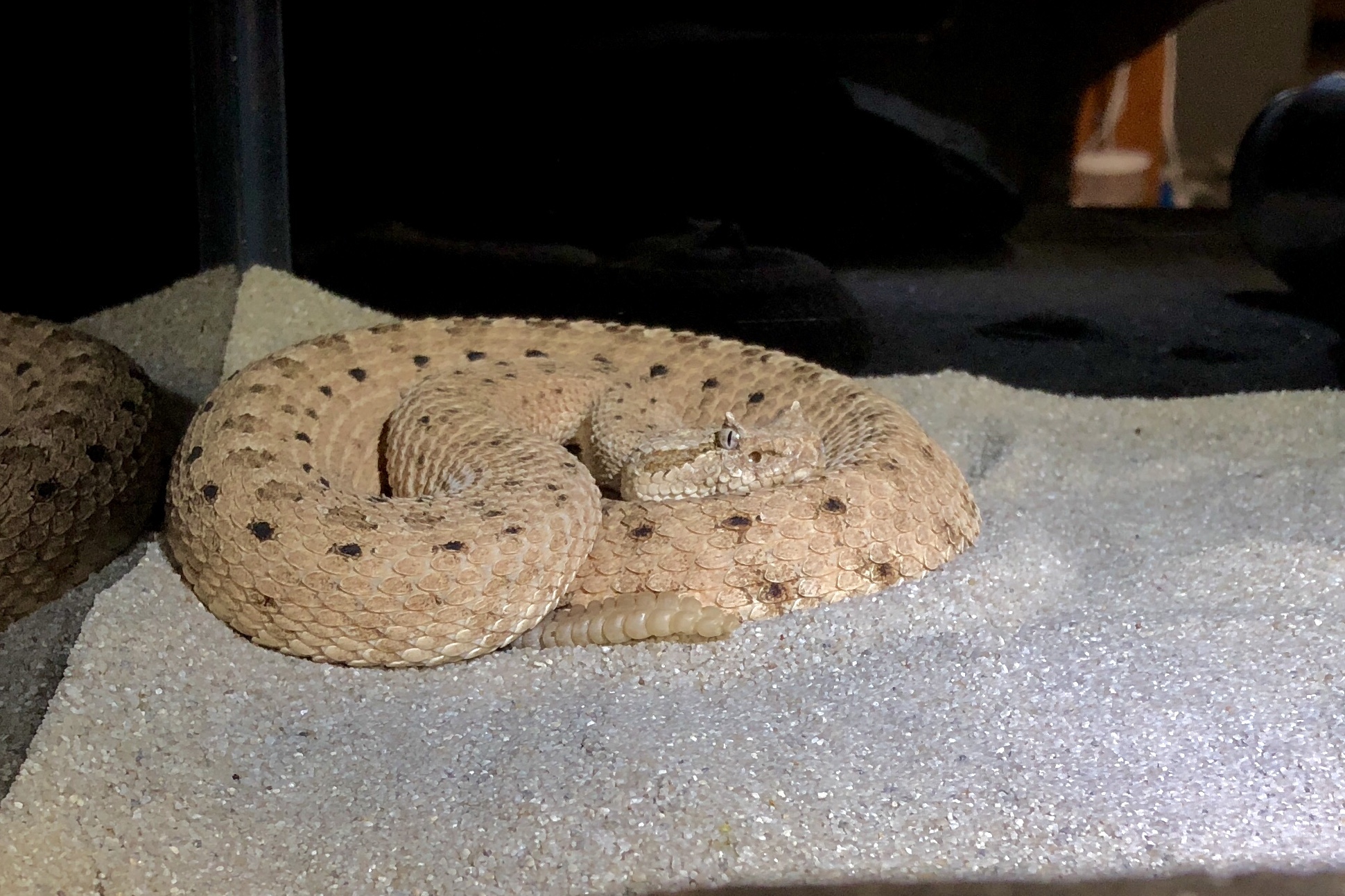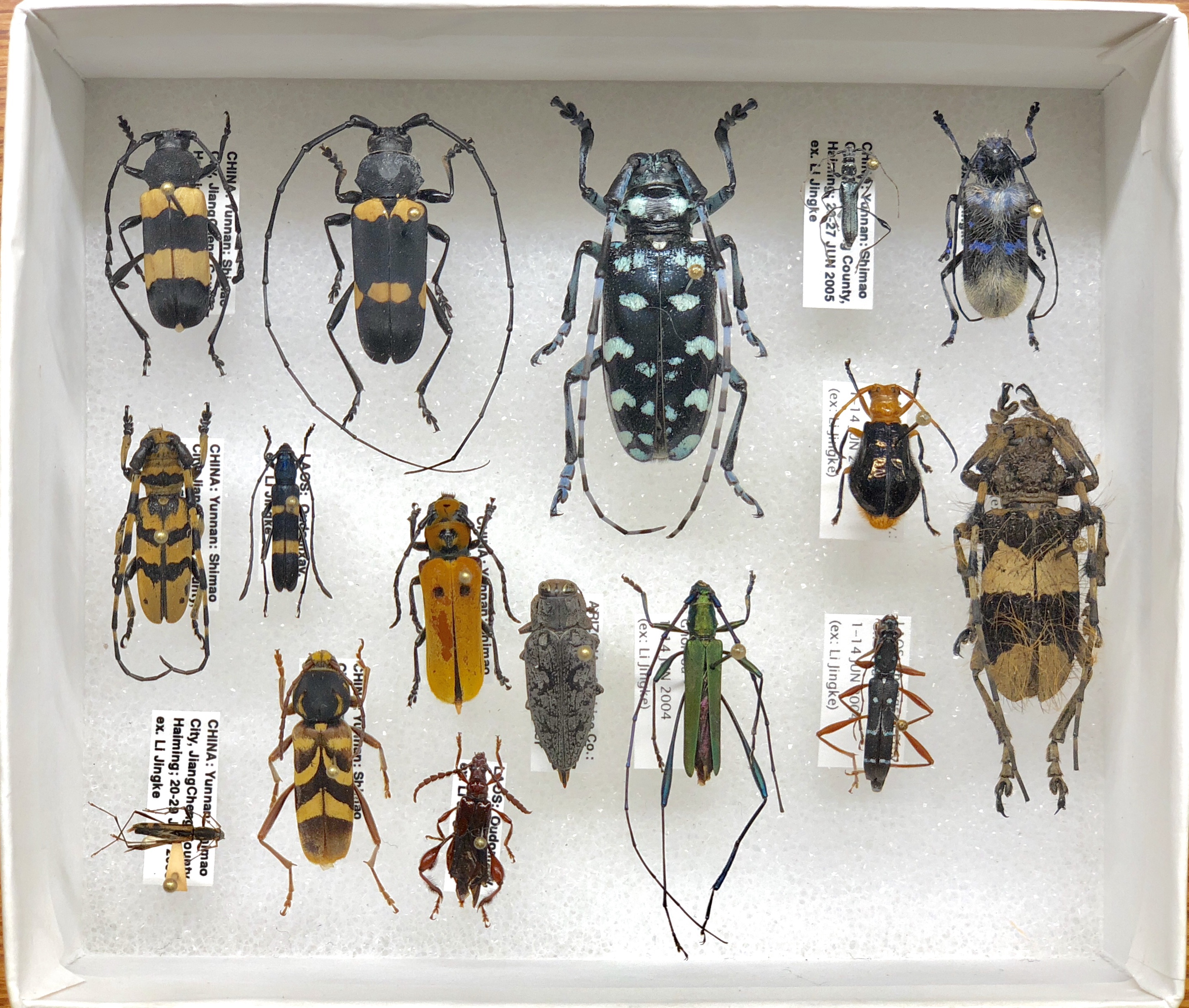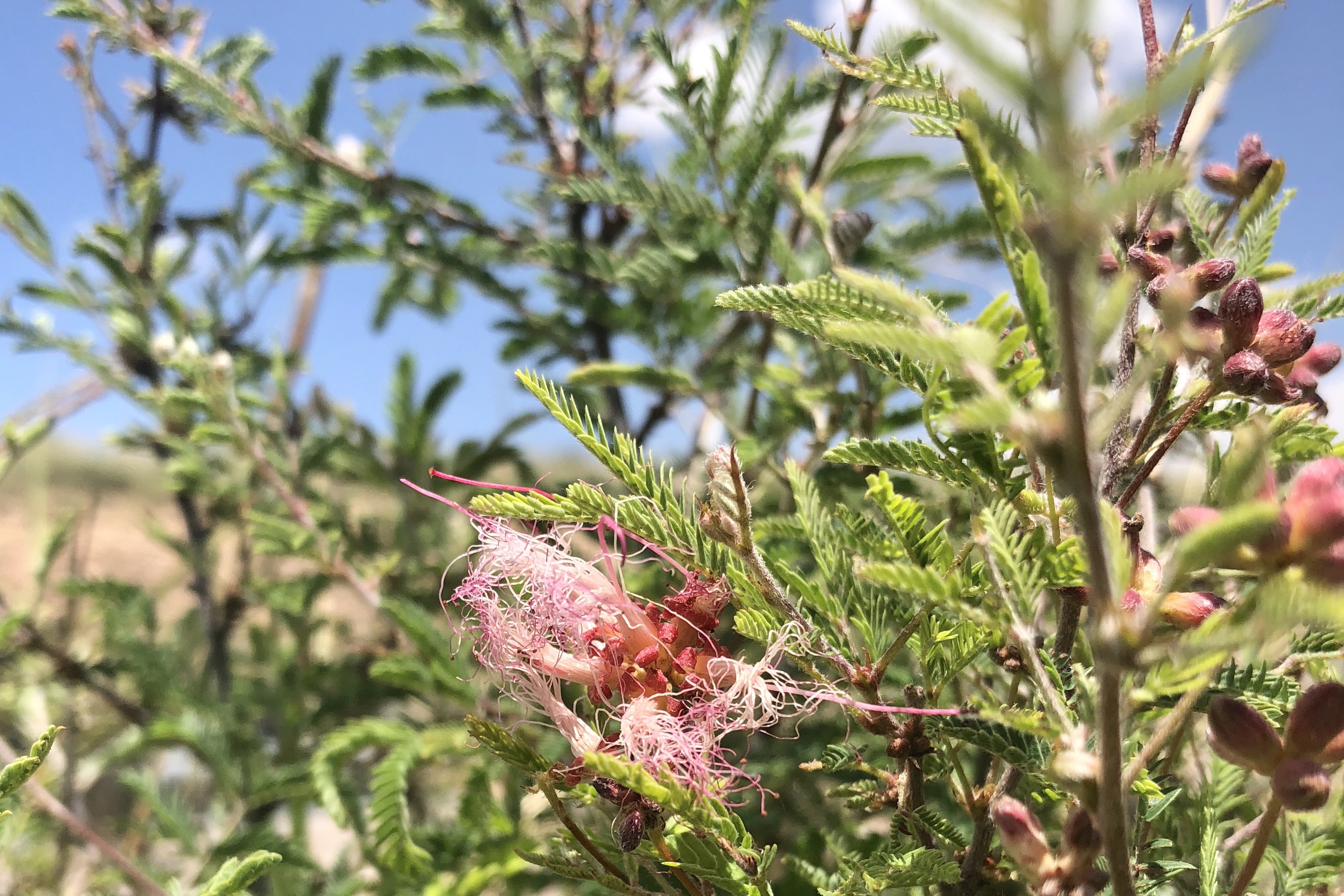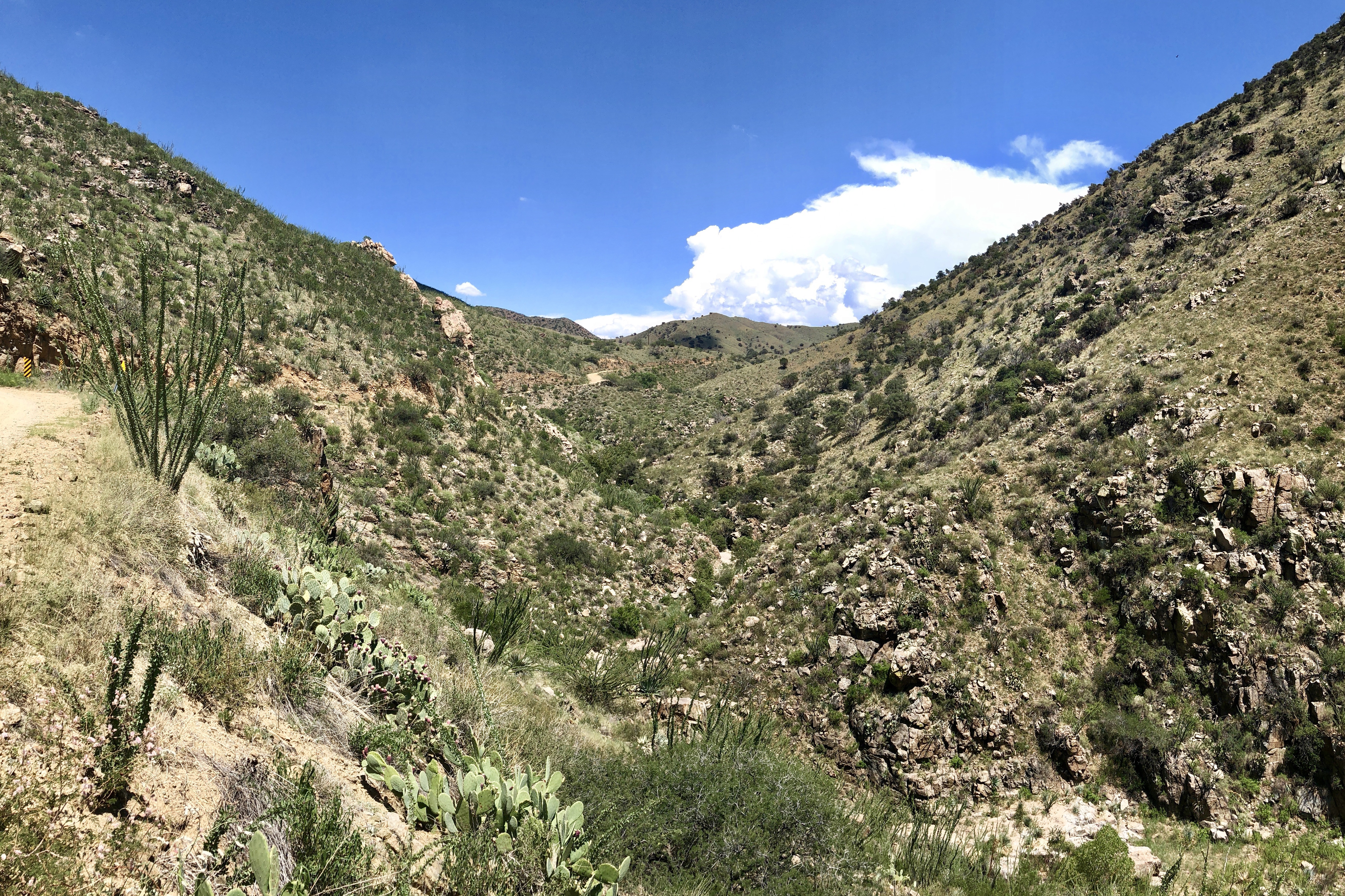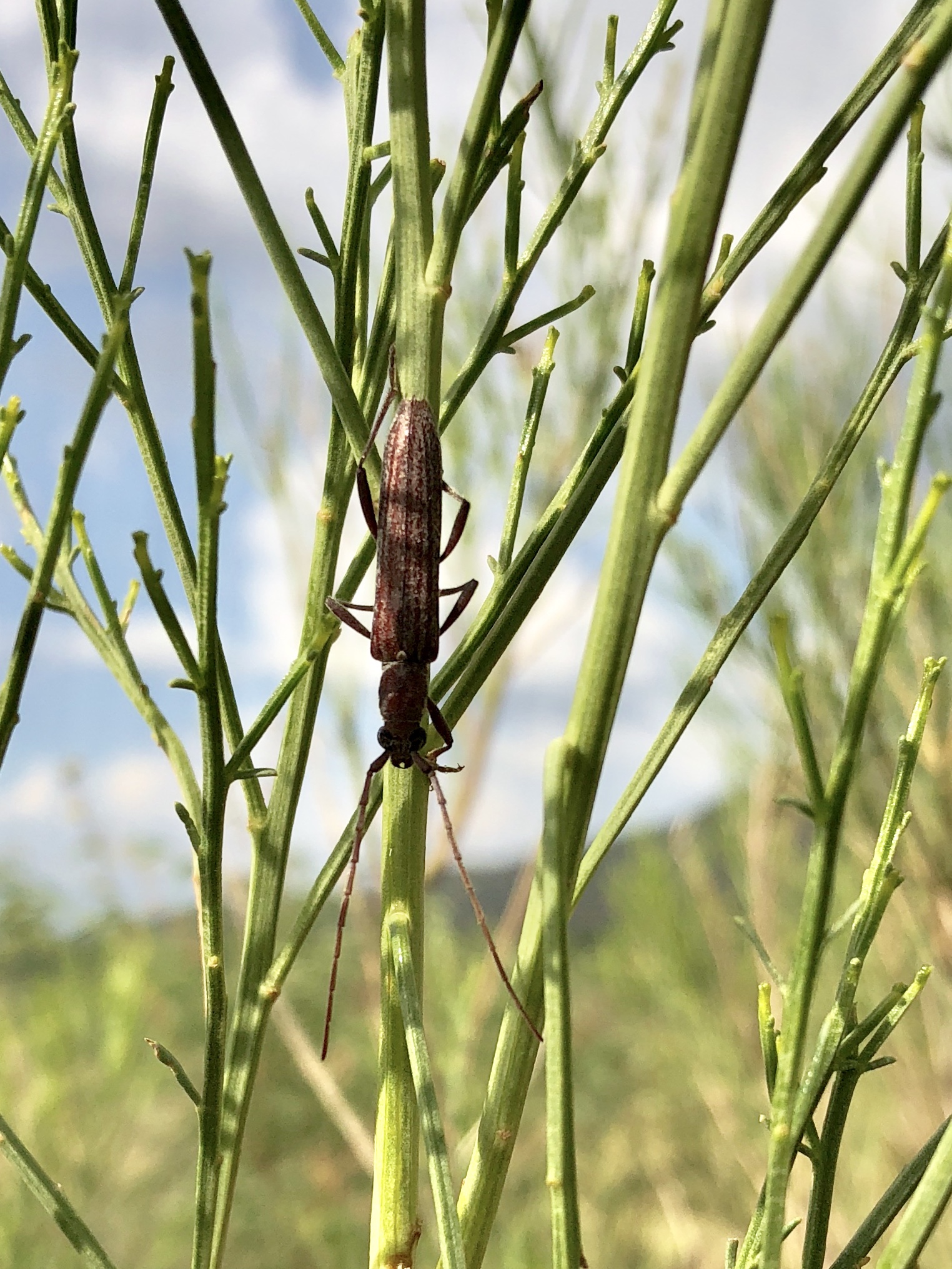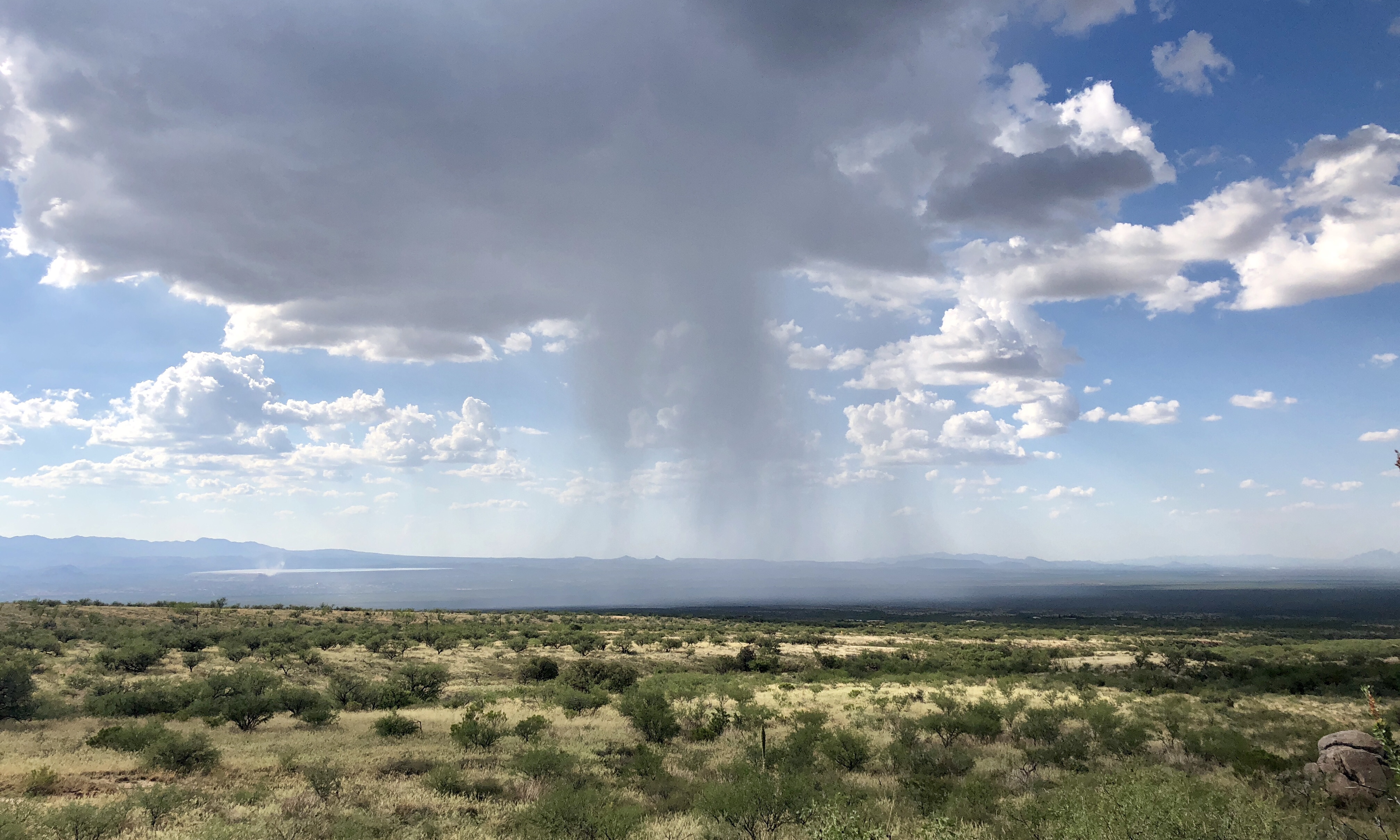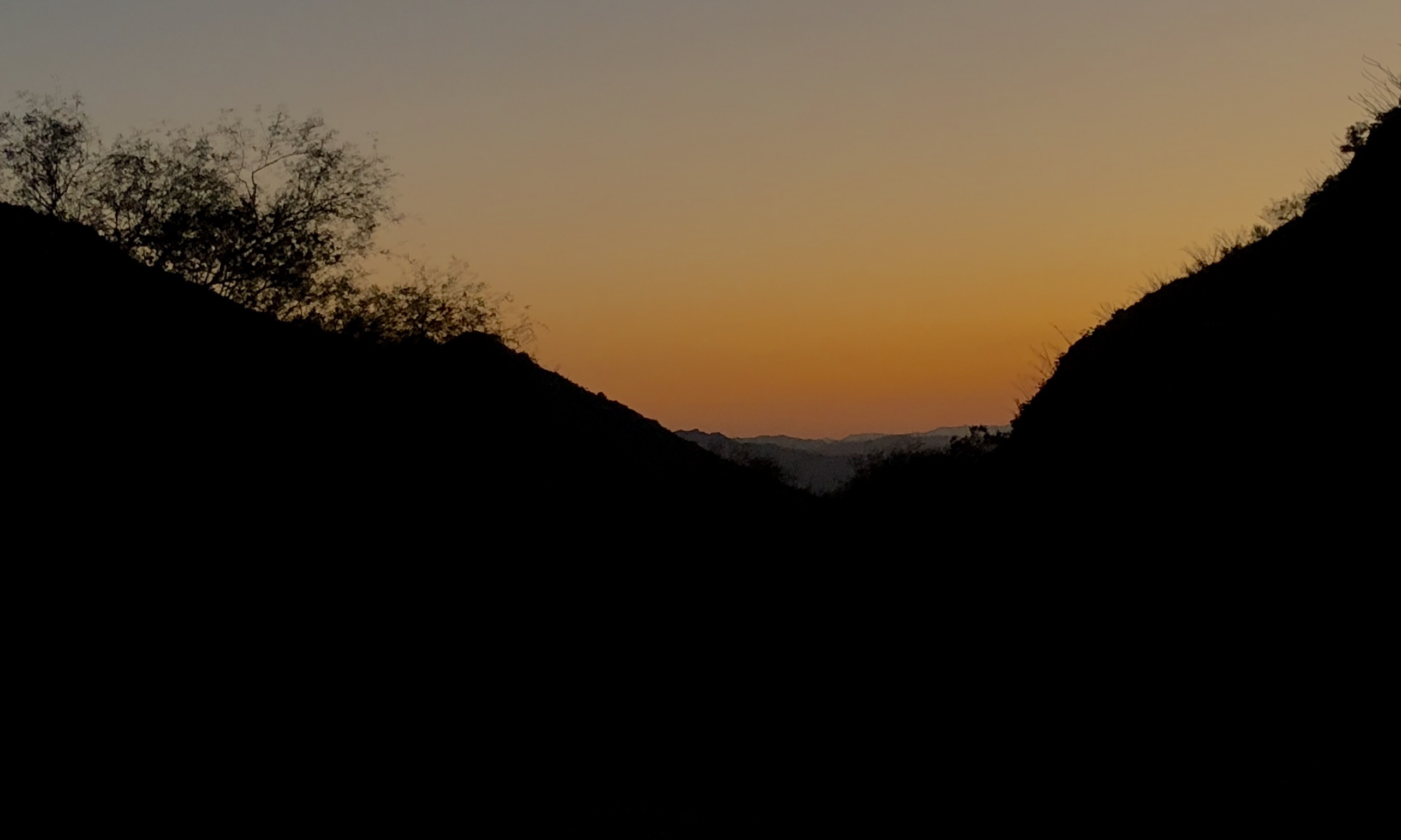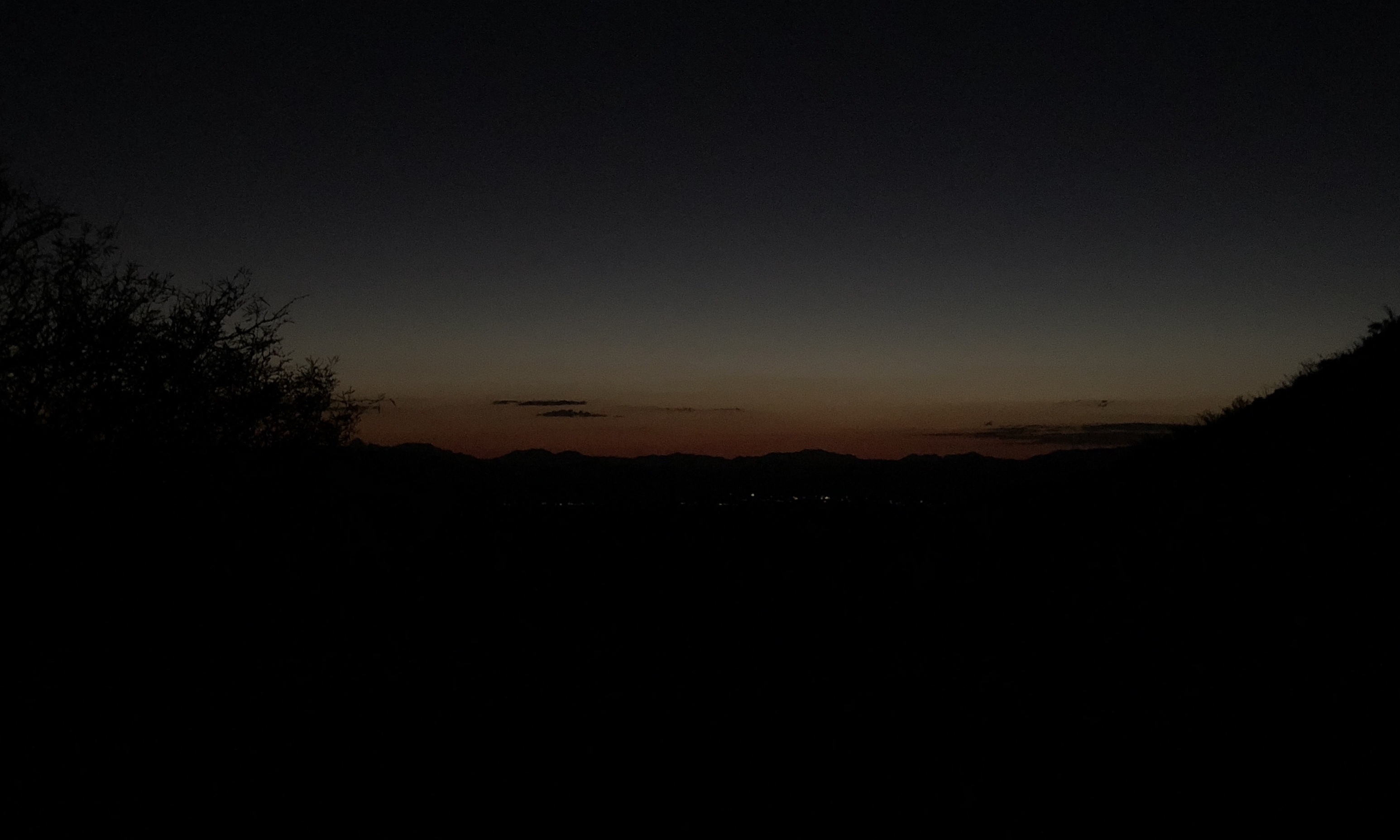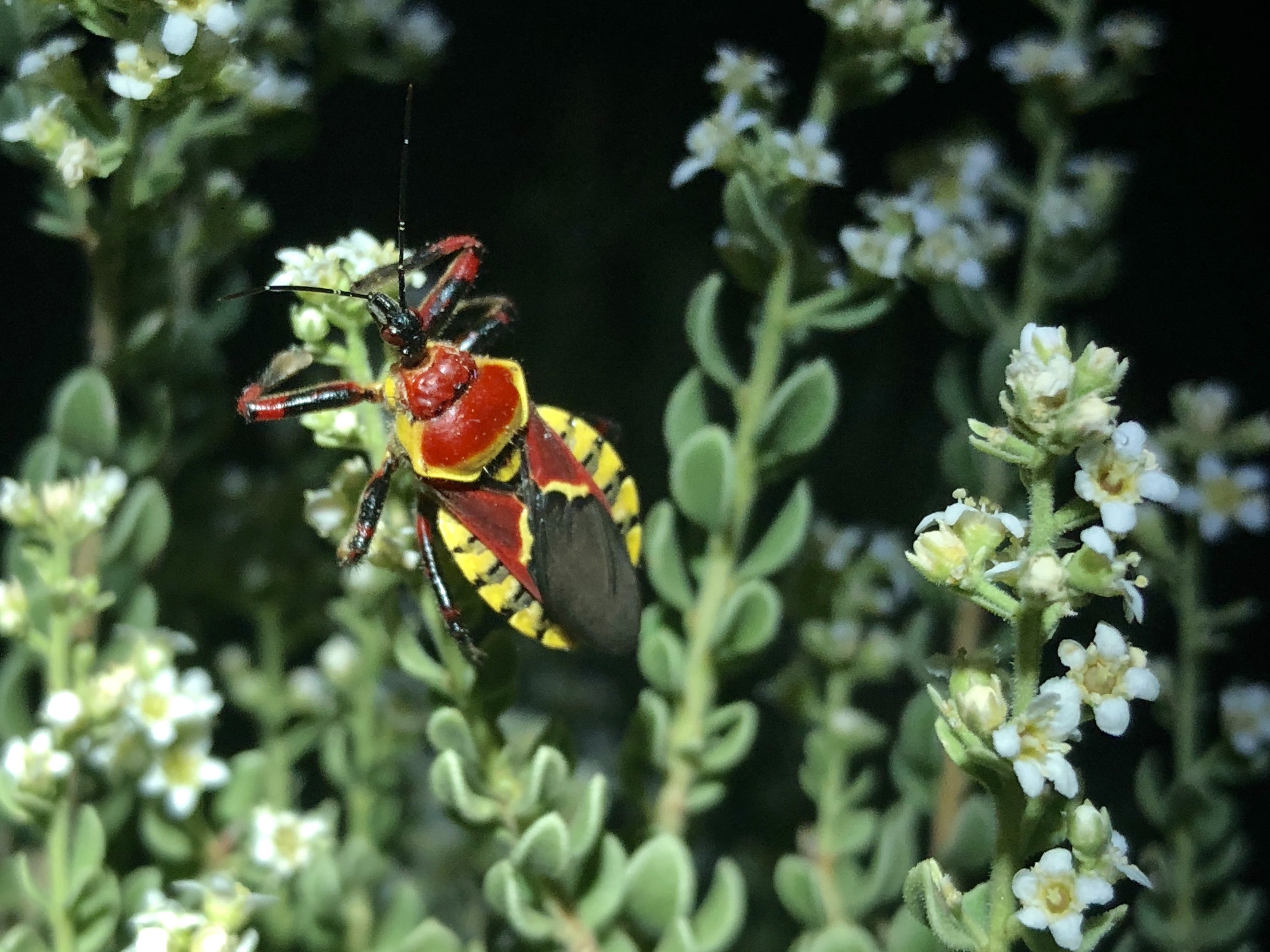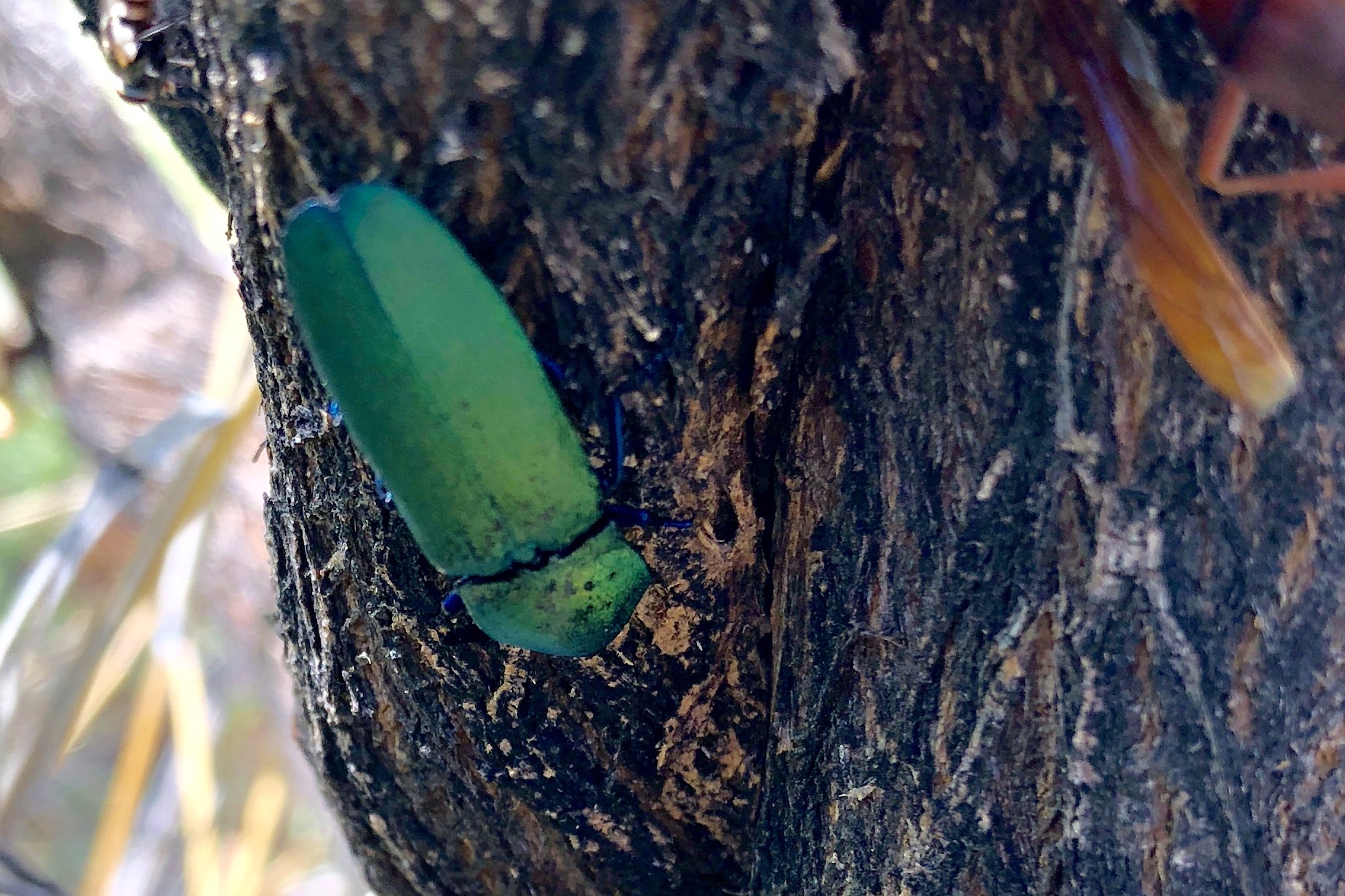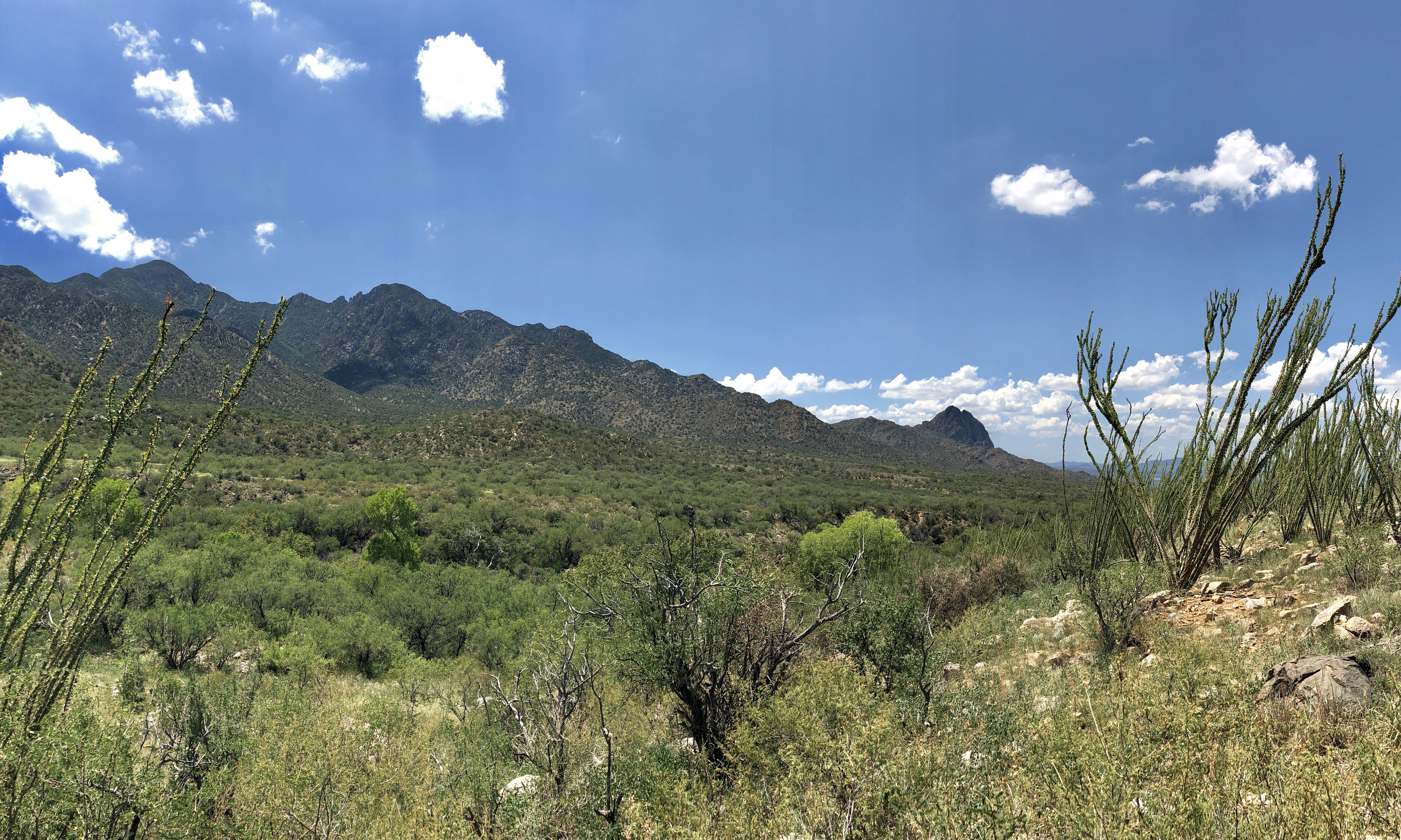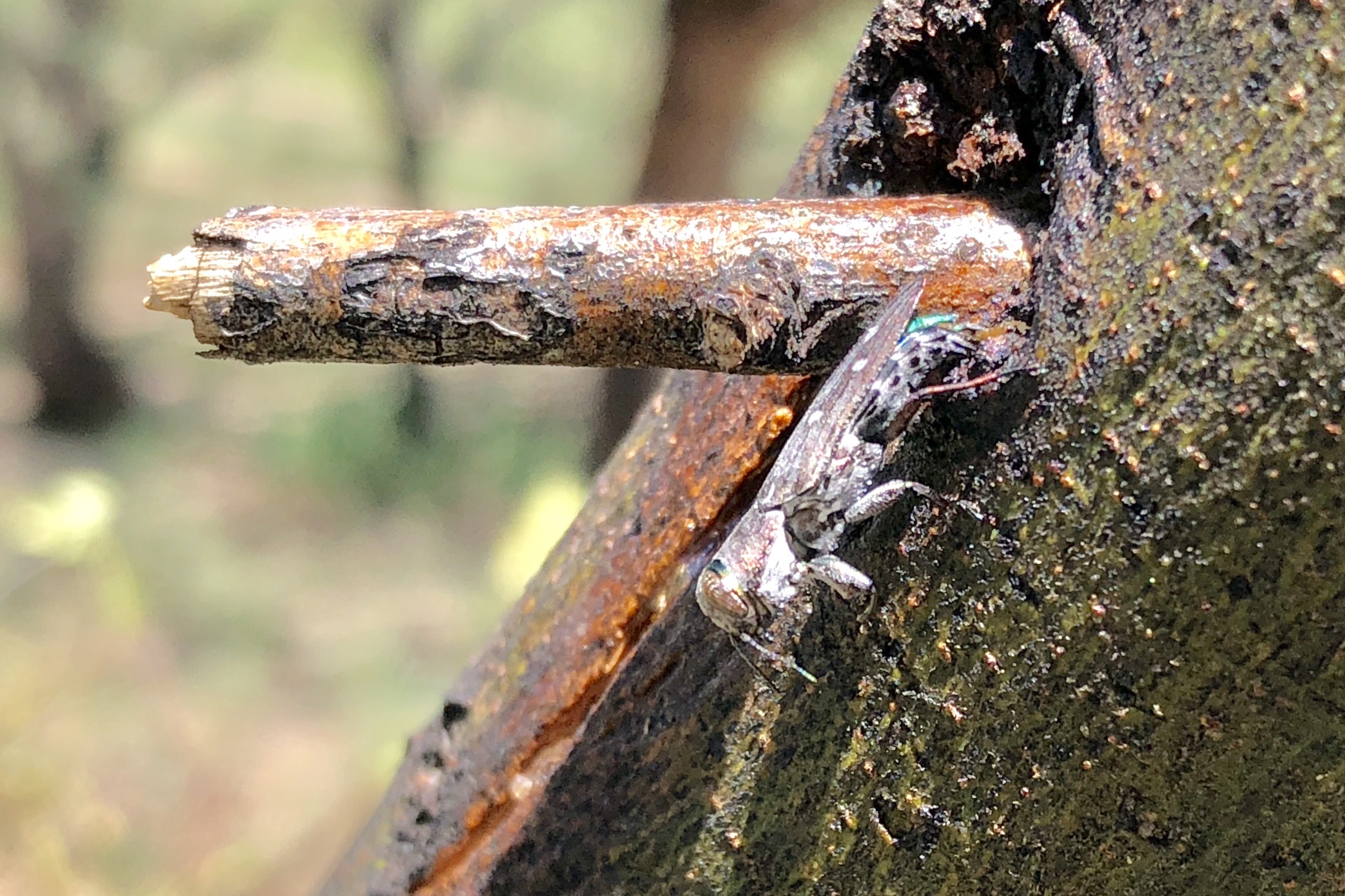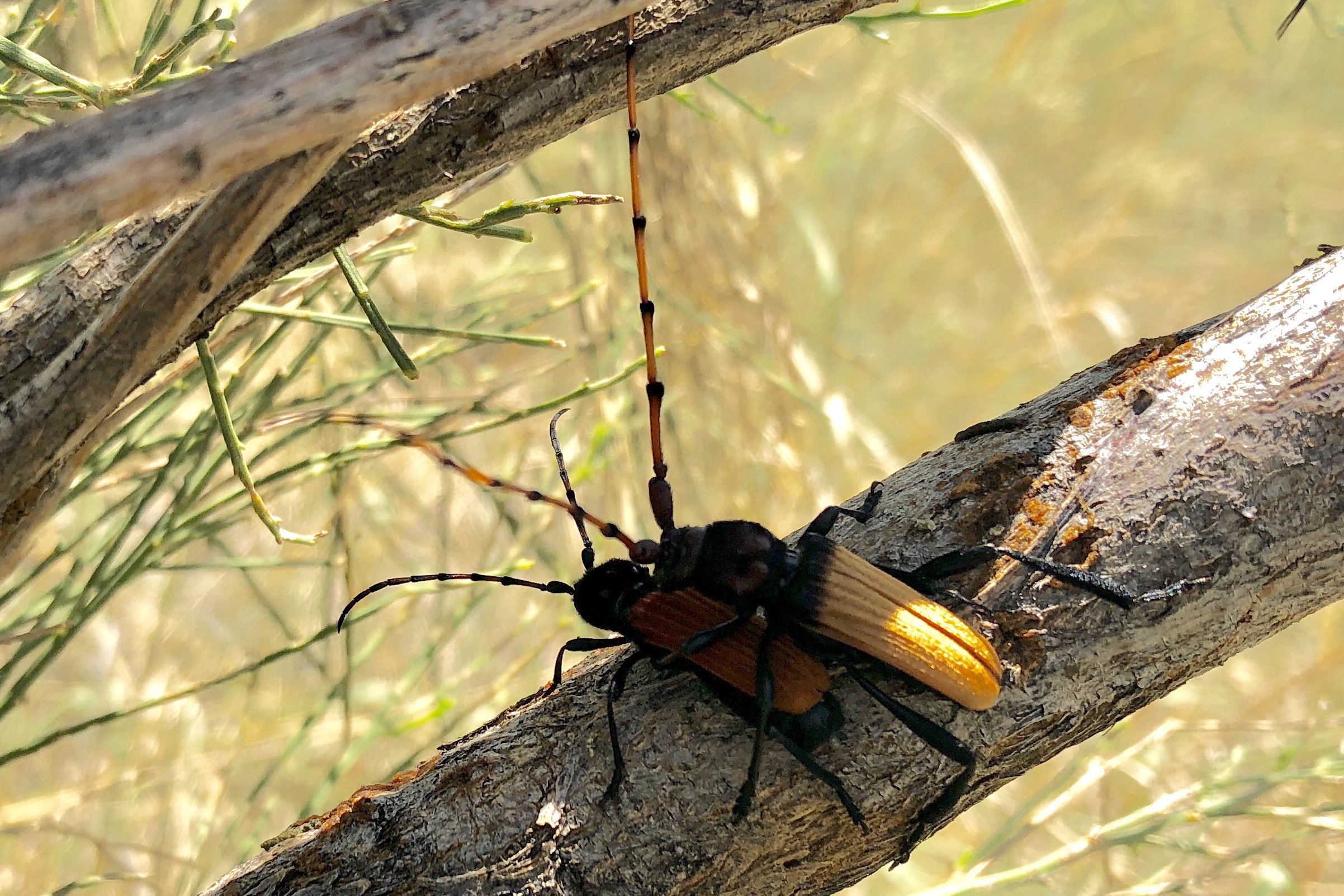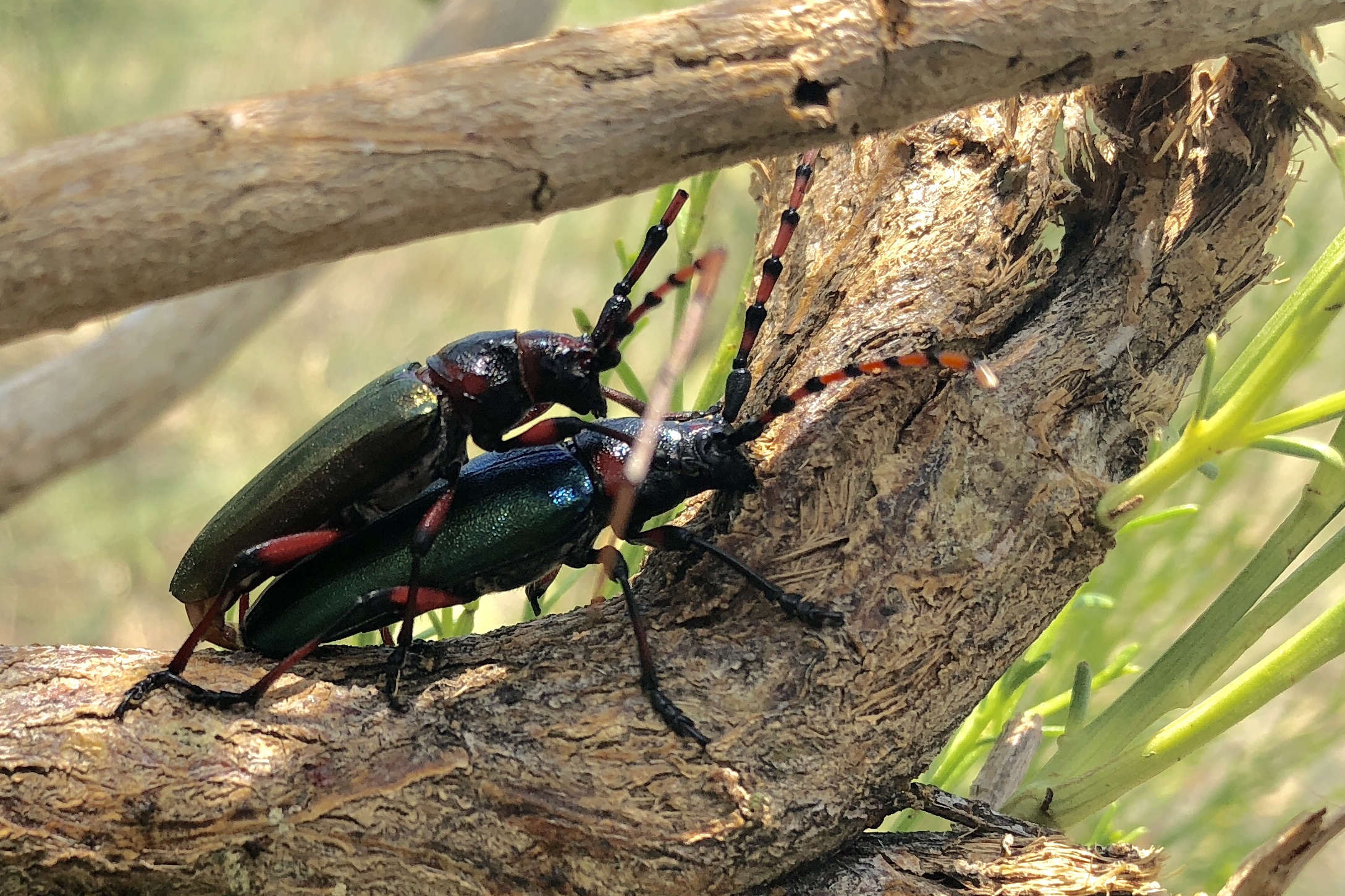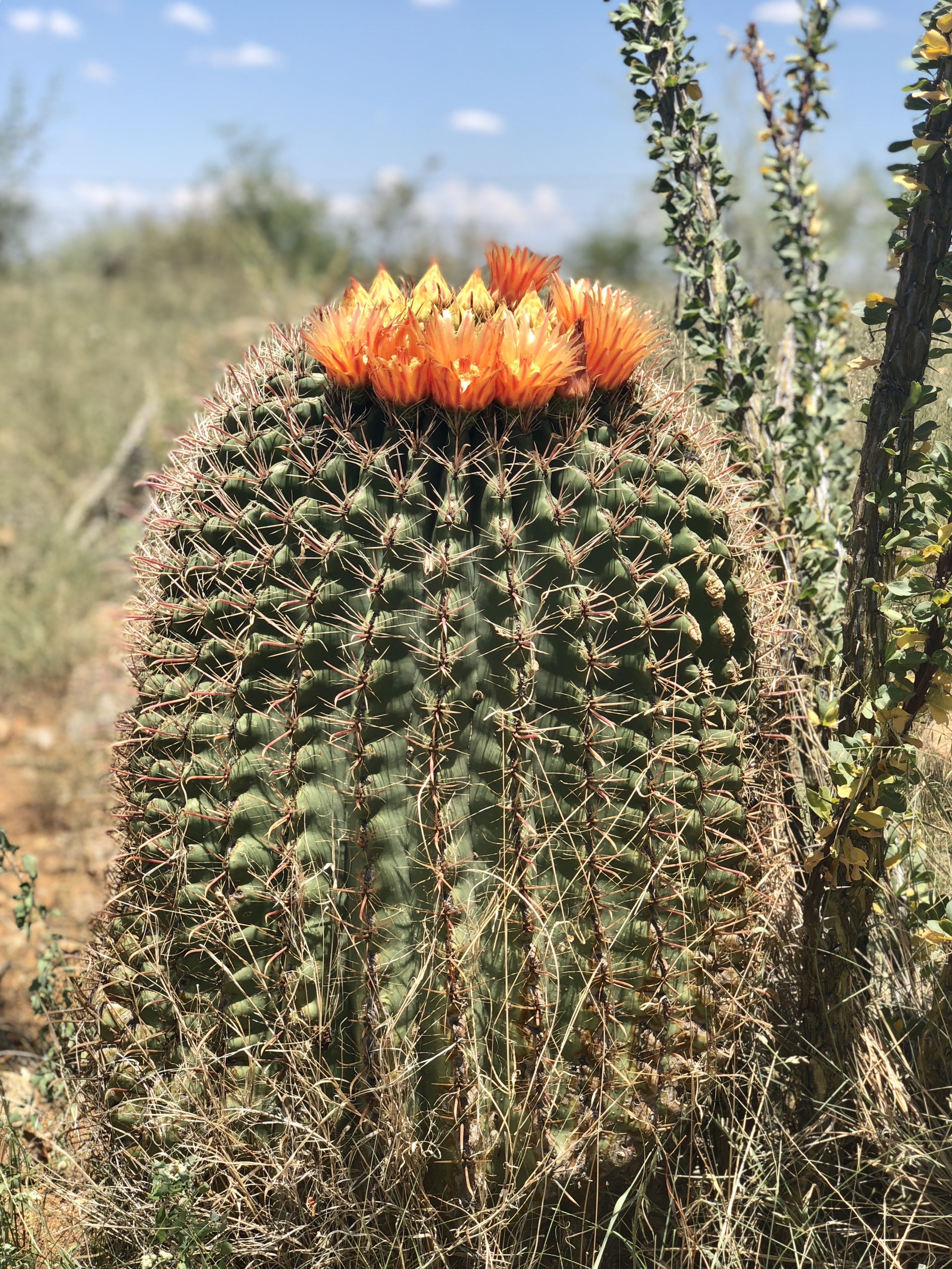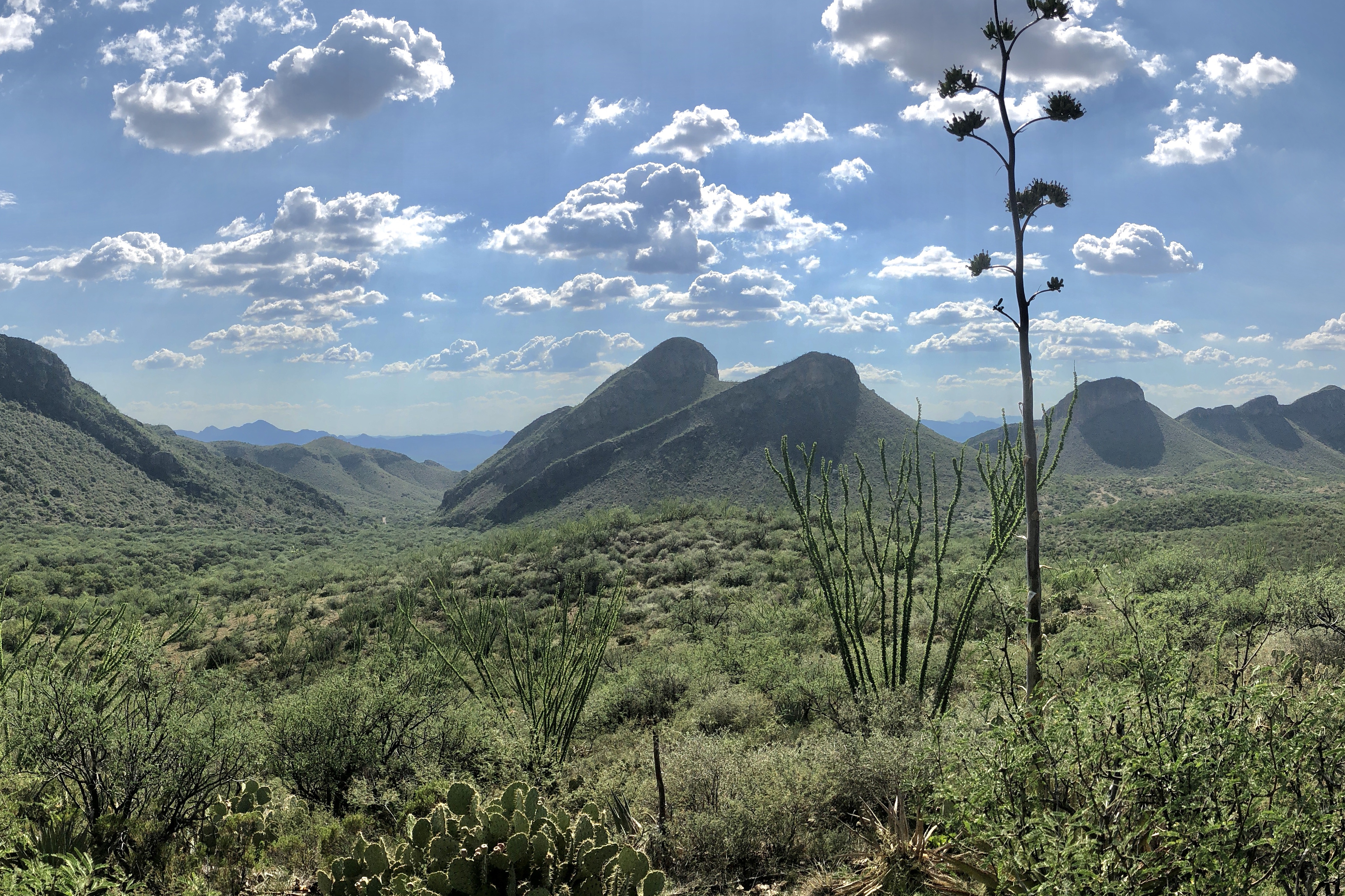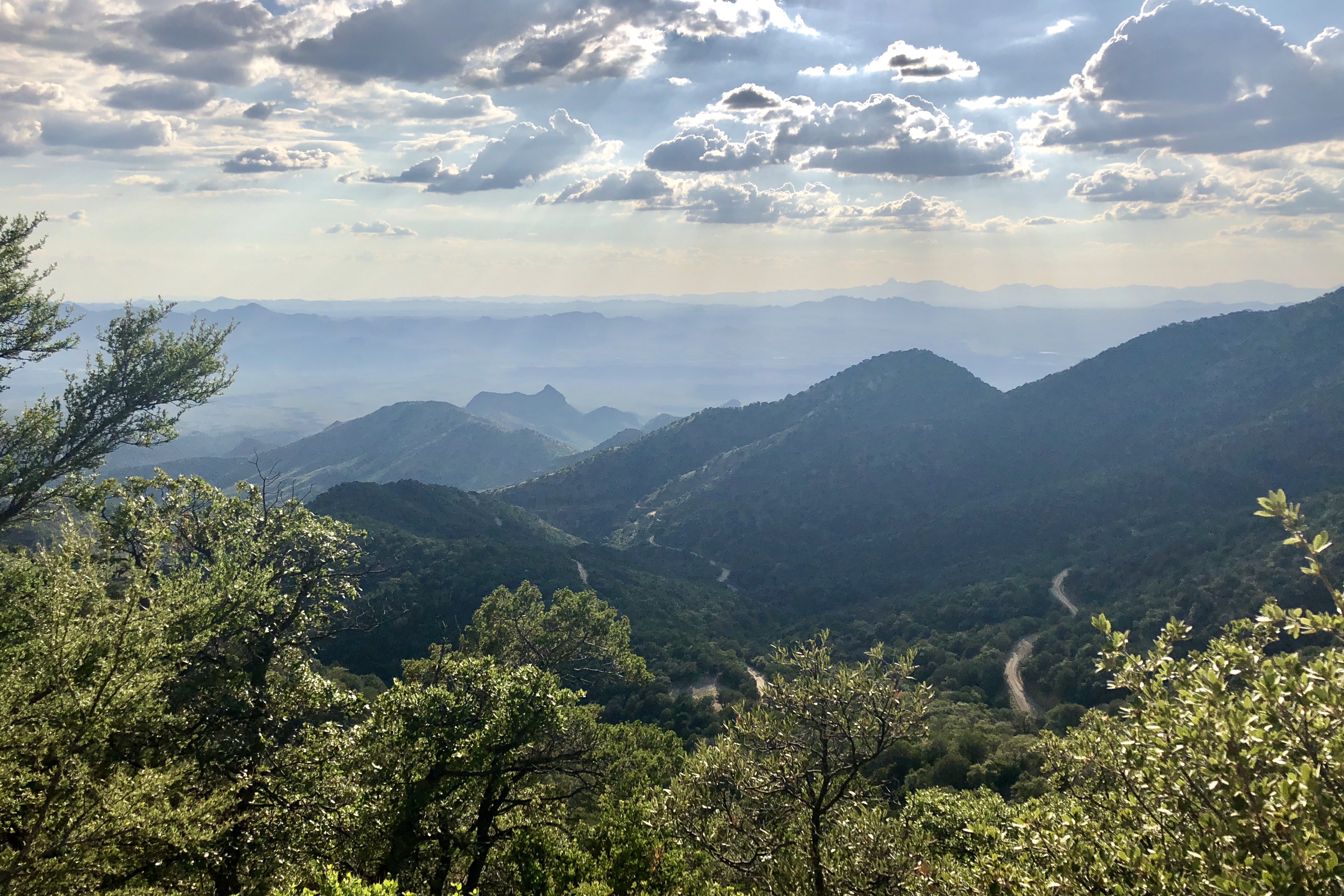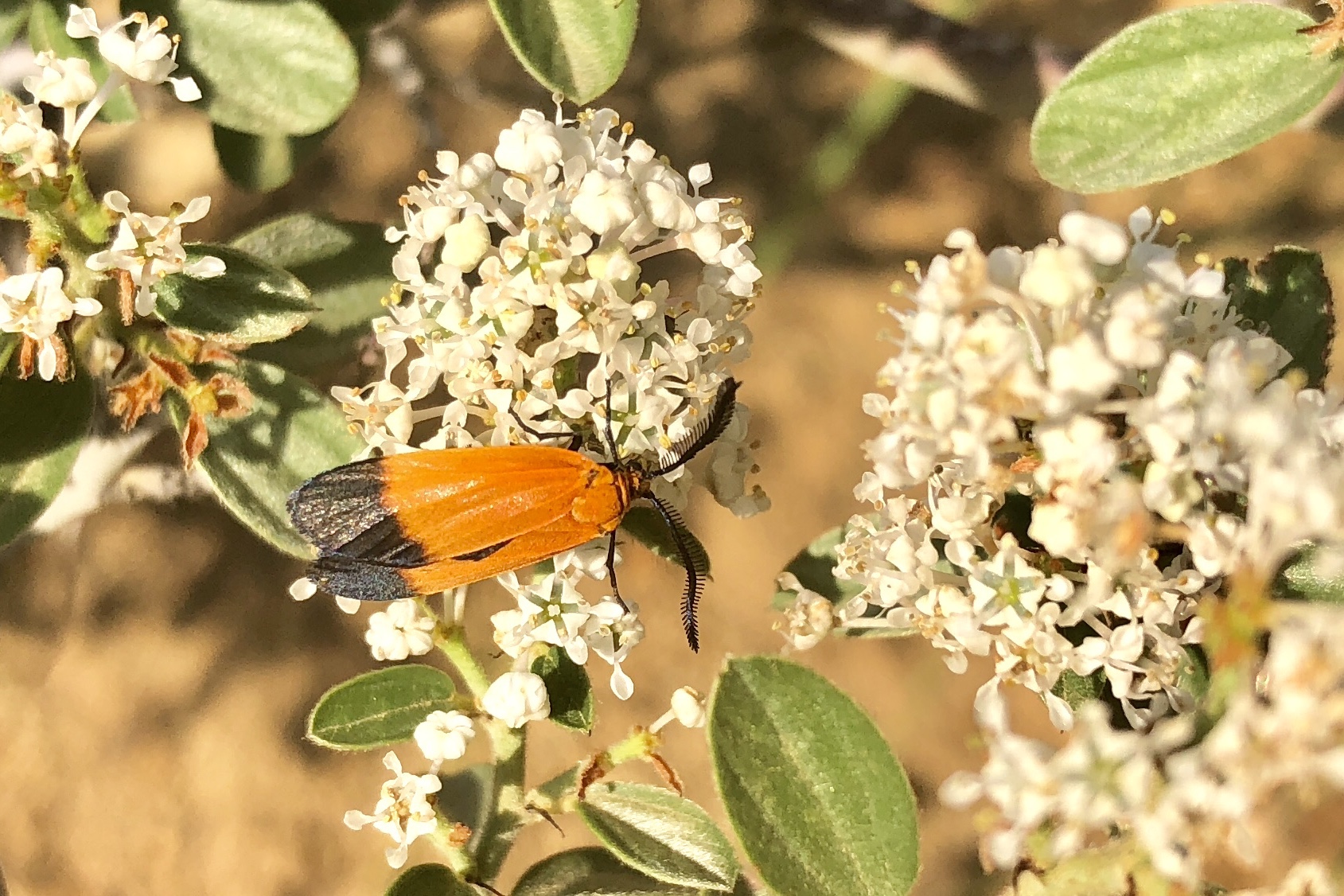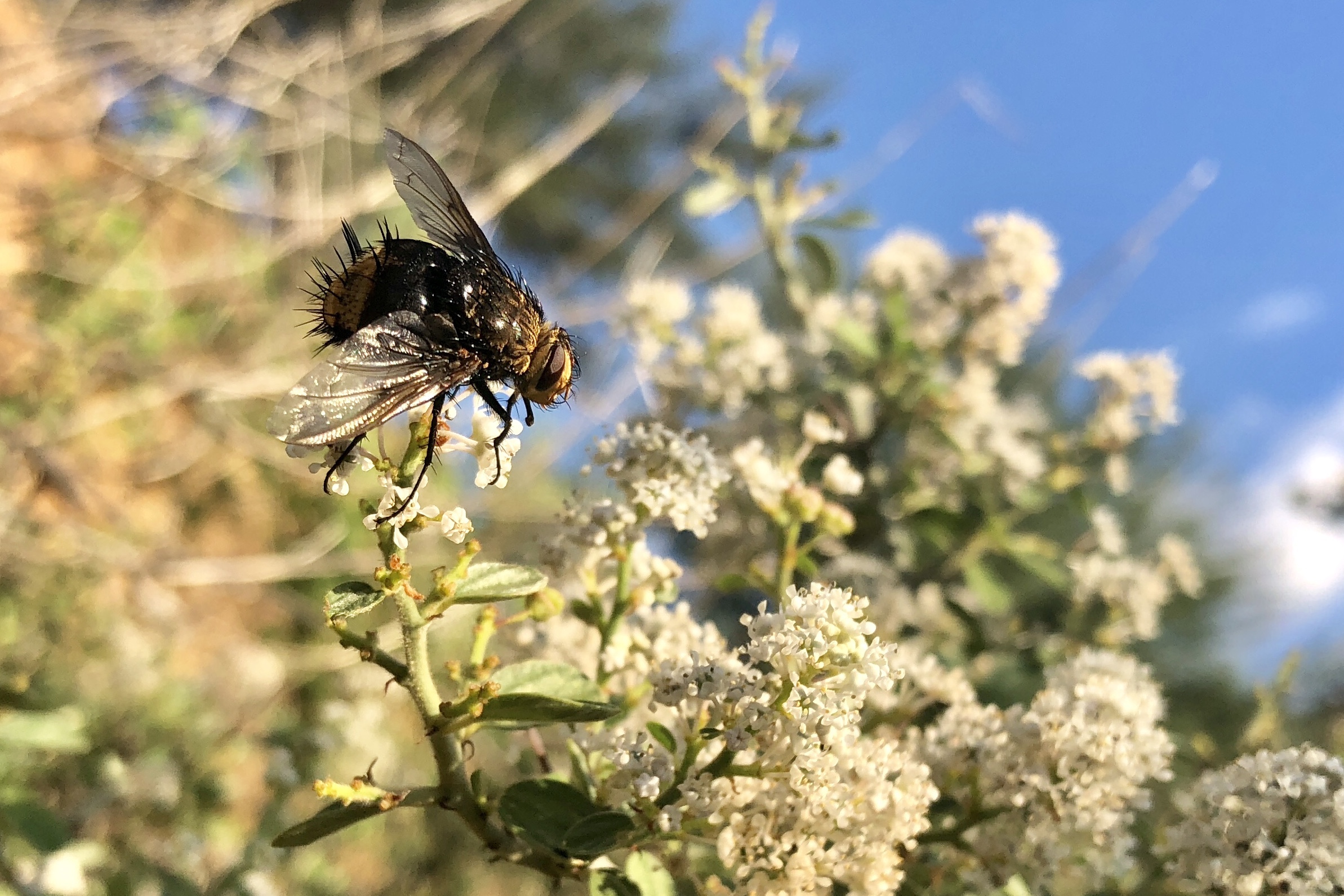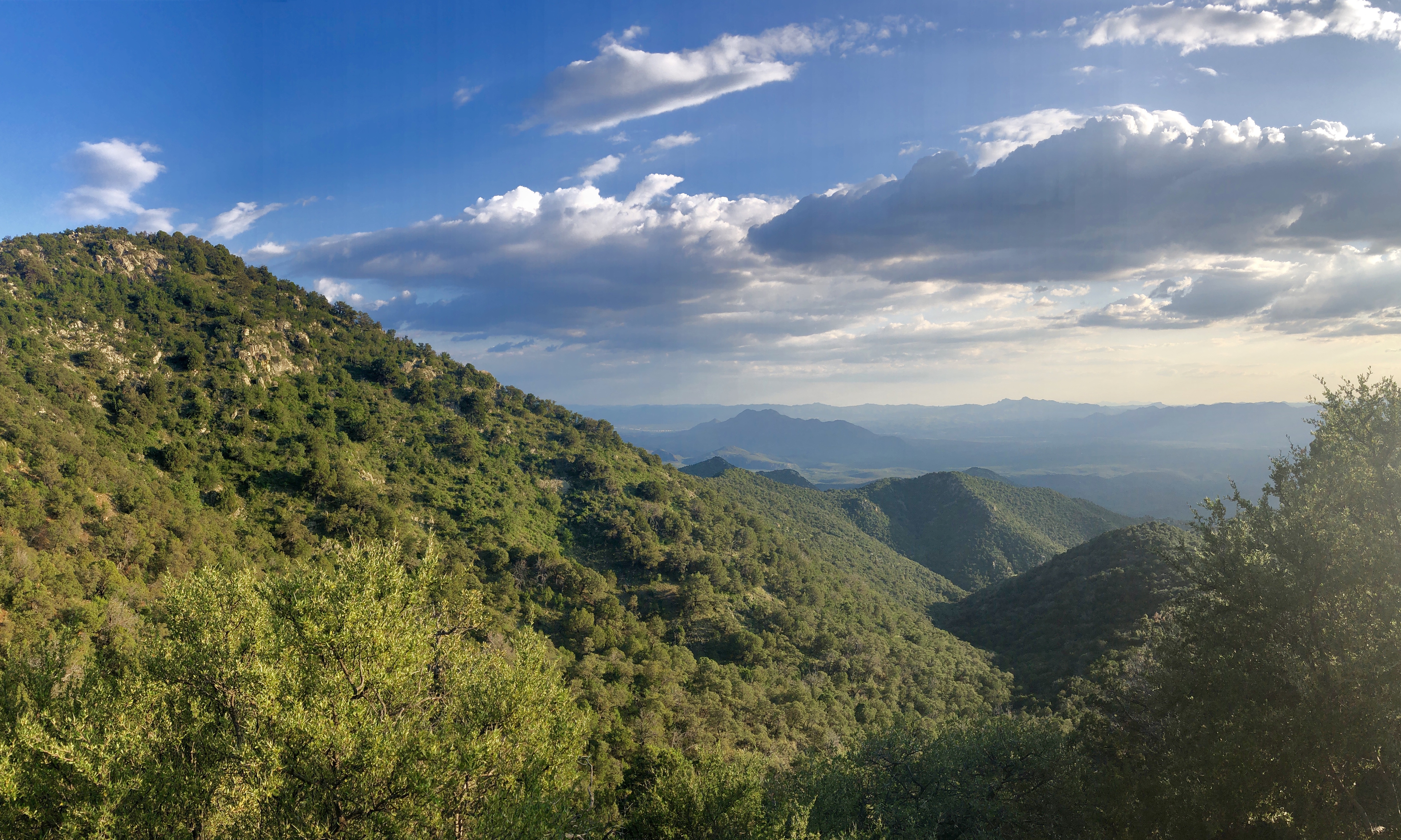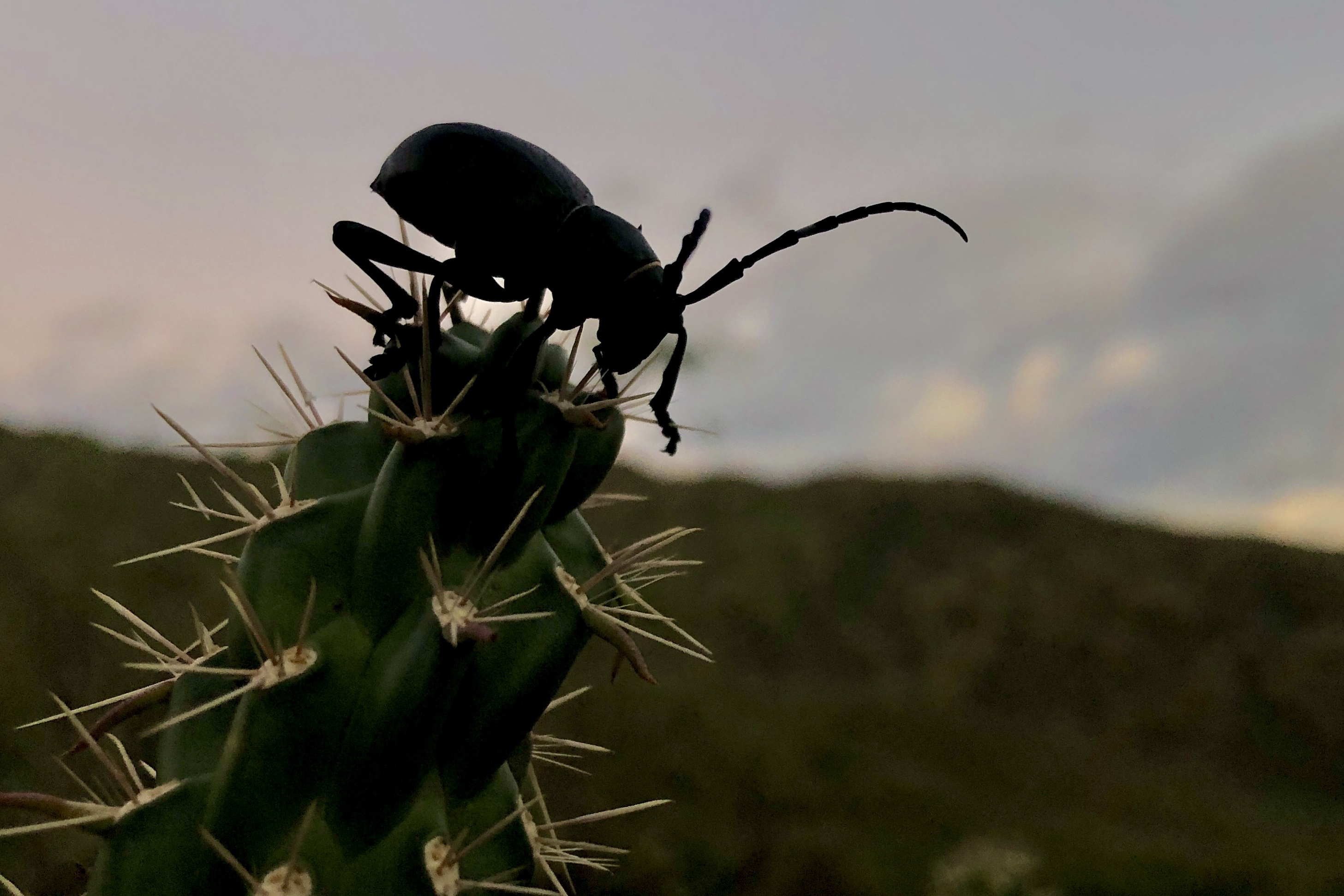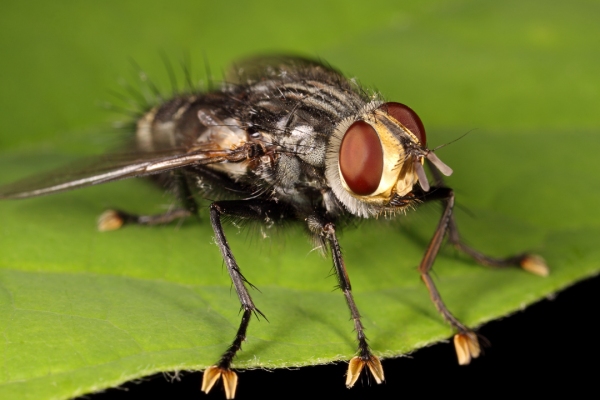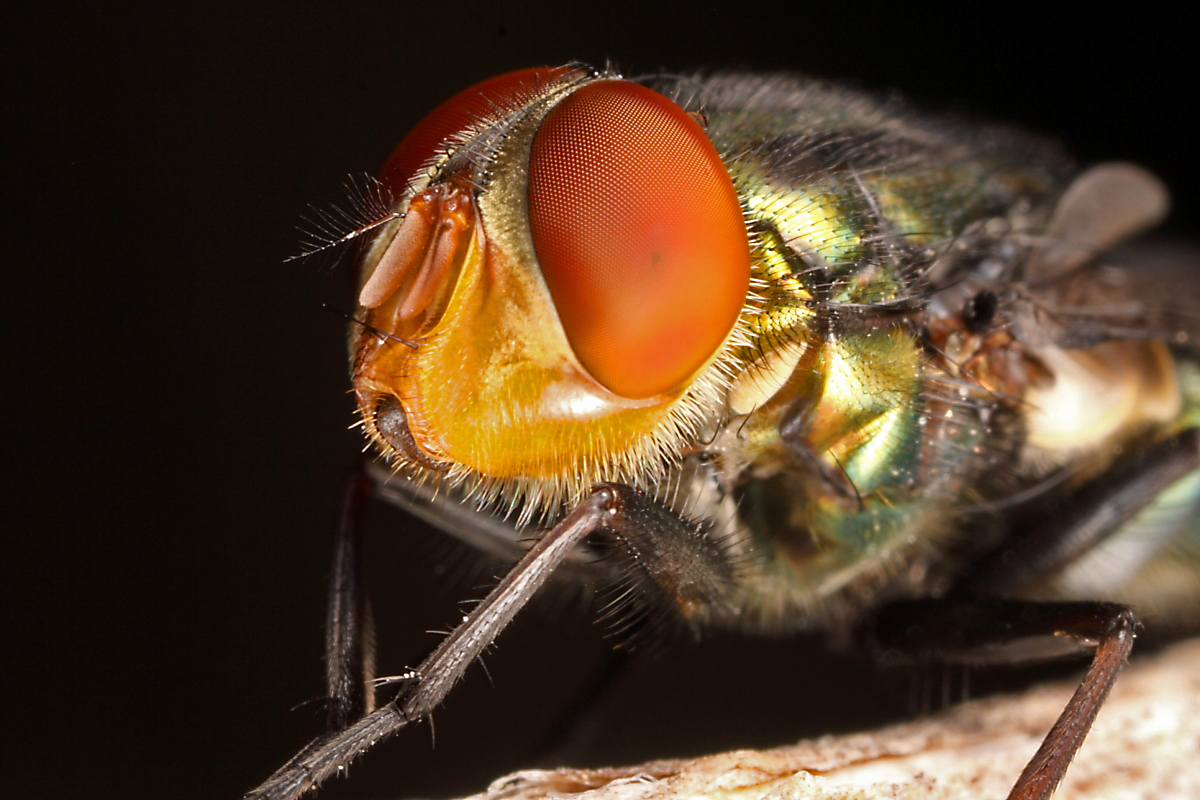This is the eighth “Collecting Trip iReport”; this one covering a one-week trip to southern Arizona, New Mexico, and California from September 7–14, 2019 with meloid/cerambycid-enthusiast Jeff Huether. Jeff has been a frequent collecting trip partner during recent years, this being our sixth joint outing since 2012. Our initial objective on this trip was to collect cerambycid beetles of the genus Crossidius occurring across southern Arizona/California—part of a larger effort to sample as many of the named subspecific taxa as possible from multiple locations (including type locations when possible) for future molecular studies. We had good success, though we did not collect every taxon that we were after (we were a tad early in soCal). Also, the fact that we had Crossidius as our primary goal did not mean that we would not concurrently be on the lookout for buprestids (me), meloids (Jeff), or other cerambycids (both of us)—and in that regard we were also successful.
As with all previous “iReports” in this series, this report is illustrated exclusively with iPhone photographs (thus the term “iReport”), with previous versions including the following:
– 2013 Oklahoma
– 2013 Great Basin
– 2014 Great Plains
– 2015 Texas
– 2018 New Mexico/Texas
– 2018 Arizona
– 2019 Arkansas/Oklahoma
Day 1 – Dripping Springs Mountains, Arizona
First stop of the trip, and we’re heading east to Safford. As soon as we got east of Superior up into the mountains we saw a place where Heterotheca subaxillaris was in bloom abundantly along the roadsides and pulled over. There were four species of Acmaeodera on the flowers, and I also found a fifth species on the flower of a small white aster. Nice first stop for the trip!
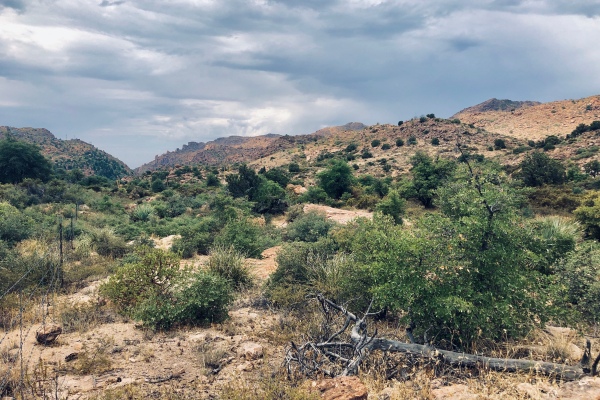
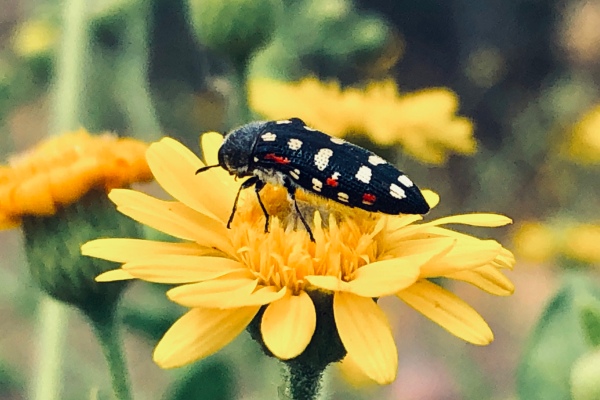
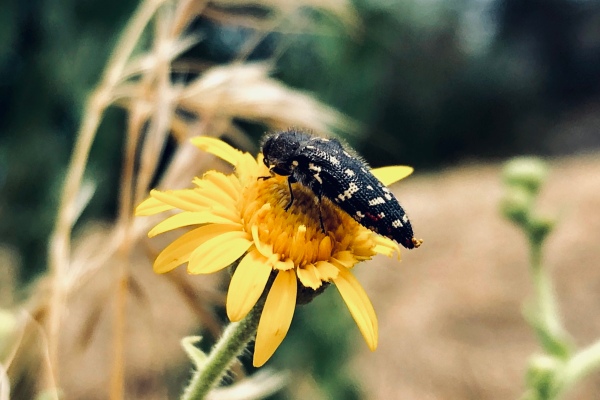

3.6 mi NW Bylas on US-70, Arizona
Continuing our way to Safford, Jeff saw some patches of sunflower and wanted to look for Epicauta phoenix. I found the first two (but not in sunflower), and then Jeff found two more. As we were walking back to the car I noticed a Crossidius suturalis sitting on Isocoma tenuisecta that was not quite in bloom, and then another nearby on the same plant. We searched the area again, but the only plants were those few right around the car.
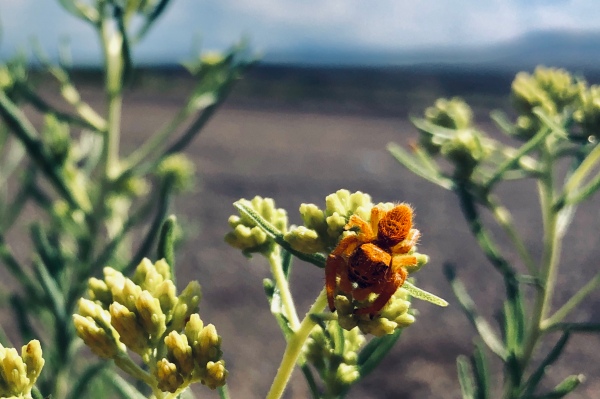
5.7 mi NE Safford, Arizona
After getting a hotel in Safford, we had time to come back to a spot where Jeff had collected Epicauta phoenix back in July. We found quite a few (see photo) on plants nearby the original collection spot. Looking around more I found an Acmaeodera convicta perched on the tip of a shrub—first time I’ve collected this species! There were several species of tenebrionids crawling on the ground, perhaps prompted to activity by cooling temps as rain whipped up in the distance. I kept one eye on the skies and the other on the plants and eventually found two more A. convicta perched together on the same type of shrub just as rain began pelting my back. We made a quick dash back to the car and called an end to Day 1 in Arizona.

Day 2 – 1.9 mi S Artesia, Arizona
We started seeing Isocoma tenuisecta just coming into bloom as we headed south of town so stopped to see if we could find any Crossidius. I looked at a lot of plants before finding a single C. suturalis sitting on one of the non-blooming plants and in the meantime found one Trichodes peninsularis and a fair number of Zonitis dunniana on the flowers. Looking around on other plants, I found one large Chrysobothris sp. (not C. octocola, but longer and narrower) on the branch of a living Acacia constricta [Edit: this is C. knulli—a new one for me!] and one Acmaeodera disjuncta, several more Z. dunniana and T. peninsularis on flowers of Hymenothrix wislizeni. Finally, I did some sweeping of the bunch grasses in the area and got a nice series of what I presume to be Agrilus rubrovittatus—first time I’ve collected that species!
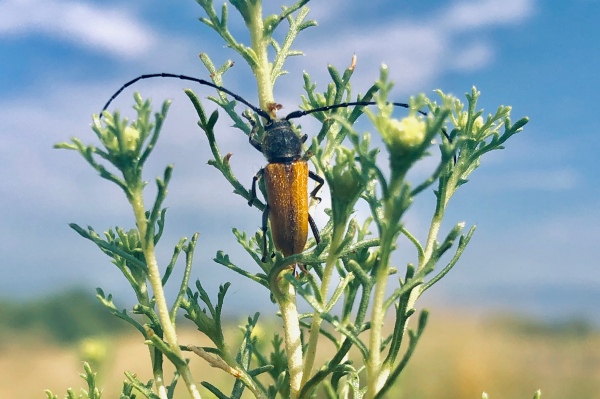
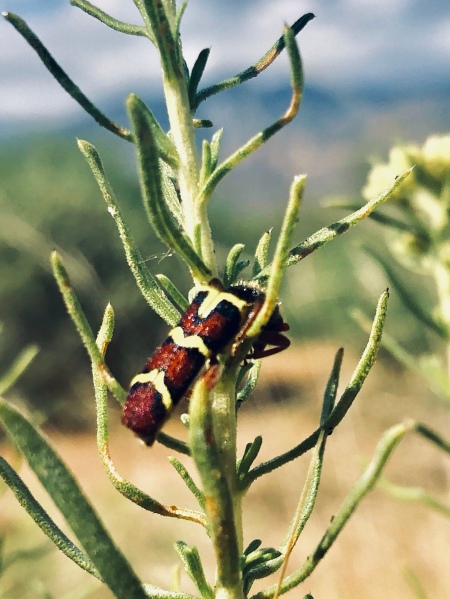
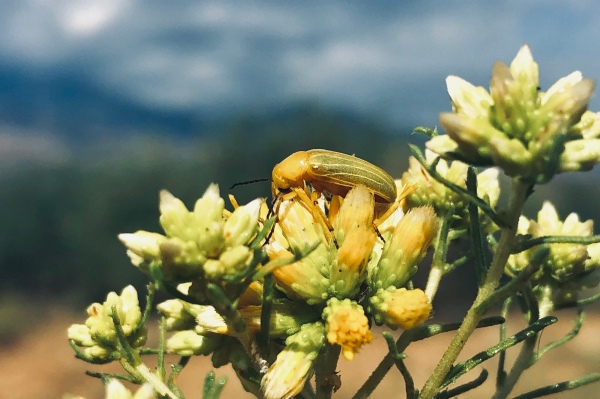
17.7 mi S Artesia, Arizona
Another stop with both Isocoma tenuisecta and also Gutierrezia microcephala coming into bloom. We immediately began finding Crossidius pulchellus on the latter and eventually collected a good series of them and also Trichodes peninsularis off the plants When I returned to the first plant we had checked (in fullest flower), a Lampetis webbii landed on it right in front of me! I eventually found C. suturalis on Isocoma tenuisecta, as well as Trichodes sp. and a few C. pulchellus. There was a tall-stemmed malvaceous shrub off which I got a male/female pair of Tylosis maculata, and sweeping produced a couple more Agrilus rubronotata, a few more T. peninsularis, and one Acmaeodera scalaris. I saw a couple of Acmaeodera disjuncta on Baileya multiradiata flowers but missed them both!
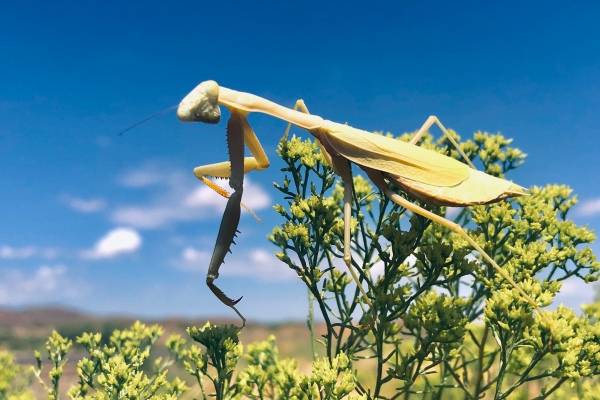

1.1 mi N Rodeo, New Mexico
We slipped just inside the New Mexico border to visit the area around the type locality of Crossidius hurdi. We found a spot where there were good stands of Isocoma tenuisecta along the roadsides and checked them out. Like the other spots today they were just starting to come into bloom, and rain had just moved through the area. We found perhaps 20 Crossidius individuals total, and honestly they were so variable that I don’t know whether they represent C. suturalis, C. hurdi, or both! [Edit: they are all C. suturalis] I also collected one Sphaenothecus bivittatus and several individuals each of three species of clerids on the flowers of these plants. A male Oncideres rhodosticta was found on the twig of Prosopis glandulosa, and I also found a cool meloid that I’ve never seen before—Megetra punctata!
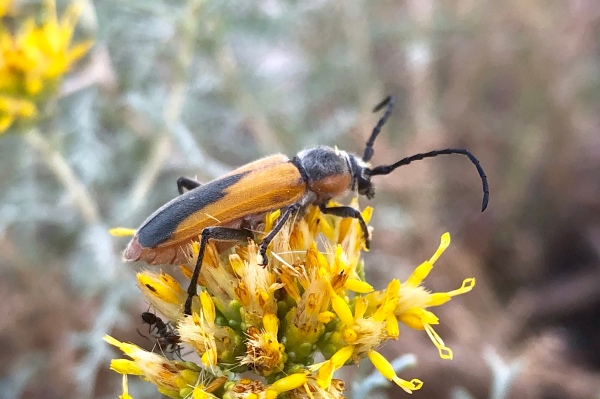

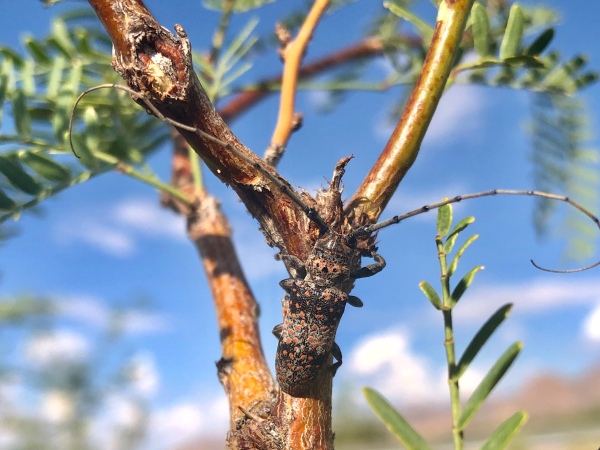
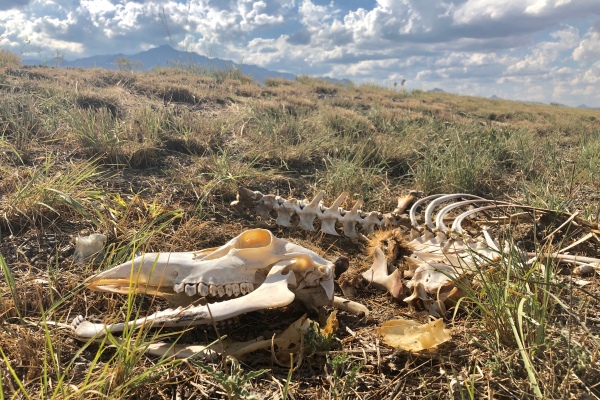
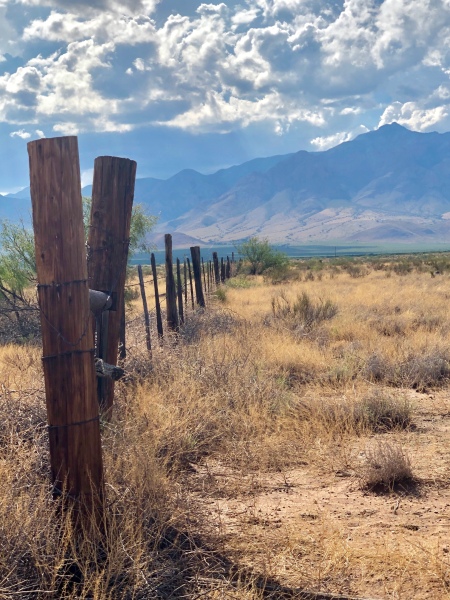
Willcox Playa, Arizona
We plan to visit Willcox Playa tomorrow (my inaugural visit!), but we had some time at the end of the day and decided to come take a look. There were some stands of Isocoma tenuisecta at the north end of the playa, and I found just a couple of Crossidius individuals on them, presumably C. suturalis, but it looks like they are bedding down for the evening. Also got a couple of Enoclerus sp. on the flowers.
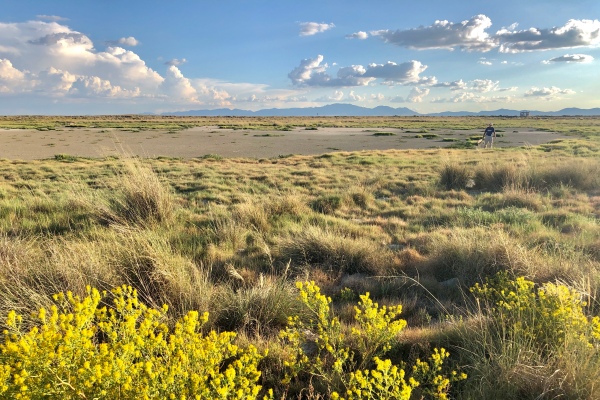
Day 3 – 8.4 mi SE Willcox, Arizona
On our way towards the Chiricahua Mountains to see if we can find any Crossidius host plant stands. We found patches of Isocoma tenuisecta and Gutierrezia microcephala along Hwy 186 southeast of town—the former was just coming into bloom, but there were plenty of Acmaeodera (scalaris, disjuncta, and amplicollis) on the flowers, including on the unopened heads. We found perhaps a dozen Crossidius suturalis on them as well, and Jeff found one small female that looks like C, hurdi [Edit: it is C. suturalis]. I looked at a lot of Gutierrezia before finding a single C. pulchellus sitting on one of the plants. The same diversity of Acmaeodera as well as a few A. gibbula and T. peninsularis was also found on flowers of Hymenothrix wislizeni, and I took a series of about 10 specimens of what I looks like A. parkeri on flowers of what appears to be Stephanomeria pauciflora. There were also some tiny membracine treehoppers on a thorny shrub (maybe Condalia?) being tended by ants—both adults and young, and I collected a few of the adults.


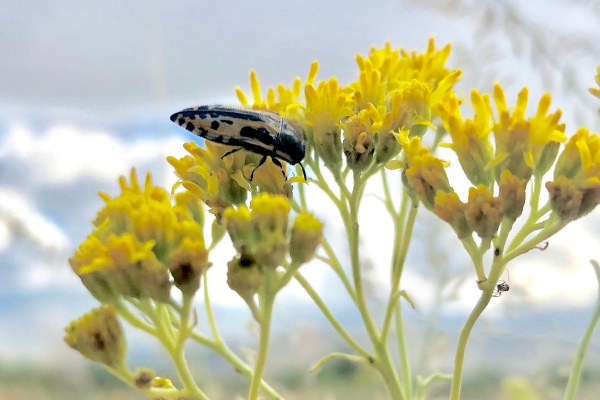
Jct AZ-186 & AZ-181, Arizona
After passing over a small range towards the Chiricahuas we didn’t see any Isocoma tenuisecta until we got to Hwy 181. There were some Baccharis sarothroides at the junction also, so we stopped and looked around. The Isocoma was just barely coming into bloom, but I found two Crossidius on them—one male C. suturalis and one small female that may be C. hurdi [Edit: nope, it is C. sururalis]. Heterotheca subaxillaris was in bloom abundantly, but there were no Acmaeodera on them and the area in general looked quite dry. I did find two A. decipiens on Sphaeralcea sp., and in the way back to the car I spotted a huge Lampetis webbii hanging on Ericameria nauseosa (which we’re not even close to blooming)—surely an incidental record.

4.1 mi SE Willcox, Arizona
We came back towards town where things seemed to be further along and found stands of Isocoma tenuisecta in full bloom at the junction of Blue Sky Rd (a classic Arizona collecting locality). Crossidius suturalis were out in numbers on the flowers! Every now and then I got one that seemed too heavily maculated, making me think it could be C hurdi, but in the end I decided that all represented C. suturalis.

Willcox Playa, Arizona
We went to the Playa to see if there were any tiger beetles to be had. I hiked to the edge of the Playa, and within a few minutes I saw a Cicindela pimeriana—just the second one I’ve encountered (the first was last night at gas station lights)! With that promise of more, I hiked the entire playa edge and never saw another one! I only saw one other tiger beetle—Cylindera lemniscata—seems I’m a bit late in the season for the Willcox Playa tiger beetles. Nevertheless, it’s a cool place and was fun to see. I’ll definitely be back during the summer, not just for here but for nearby Blue Sky Rd. Arriving back at the car, I did find one Moneilema sp. (I think M. appressum) on cholla. There were Crossidius suturalis abundant on the Isocoma tenuisecta, which, like the last spot, was in full bloom, but I’d gotten my fill of them at the previous spot and didn’t collect any.
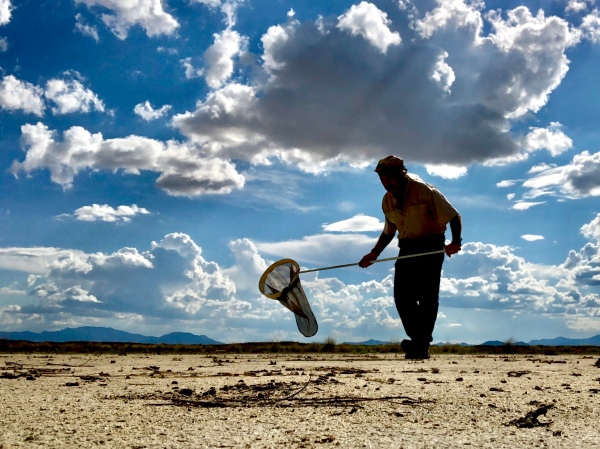
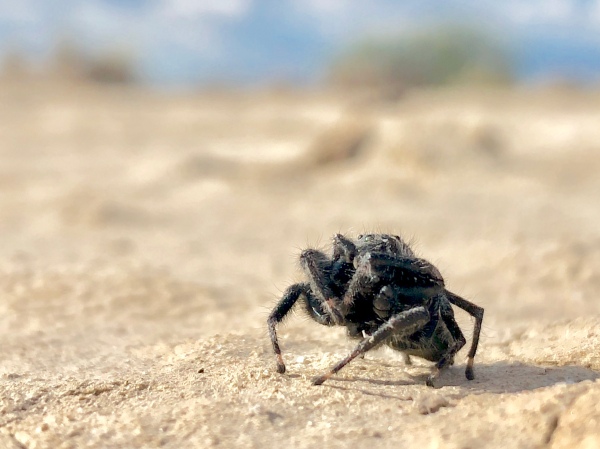
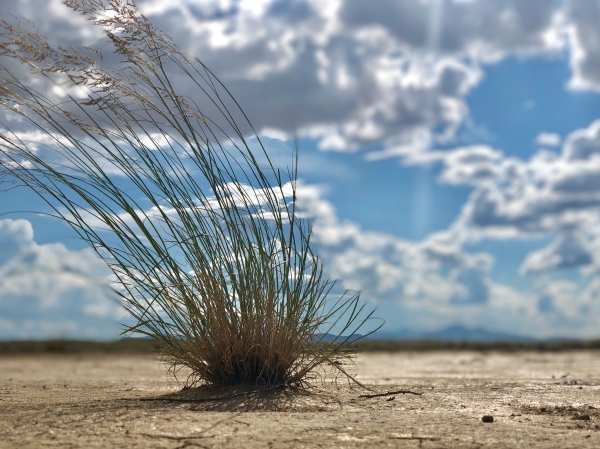
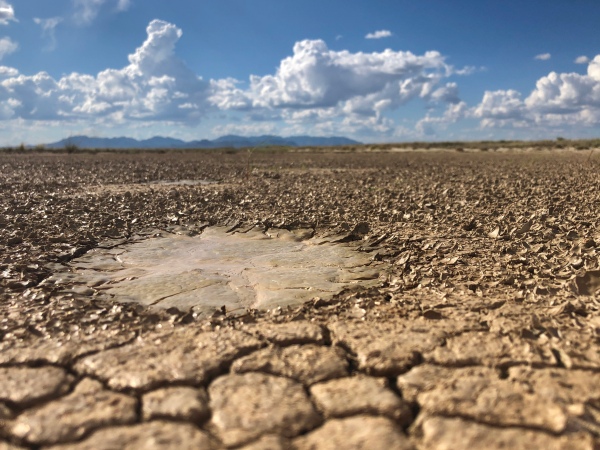

Willcox, Arizona (epilogue)
Collecting the insects from the field is only the beginning. Each night they must be processed for storage until they can be mounted once back in the lab.
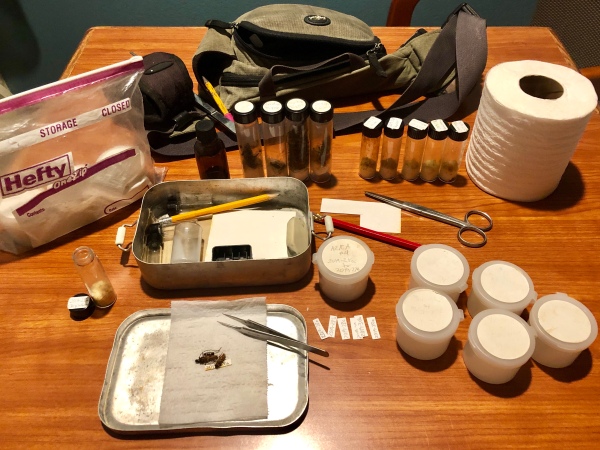
Day 4 – Santa Rita Mountains, Box Canyon, Arizona
We passed through Box Canyon on our way to Madera Canyon, so we decided to stop near the dry falls where last year I’d collected such a nice diversity of Acmaeodera spp. on flowers of Allionia incarnata. There was evidence of recent rain, and we found the patch nicely in bloom with four species (scalaris, decipiens, cazieri, and parkeri) on the flowers. Nearby in the wash before it crossed the road was a yellow composite (Xanthisma gracile), from which I collected the first three as well as gibbula, rubronotata, and disjuncta. Euphoria verticalis scarabs we’re flying plentifully around the flowers also—first time I’ve seen the species.

Flats below Madera Canyon, Arizona
There are records of Deltaspis tumacacorii from Madera Canton at Proctor Rd collected on Croton, so we stopped by on our way south to give it a try. This seems to be a rather hard-to-find bug, so I didn’t have high expectations, and that’s a good thing because I didn’t see the beetle nor anything that even remotely resembled Croton. I ended up checking out the desert broom (Baccharis sarothroides) in the area on which I’d collected Stenaspis verticalis arizonensis and Tragidion spp. (also without high expectations). There were some interesting congregations of Euphoria leucographa feeding at sap flows on the stems and a few Stenaspis solitaria but otherwise litttle of note. I did find one Hippomelas planicauda hanger-on on a low fabaceous shrub (not Mimosa biuncifera), and inspecting the Gutierrezia microcephala plants revealed nothing but a single Acmaeodera rubronotata.
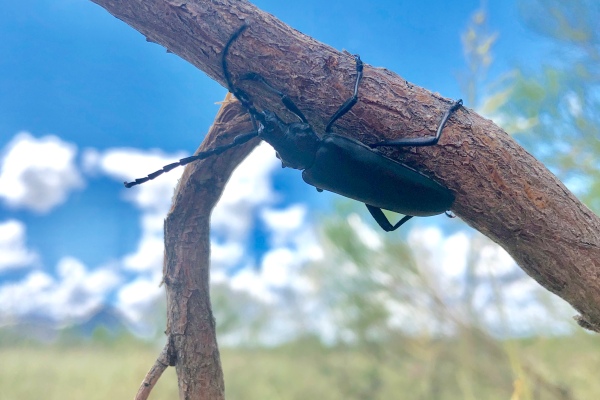
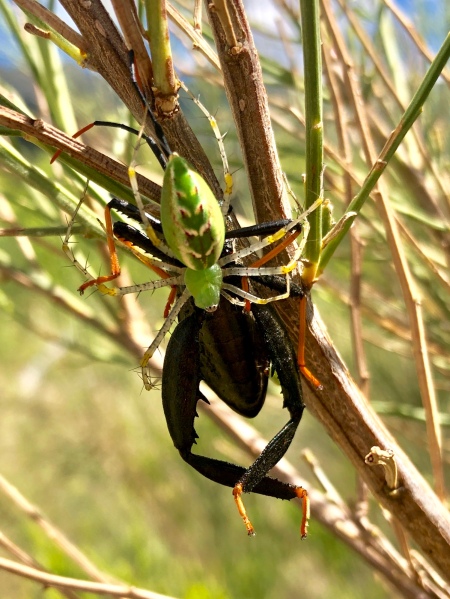

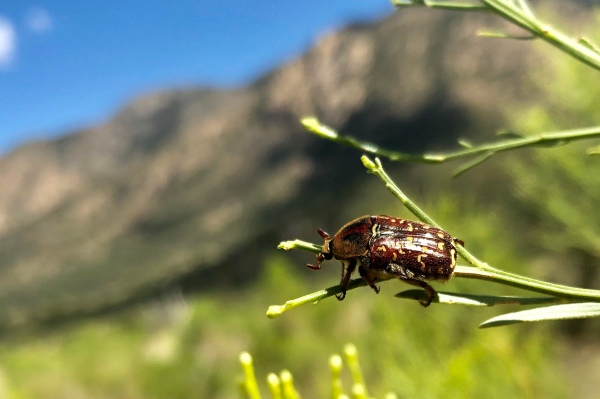
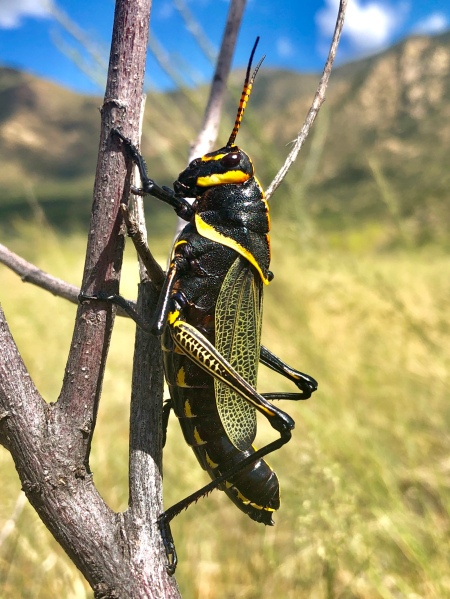
Madera Canyon Rd, Arizona
We stopped real quick down the road on the way out of Madera Canyon because we saw stands of Isocoma tenuisecta, although they were still just shy of blooming. We looked at quite a few and found a single Crossidius suturalis—probably we are a tad early, and the area looks like it could use a good rain to pop things out and bring the Isocoma into bloom. We also saw low plants that could be the Croton that Deltaspis tumacacorii has been found on [Edit: I do not believe these are the plants, as they are too low]. Would be good to revisit this spot after a good rain!
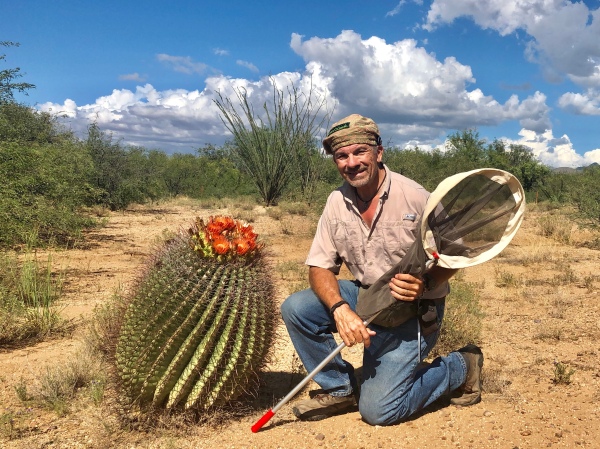
Tumacacori Mountains, Walker Canyon, Arizona
Our second shot at Deltaspis tumacacorii, which has also been taken in Walker Canyon. We found thick stands of knee-high flowers that we immediately took to be the Croton—just as described by our contact—on which the beetles have been taken. However, we quickly began doubting that ID and decided the plant must be some type of composite. That would make more sense from a host plant standpoint, as all known host plants for Crossidius spp. are composites (subsequently determined to be Pseudognaphalium leucocephalum, family Asteraceae). We looked at the dense stands for quite some time but didn’t see any beetles (or much of anything else) before deciding that we were probably too early—had the beetles already emerged we would have at least found some stragglers. I did take a few Acmaeodera on the flowers (scalaris and rubronotata), as well as a large cantharid (Chauliognathus profundus). I also took single A. amplicollis and A. rubronotata individuals off of a large helianthoid composite (Viguiera cordifolia) and one A. rubronotata on a small yellow composite (Xanthisma gracile). There were a multitude of darkling beetles crawling in the ground—in one spot I saw five individuals of several species all within a one-square foot area. We’ll have one more shot at D. tumacacorii tomorrow at Kitt Peak.
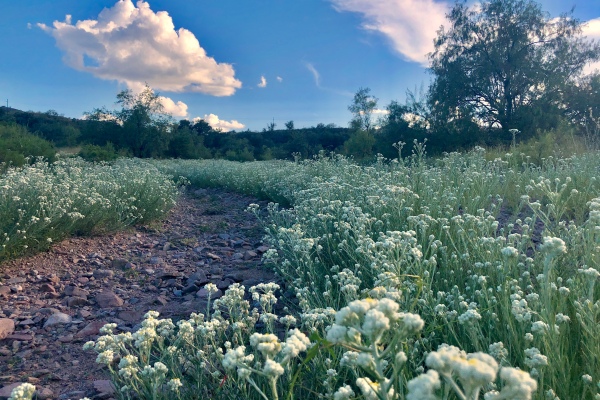

Day 5 – Pan Tak, Arizona (road to Kitt Peak)
Today’s destination is Kitt Peak to look for Deltaspis tumacacorii and Acmaeodera resplendens, but at the entrance we saw some Isocoma tenuisecta just coming into bloom and decided to check it out. We found a half-dozen Crossidius suturalis but had to really work for them. Alliona incarnata was also nicely in bloom, but I got only one Acmaeodera parkeri? and one A. alicia off of the flowers. There was some Gutierrezia microcephala present, also not quite in bloom, off of which Jeff got a pair of C. suturalis and gave me one. Kinda dry but lots of flowers—wish there would have been more beetles coming to them.

Kitt Peak National Observatory, Arizona
Our last chance to find Deltaspis tumacacorii, and I also got a tip that Acmaeodera resplendens has also been taken up here. We immediately found several species of Acmaeodera (amabilis, amplicollis, decipiens, and rubronotata) abundantly on several composite flowers—Heliomeris longifolia, Heterotheca fulcrata, Hymenothrix wrightii, Solidago velutina, and Gutierrezia microcephala, and I found a single A. solitaria on a pink malvaceous flower, but no A. resplendens. We also searched thoroughly for any Croton-like plant for D. tumacacorii but found nothing. The Kitt Peak records of that species are older than the Walker Canyon, Peña Blanca, and Madera Canyon records, and most of the records seem to be in August rather than September, so I suspect we are a bit late for both the species and its host plant. My plan at this point is to return sometime during the middle of August and enlist the help of the source of one of the recent records to accompany me.


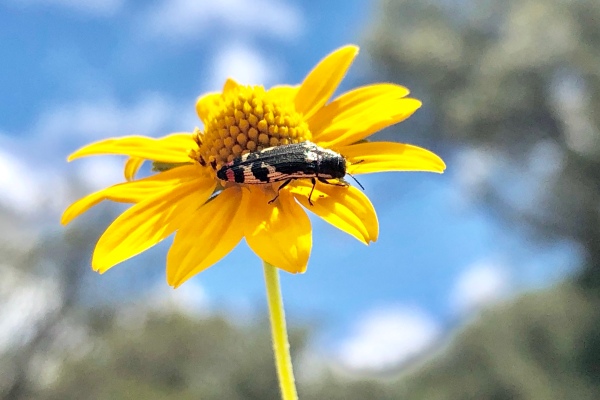
Road to Kitt Peak, Arizona
We had noticed Gutierrezia microcephala and some other yellow composites in bloom about halfway up the mountain on our way to Kitt Peak and decided then to stop and take a look around on the way down. I took “down” the mountain, Jeff took “up.” I hadn’t walked very far when I saw what I at first thought was the cantharid Chauliognathus profundus (which I had seen yesterday at Walker Canyon preying on another cantharid) on G. microcephala flowers, but something about it gave me pause—it was too cylindrical and robust. I leaned closer to get a better look and realized it was a cerambycid—one that I did not recognize, a beautiful orange color with black elytral apices and pronotal spots! I quickly grabbed it with my right hand, immediately saw another elsewhere on the bush and grabbed it with my left hand, and as I stood there trying to fumble a vial out of my pack to put them in I saw a third individual taking flight from the bush and spiraling into the air and out of reach! I shouted out to Jeff, who came down to where I was, and showed him what I’d found, and together we decided that it must be Mannophorus forreri—a very uncommonly encountered species and more than adequate consolation for not finding Deltaspis tumacacorii earlier in the day. We spent the next hour searching up and down the roadsides, and I ended up with two more individuals from Gutierrezia flowers and two from Heterotheca fulcrata. Jeff found an additional individual on flowers of Thelesperma sp. I also picked up a few black and white Enoclerus sp., one on flowers of G. microcephala and a mating pair on flowers of Acacia berlandieri. We have a long drive to California in front of us now, and it sure is good going into the drive with such a great find under our belts.


Day 6 – Cajon Pass, California
Finally made it into California! Once we turned off the interstate, we made a quick stop to look at the roadside habitat where we spotted a good stand of Isocoma sp. in full bloom. We looked at quite a few plants but didn’t find any beetles on them. There were also good numbers of Ericameria nauseosa plants as well (host for Crossidius coralinus), but they weren’t quite yet in bloom yet and the only thing I found on them was a mating pair of Agrilus walsinghami. Moved on quickly to the next spot!

Lancaster, California
We met up with Ron Alten and traveled to a classic “Crossidius” collecting site (up to four species have been taken there). We’d stopped at a couple of places on the way there but not found anything—either the host plants were not yet blooming or no beetles were found, so we had the feeling that we might be a week or two early. We had to drive into the habitat a ways before we started seeing host plants—in this case Ericameria nauseosa—but eventually we found a nice large area with the plants in full bloom. It didn’t take long before we found Crossidius coralinus (populations in this area are assigned to subspecies ascendens) on the blossoms. We worked the area for a couple of hours in the heat (97°F) and got a sufficient series for study with some individuals in ethanol for DNA analysis. Males exhibit quite a bit of variability in the degree of development of the elytral markings (thin to moderately expanded sutural marking), while females were quite consistently fully expanded. Males also outnumbered females by 3:1, and all of the individuals I collected were perfect and not damaged—both suggesting that the species is just beginning to emerge. Perhaps that is why we did not find individuals of the other species (mojavensis, suturalis, and testaceus). What I did find, however, was a small trachyderine cerambycid that none of us recognized! It was on the flowers of E. nauseosa—just like C. coralinus—and at first I thought it might be a small, aberrant C. coralinus, but the elytra are completely blue-black and the size was significantly smaller than the smallest C. coralinus male that we saw. I scanned BugGuide and didn’t find anything that matched, so this will have to remain a mystery for now. [Edit: I later determined this to be a heavily marked C. discoideus blandus. In the field I couldn’t see the orange laterals on the elytra.]

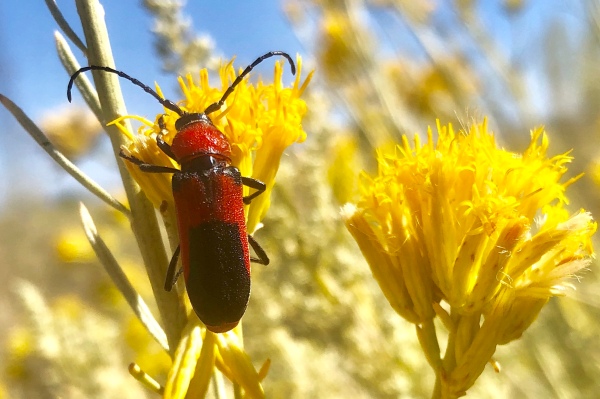

Day 7 – Santa Catalina Mountains, Mt. Lemmon, Arizona
We decided we were just a bit to early for things in California and decided to come back to Arizona where we’d been having better success. I wanted to take another shot at Acmaeodera resplendens and had been told that Oracle Ridge Trail was a good locality for them, though maybe a bit late. We began seeing them soon after getting out of the car—unmistakable by their brilliant metallic green to copper color. They were not numerous, so I had to work for them and walked the trail about 2 miles out collecting them off a variety of flowers. The majority were on Bahia dissecta, and I also found occasional individuals of them and other species of Acmaeodera (amabilis, amplicollis, decipiens, and rubronotata) on flowers of Heliomeris longifolia, Heterotheca fulcrata, Hymenothrix wrightii, Ageratina herbarea, Achillea millefolium, sweeping, Cirsium sp., and prob. Viguiera dentata. One other beetle I found was a Megacyllene sp. sitting on a plant under a stand of Robinia neomexicana [Edit: this is M. snowi snowi—another new one for my collection!].
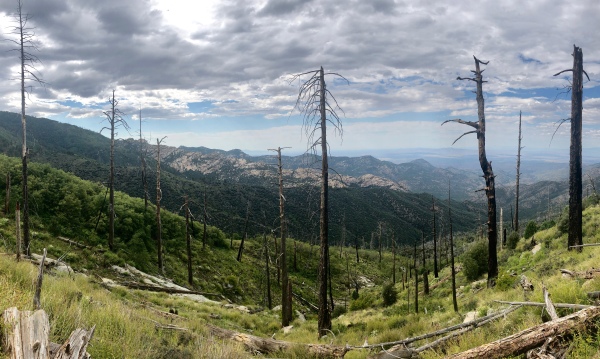
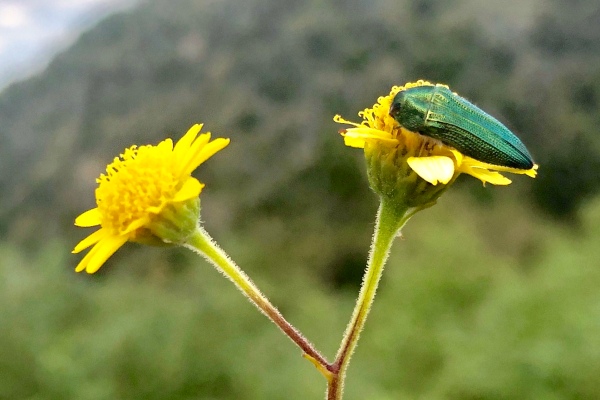

Scenic Overlook, Santa Catalina Mountains, Arizona
A quick stop on the way back down the mountain at a spot where we’d seen Gutierrezia microcephala and Heterotheca subaxillaris blooming along the sides of the road. There wasn’t much going on—a couple of Acmaeodera amplicollis and one A. rubronotata on the flowers of H. subaxillaris, one Enoclerus sp. on Solidago velutina, one A. solitaria on Baccharis sarothroides, and another swept from grasses. I did see Peucetia viridans (green lynx spider) feeding on a very bristly tachinid fly.
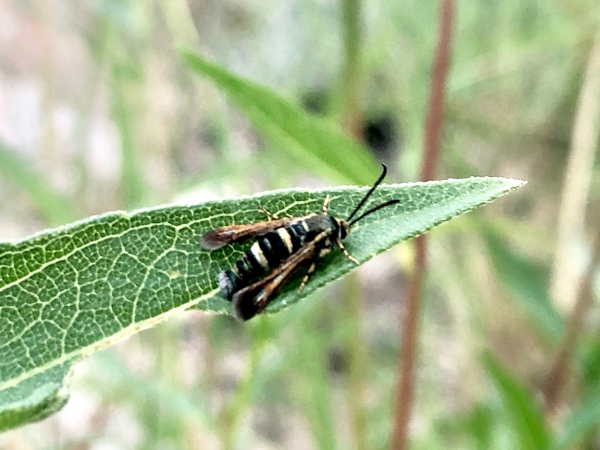
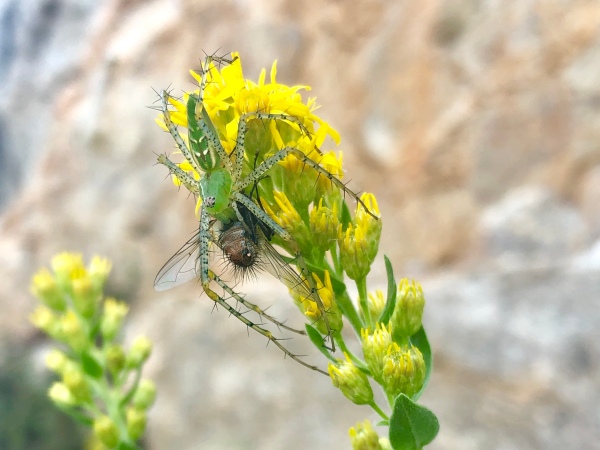
Day 8 – Santa Rita Mountains, Montosa Canyon, Arizona (halfway up)
We decided to visit Montosa Canyon to take another shot at Deltaspis tumacacorii and also see if maybe we could find more Acmaeodera resplendens. We didn’t see many flowers along the way up the canyon until about the halfway point. When we did start seeing them we made a quick stop to see what might be on them. I collected some of the more common Acmaeodera (rubronotata, decipiens, and amplicollis) off a few different yellow composite flowers, but we quickly decided to take a look at the higher elevations.

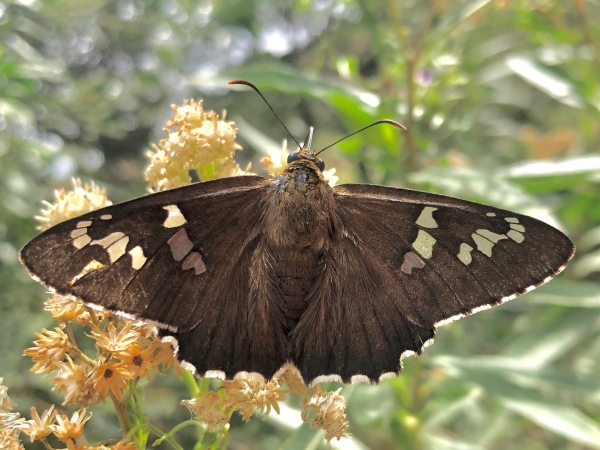

Santa Rita Mountains, Montosa Canyon, Arizona (entrance to Whipple Observatory)
The road was gated past the km-13 point—Jeff took the roadsides, and I took a ridgetop trail off to the south for a little over a mile. The panoramic views were spectacular, and at the southern terminus I stood at the edge amidst gale-force winds admiring the landscape! Acmaeodera were diverse and abundant, though not quite as abundant as yesterday on Mt. Lemmon or a few days ago on Kitt Peak. However, I did get another nice series of A. resplendens, along with decipiens, rubronotata, amplicollis, and amabilis. Host flowers were collected for most of these: Hymenothrix wrightii, Erigeron neomexicanus, Linum neomexicanum, Heliomeris multiflora, Verbesina enselioides, Heliopsis parvifolia, Heterotheca subaxillaris, and Machaeranthera tanacetifolia. I also collected a small series of A. decipiens perching on grass stems and a very cool-looking wasp—black with a bright orange thorax and whitish abdominal apex [edit: I believe this is the scoliid Psorthaspis portiae].
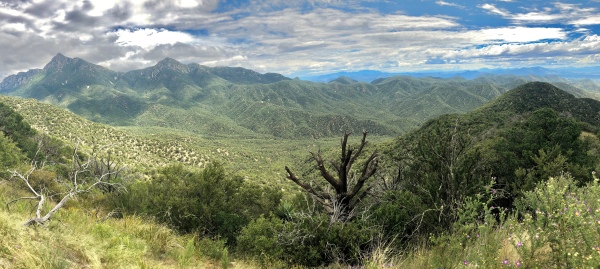
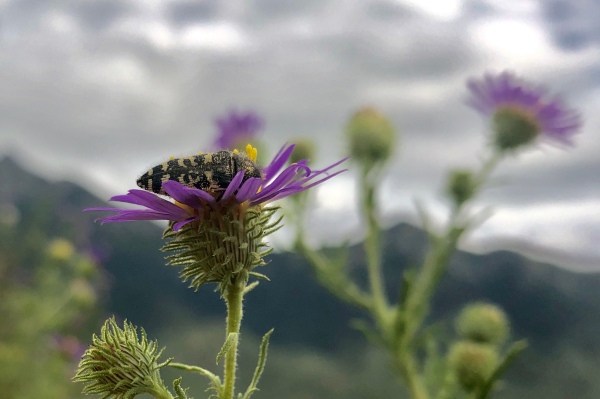

Santa Rita Mountains, lower Montosa Canyon, Arizona
We stopped at a spot near the bottom of the canyon on the way out to see what was going on at the lower elevations. The answer—not much! There were a variety of woody shrubs and other plants in bloom, but the area seemed rather “wilty”. I think this area has a lot of potential, we just didn’t hit it at the right time. I did take an impressively huge tarantula hawk, just because.


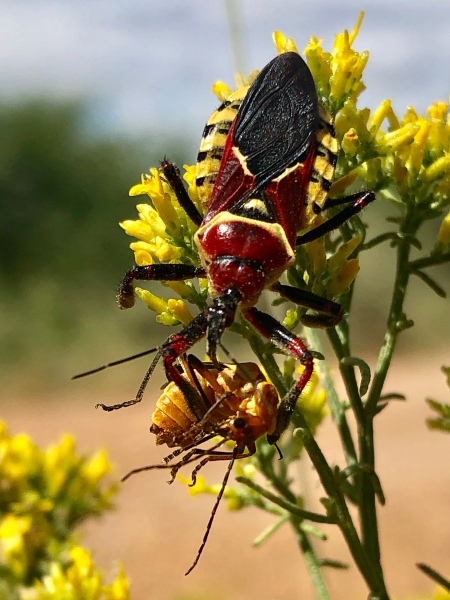

Flats below Montosa Canyon, Arizona
I was a bit disappointed at not finding any beetles at what seemed would be the last collecting stop of the trip. But on our way out we saw a patch of Isocoma tenuisecta in bloom in the lowlands some distance west of the entrance to the canyon—just what we were looking for! Jeff and I each quickly found Crossidius suturalis individuals on flowers of the plants and continued searching up and down along the roadway. We didn’t find any more for awhile but when I got back to the area where I started I spotted another one sitting on a plant on the other side of the barbed-wire fence. I extended my net handle to the max, maneuvered it in position, took an assertive swipe, and got it. Just as I was putting it into the bottle, I saw another one take flight from a plant right beside me. I hadn’t closed the bottle yet but didn’t want the other one to get away, so I capped my thumb over the opening, awkwardly wielded my net into position one-handed, chased after it and took a swing and got it, too! (More often than not these situations end up with me losing both specimens!). There was also a good amount of Hymenothrix wislizeni along the roadside, off the flowers of which I collected several Acmaeodera gibbula, A. disjuncta, and A. rubronotata. This is probably the last collecting locality of the trip, so I’m happy to end up having success with this subspecies of Crossidius (C. suturalis intermedius), which we havn’t found in large numbers on this trip. Just after leaving the site, we saw a bobcat on the side of the road—my first one! Unusual to see one in the middle of the day—it was a small one, must’ve been quite hungry!
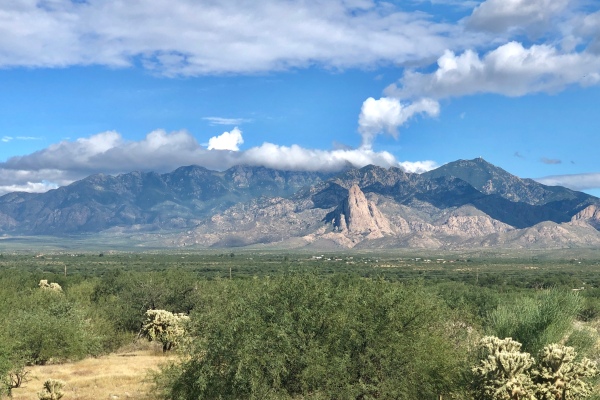
Phoenix, Arizona (epilogue)
Bill Warner was kind enough to host Jeff and I for our last night in Arizona prior to returning home tomorrow. What an amazing collection he has built, and his use of flight-intercept traps in recent years has turned up even more amazing beetles. I was happy to also meet Andrew Johnston and Evan Waite, who joined us for dinner.


©️ Ted C. MacRae 2019


